Foods that are yellow aren’t just cheerful to look at. They’re also brimming with plenty of nutrition. Discover more about foods that are yellow to see if your favorite yellow food has mega-health benefits, and learn more about the yellow foods you could be incorporating into your daily meals.
This post contains affiliate links.
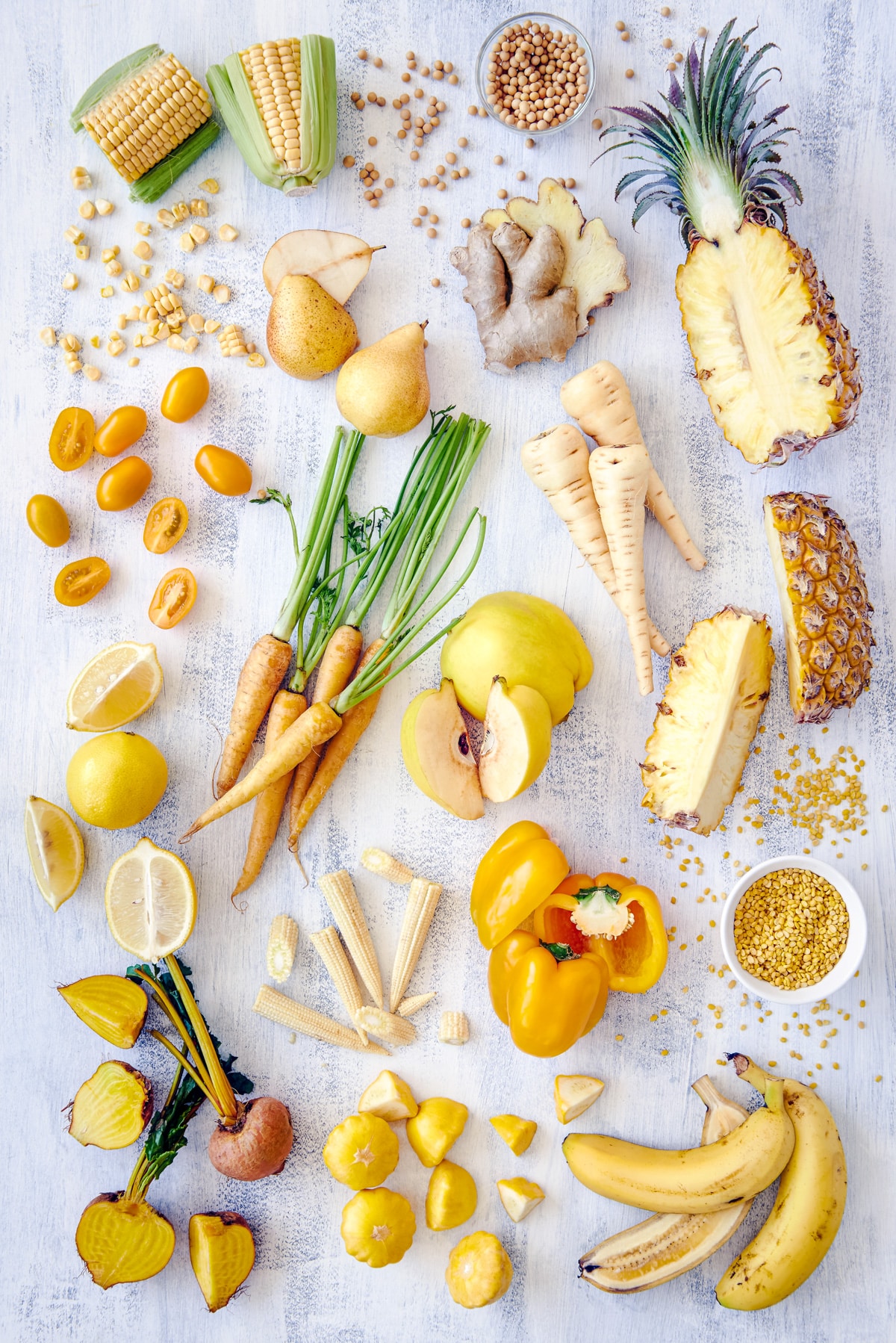
How Do Yellow Foods Get Their Color?
Foods that are yellow get their color from pigments they naturally contain. Most commonly, yellow food contains carotenoids which produce a yellow or even deep orange hue.
Another type of pigment yellow-colored food contains is anthocyanins which are present in a pale yellow. These have antioxidant properties to protect the plants. But the good news is that by consuming them, we can benefit from them too.
Why Are Yellow Foods Good For You?
Yellow foods are rich in their own bounty of vitamins and minerals to help your body thrive. Some fruits that are yellow, like bananas and pineapples, for example, have loads of vitamin C and potassium. Yellow food like mangoes has plenty of fiber and vitamin C too. Certain yellow foods are known to help with heart health, like lemons.
The List: 100 Foods That Are Yellow
What food is yellow? On this list of yellow foods, you’ll find yellow vegetables, fruits, beans, grains, and more to fill up your plate. Improve your health by eating a rainbow of natural foods and ensuring that yellow-colored foods are on there!
What vegetables are yellow?
Let’s start with yellow veggies!
1. Amarillo Carrot
These bright yellow carrots are crunchy and sweet. Yellow carrots have a similar nutrient profile as your traditional orange carrots.
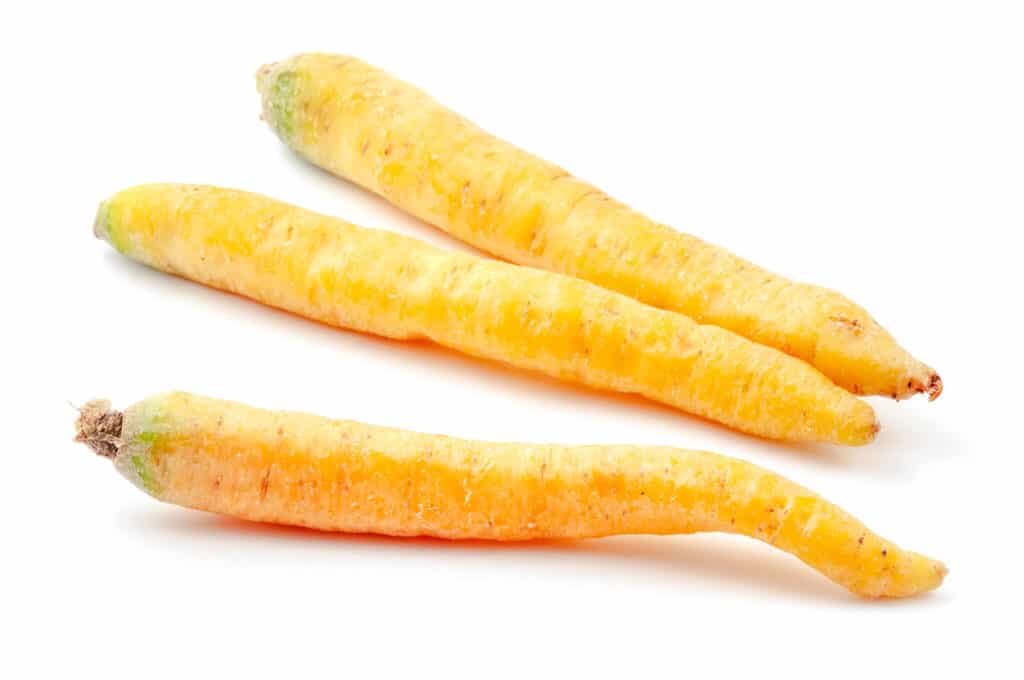
2. American Purple Top Rutabaga
This rutabaga has a cream to light purple skin, but its flesh is bright yellow. It has a sweet, mild taste. This vibrant rutabaga is perfect for enjoying raw or cooked. It is high in fiber, potassium, vitamin C, and vitamin B6.
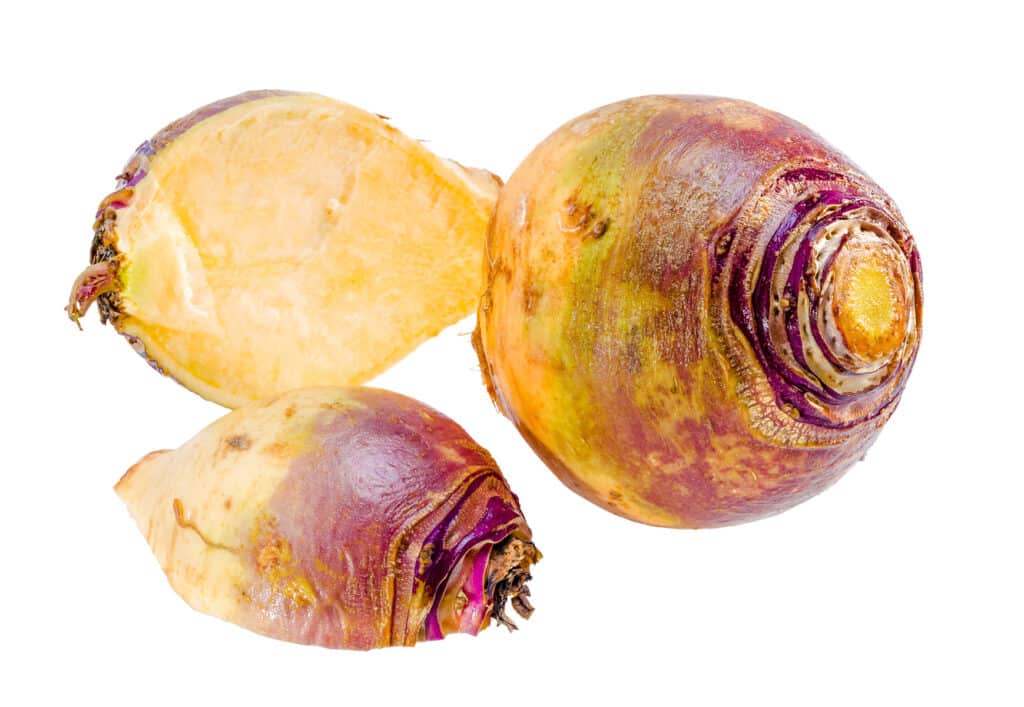
3. Ginger
Ginger natively grows in Asia; the rhizome of this yellow food is where the spice comes from. It has been used in Traditional Chinese Medicine for centuries, but it is also a prominent way to flavor food. Ginger can help reduce inflammation and is often used for quelling tummy troubles. It can perk up a bland dish, so give this yellow food a try!
If you’re interested in incorporating ginger into your diet, think about adding a bit to your next smoothie. Alternatively, this tasty Lemongrass Pho would be a great recipe to try out the ginger in!
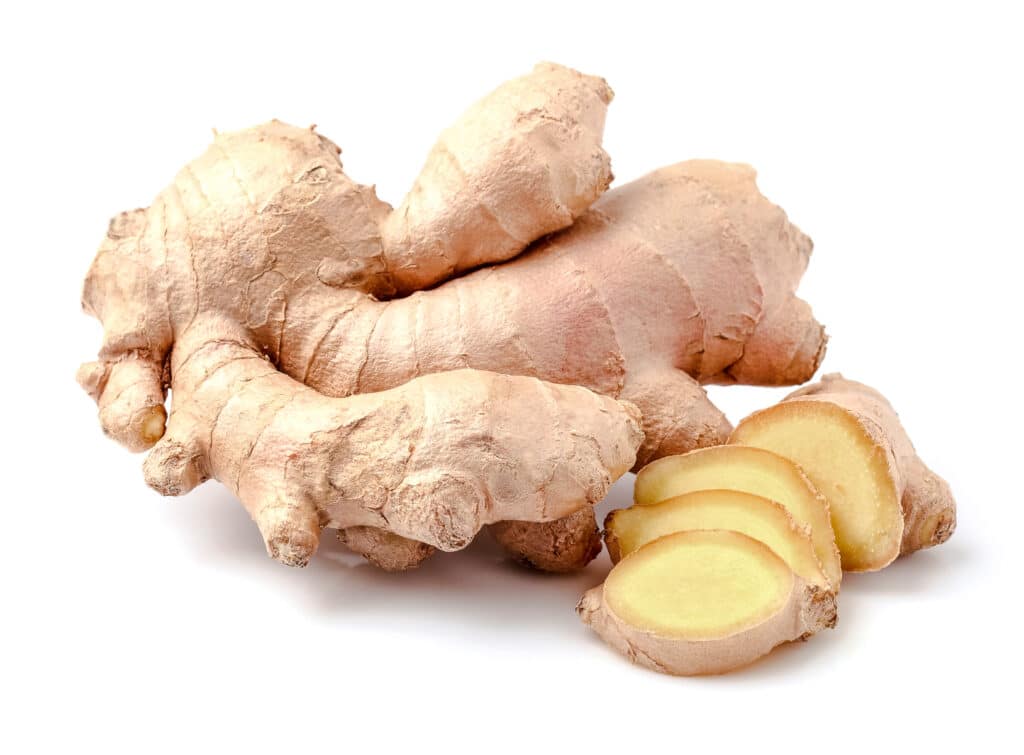
4. Golden Beauty Chinese Cabbage
This nutritious cabbage is white to light, vibrant yellow in color. It has been grown for over 1,000 years in China. This tasty buttery cabbage is rich in vitamin A and vitamin C.
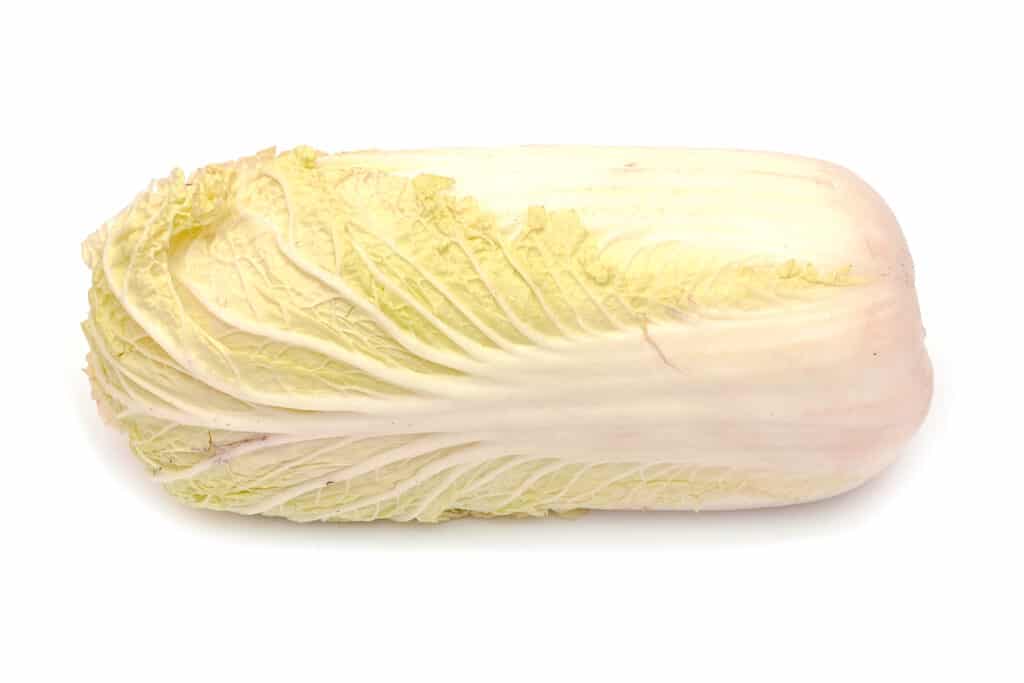
5. Golden Beet
If you’re not exactly a fan of red beets, golden beets are the yellow food for you. It is sweeter than the red variety, though it has a similar nutritional profile. That means folate, fiber, and manganese, among others, will be added to your diet when you add golden beets to your plate.
Are you a fan of lemonade? Try using these golden beets in this Beet Lemonade recipe.
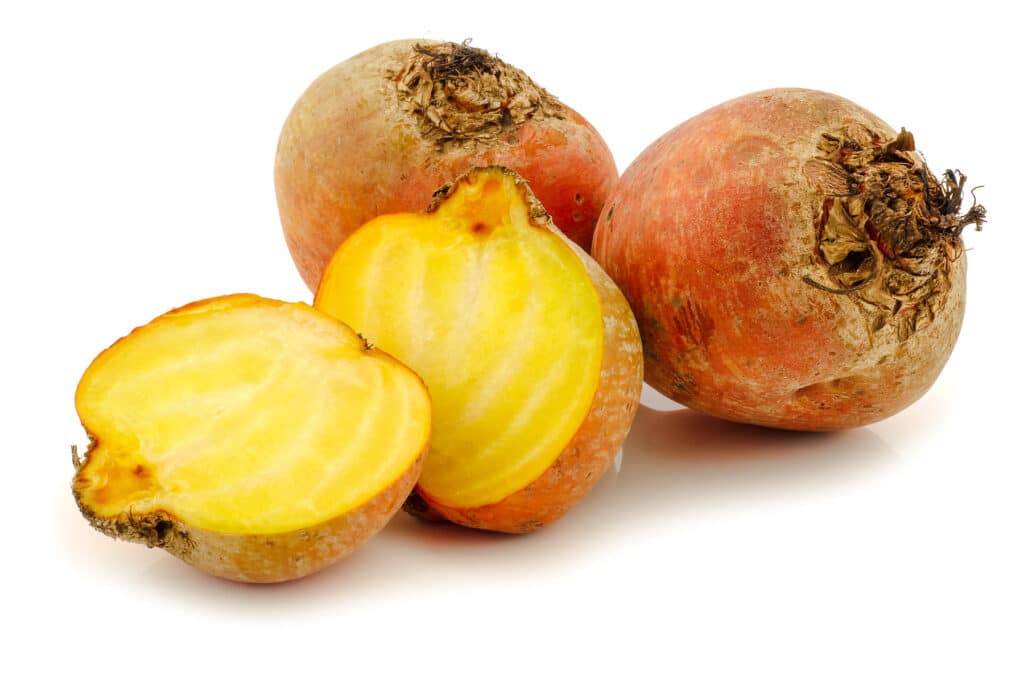
6. Helios Radish
As heirloom radish originating from Czechoslovakia. This yellow radish is olive-shaped. They have a mildly sweet flavor with a bit of peppery taste. It is an excellent source of vitamin C.
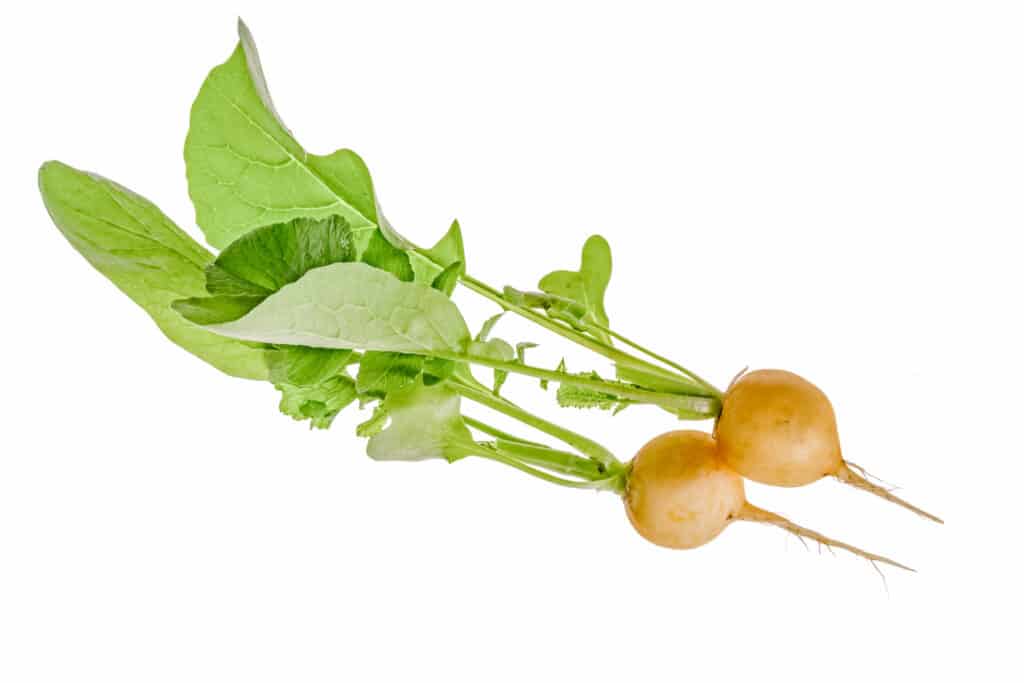
7. Jantar Radish
This oblong radish has a golden-yellow to tan color. The radish is tasty and spicy! Enjoy them fresh or cooked. This yellow radish is rich in vitamin C.
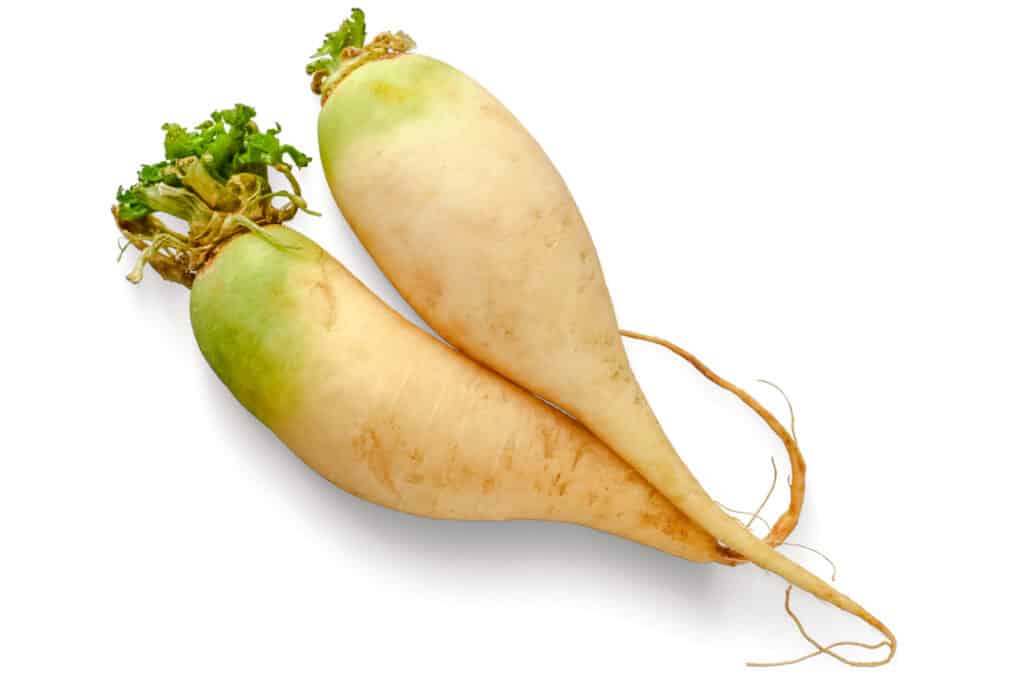
8. Jaune Obtuse Du Doubs Carrot
This tasty carrot is a vibrant lemon-yellow color with a slight green inner core. It has a traditional conical carrot shape with bright green leaves. This yellow carrot is deliciously sweet, and its flavor deepens with cooking. This yellow carrot has great nutritional value and is an excellent source of dietary fiber.
These carrots would taste amazing in this Carrot Ginger Soup!
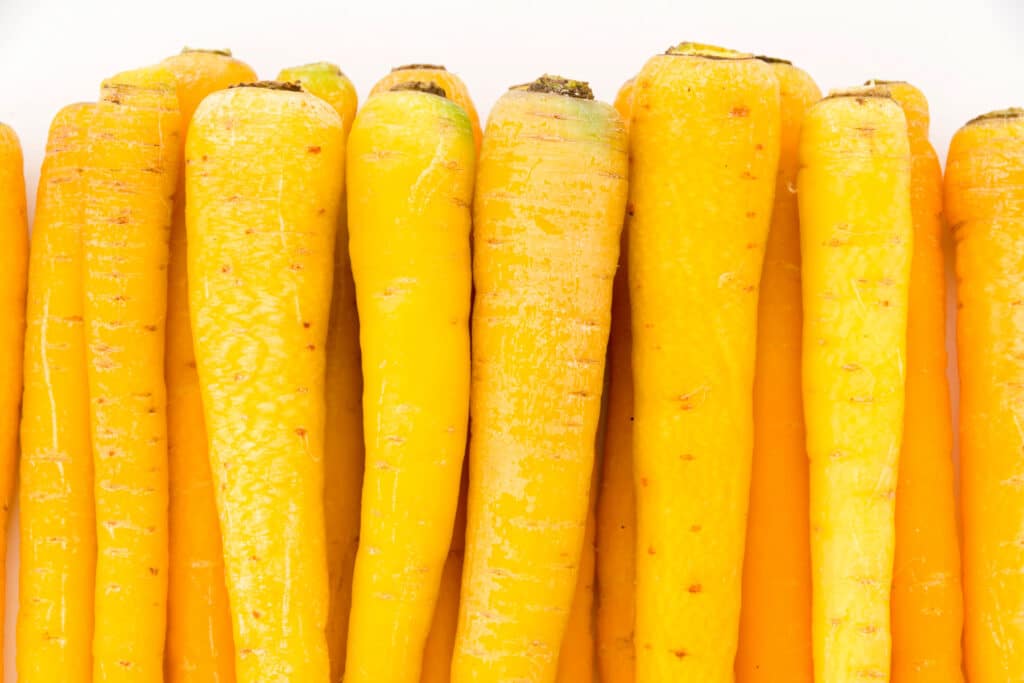
9. Jersey Yellow Sweet Potato
Did you know that there are yellow sweet potatoes? Creamy yellow skin with cream-white flesh. This tasty sweet potato is perfect for homemade sweet potato fries or soups.
10. Navone Yellow Cabbage Turnip
This tasty root vegetable is also known as the Swedish turnip or rutabaga. It’s a vibrant light yellow skin with soft creamy yellow flesh. They can be enjoyed cooked in pretty much any way, including baked, broiled, fried, mashed, stir fry, soups, and more! It is an excellent source of vitamin C.
11. Nicola Potato
These potatoes resemble russet potatoes but are smaller. They have tan to brown skin with vibrant yellow flesh. They keep their shape well, so they are great for stuffed-baked potatoes!
They are low on the glycemic index, so all can enjoy them! They are rich in vitamin C and B6. In addition, they are a good source of manganese, potassium, copper, phosphorus, and fiber.
Interested in recipe ideas for potatoes? Try this Vegan Potato Leek Soup Recipe.
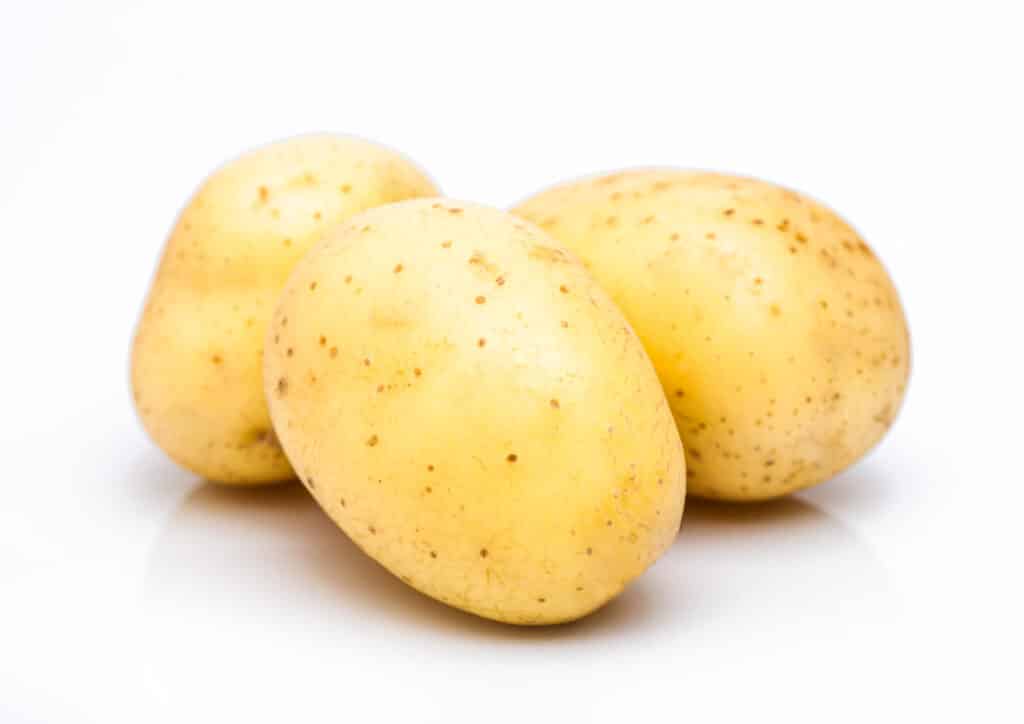
12. Oriole Orange Swiss Chard
Most people think of Swiss chard as being green. However, this food belongs to the list of foods that are yellow because of the stalks. When they mature, they turn bright yellow-orange.
Swiss chard is an incredibly nutrient-dense food. It is rich in vitamins K, A, C, and E. It is also an excellent source of magnesium, copper, manganese, iron, and potassium. Swiss chard is high in antioxidants helping your body fight free radicals.
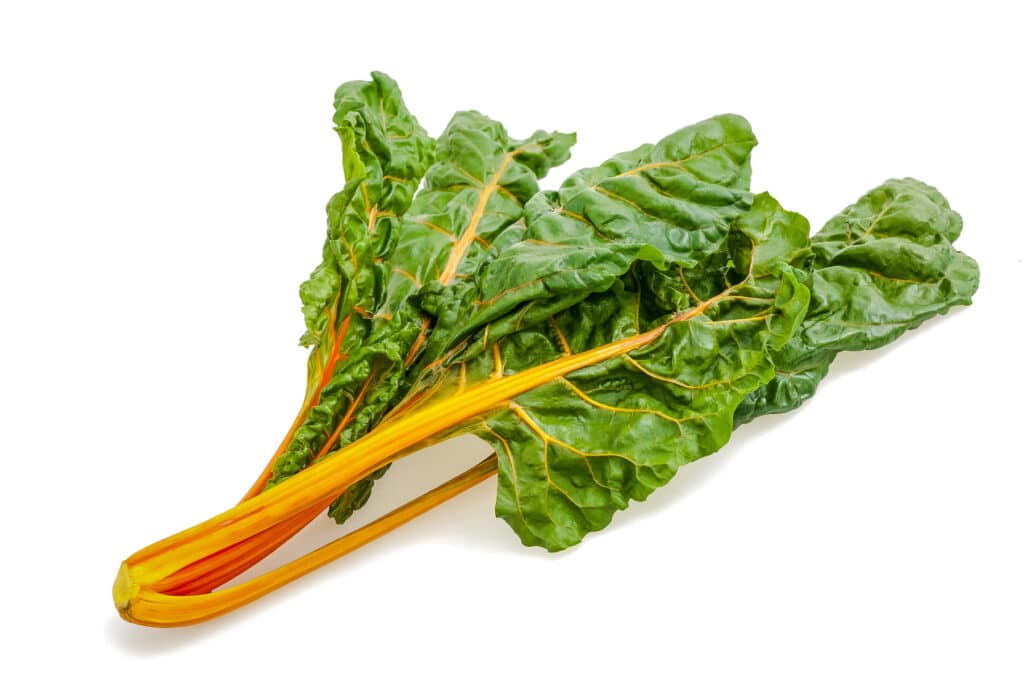
13. Turmeric
This flowering plant comes from the ginger family (Zingiberaceae). You use the rhizomes for cooking which imparts a lovely golden hue to your foods. In soups, sauces, and stews, drinks. Turmeric itself can be a very vibrant orange color when it is fresh and raw. It imparts a vibrant yellow color when used to make teas or when added to food.
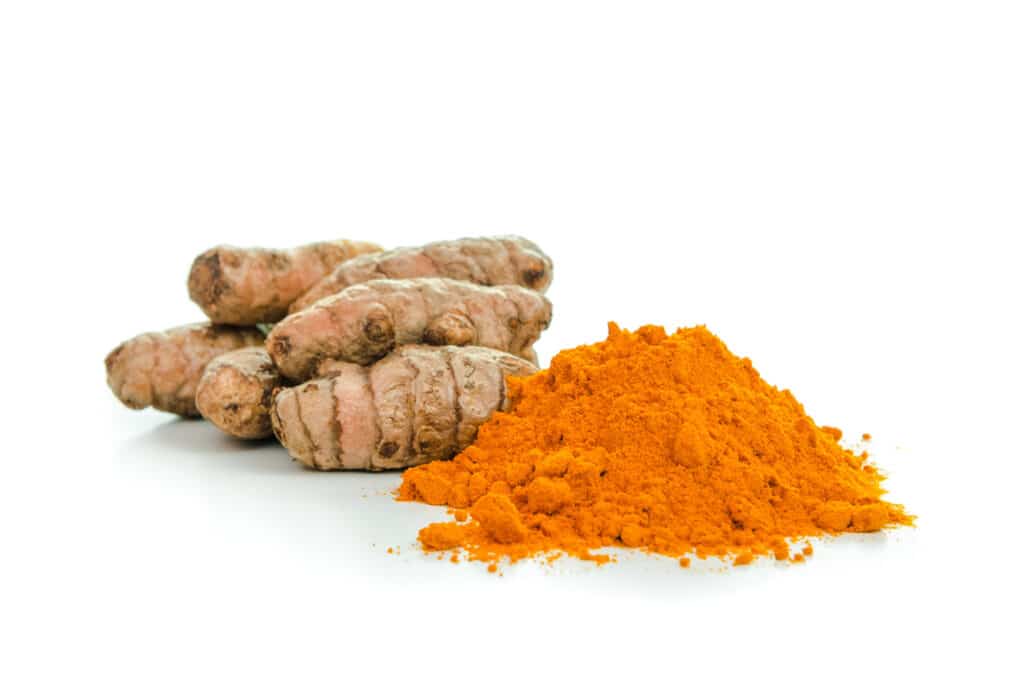
14. Uzbek Golden Carrot
These carrots are a vibrant yellow.
They are crunchy and sweet. It originates from Uzbekistan and is very popular all across Asia. Perfect for eating fresh or enjoying them cooked.
15. Walla Walla Sweet Onion
These sweet onions have a golden-tan paper skin and yellow flesh. It has an incredibly sweet, mild flavor. They are tasty on sandwiches and salads and cooked like in this Baked Home Fries.
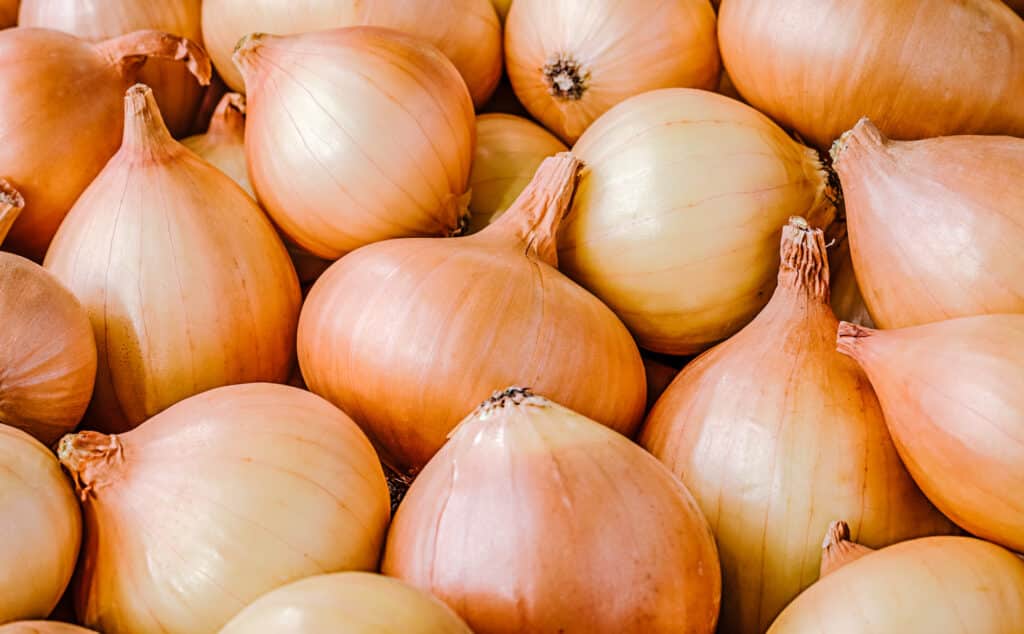
16. Yellow Moon Carrot
Light sunshine, yellow inside and out. It brings a sweeter flavor and a nice smooth texture. They are perfect for dipping or in your favorite cooked meal. Yellow carrots are a good source of antioxidants and vitamin A.
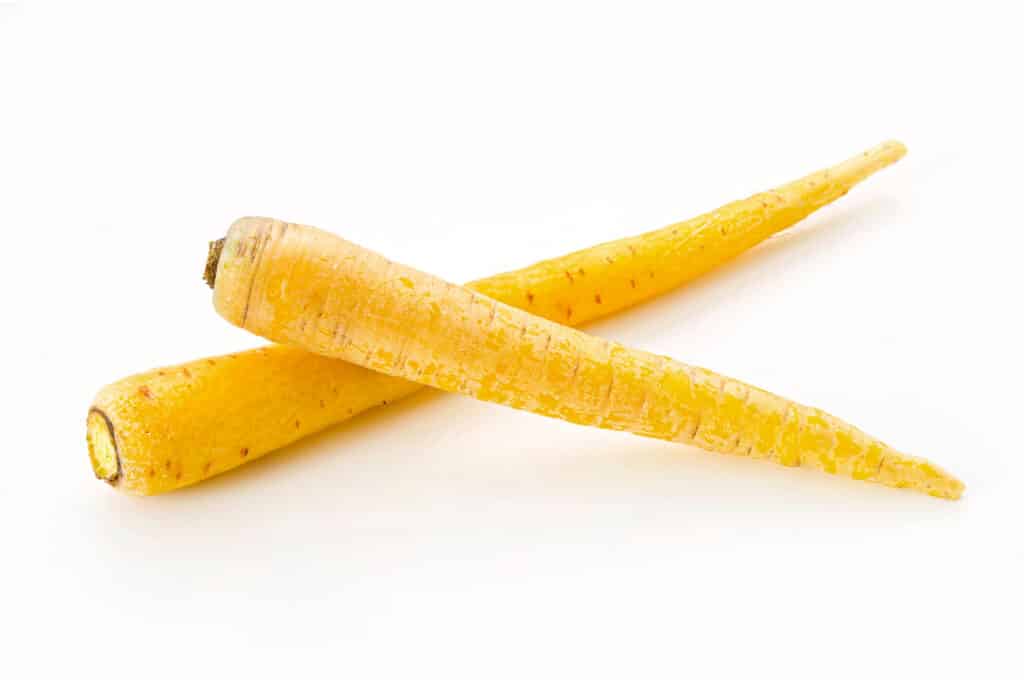
17. Yellow Cauliflower
Even as a yellow food, this type of cauliflower is part of the cruciferous vegetable family. It’s got the same texture and taste, the only difference being in the color and the content of carotenoids when compared to white or purple varieties. So, this yellow cauliflower will have more of them than the white ones. It’s worth mentioning that is a great source of fiber
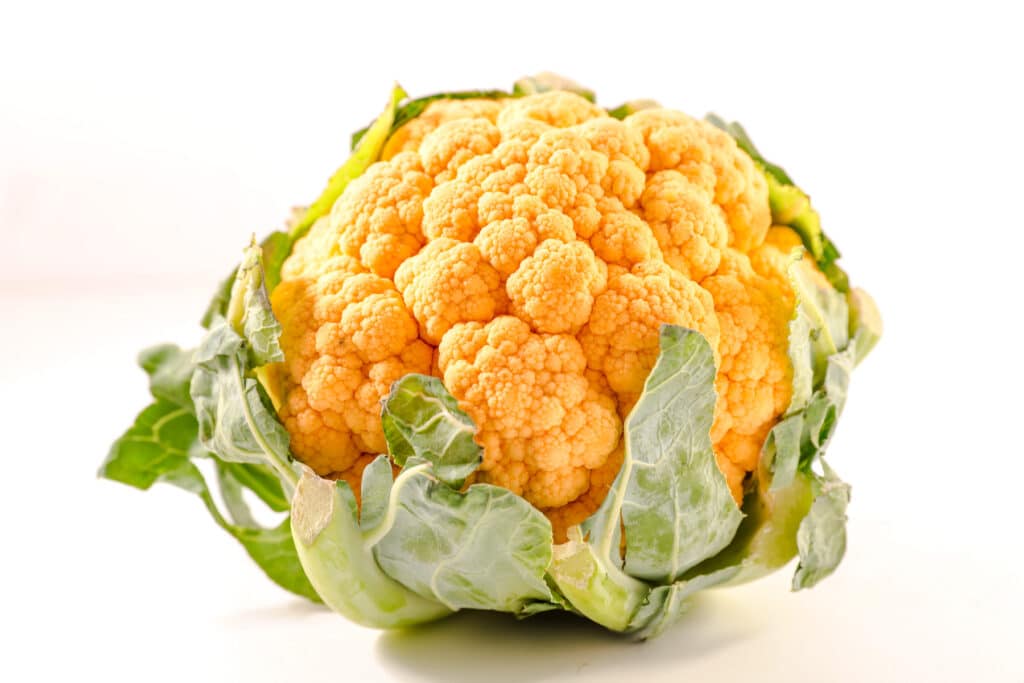
18. Yellow Finn Potato
This yellow potato has a buttery, ever so slightly sweet flavor. Ideal for mashed potatoes or homemade potato salad. They are also perfect in soups, fried, baked, broiled, or Homemade French Fries. Essentially, you can’t go wrong with these small yellow potatoes.
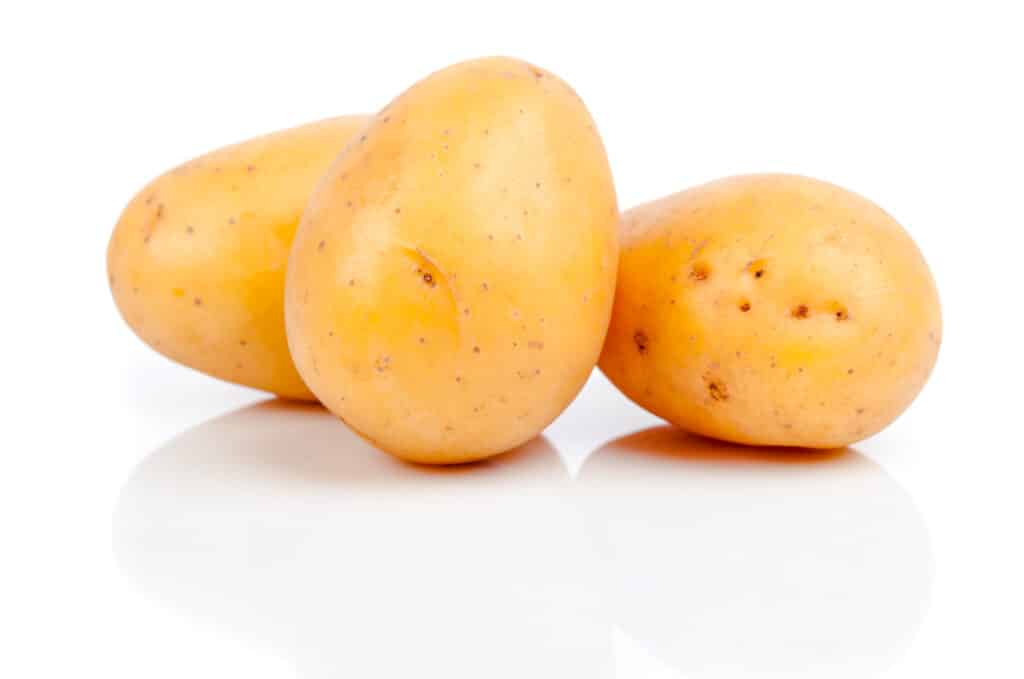
19. Yellow Heart Winter Choy
This winter Choy has a golden yellow center. It originates from China and is frost-hardy, so it can be grown and enjoyed almost year-round. It is a good source of vitamins C, K, A, and folate.
20. Yellow Of Parma Onion
An heirloom Italian onion with golden skin and yellow flesh. They are late-season onions. This yellow onion is a good thing to add to your garden because they store incredibly well. Yellow onions are a good source of vitamin B6.
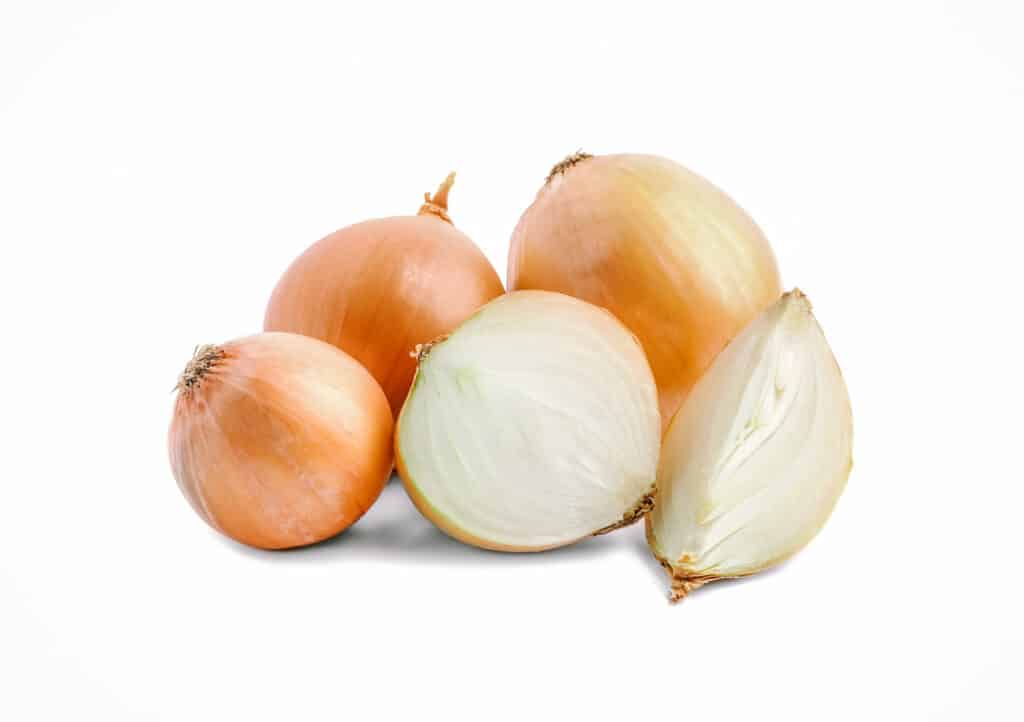
21. Yukon Gold Potato
Many potatoes have a yellowish hue to them, but Yukon gold is the yellowest by far. It was bred in the 1960s in Ontario to have thin skin and yellow flesh. It has high levels of vitamin C and potassium. Plus, these are so versatile to prepare. You can make any potato dish with them! They are perfect in this Vegan Potato Soup!
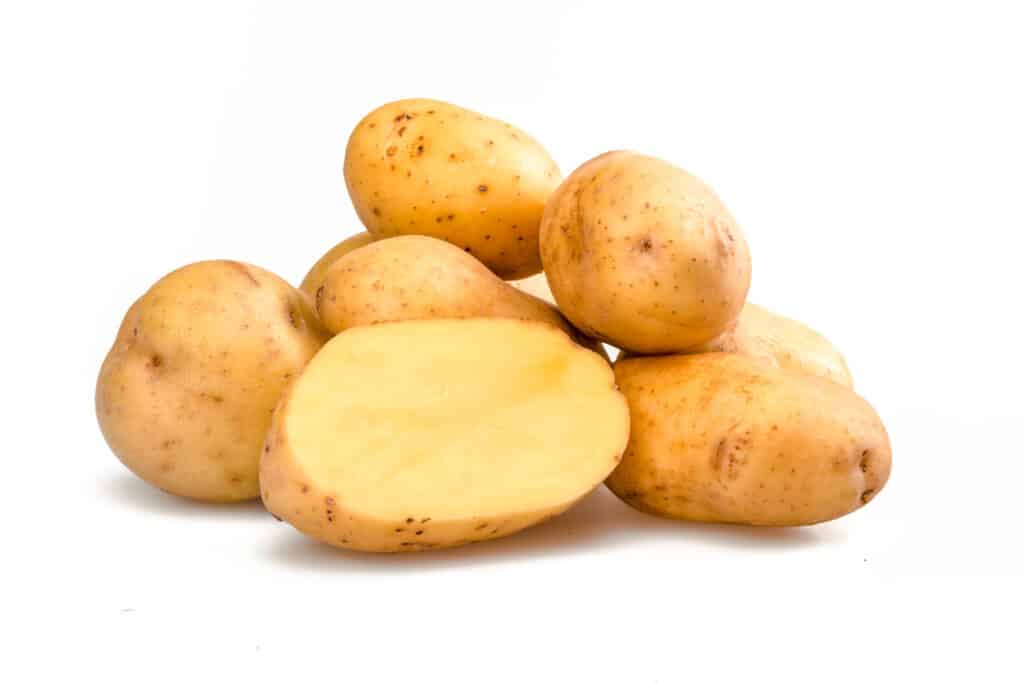
22. Yellow Sweet Spanish Onion
When you have onions on your shopping list, you may not give it much thought when you throw them into your cart. But the yellow variety has a higher sulfur content, making it stronger and more complex in taste. And the added bonus is that it has more antioxidants than other types of onions! However, cooking will reduce those levels a bit, so eating them raw is a great option.
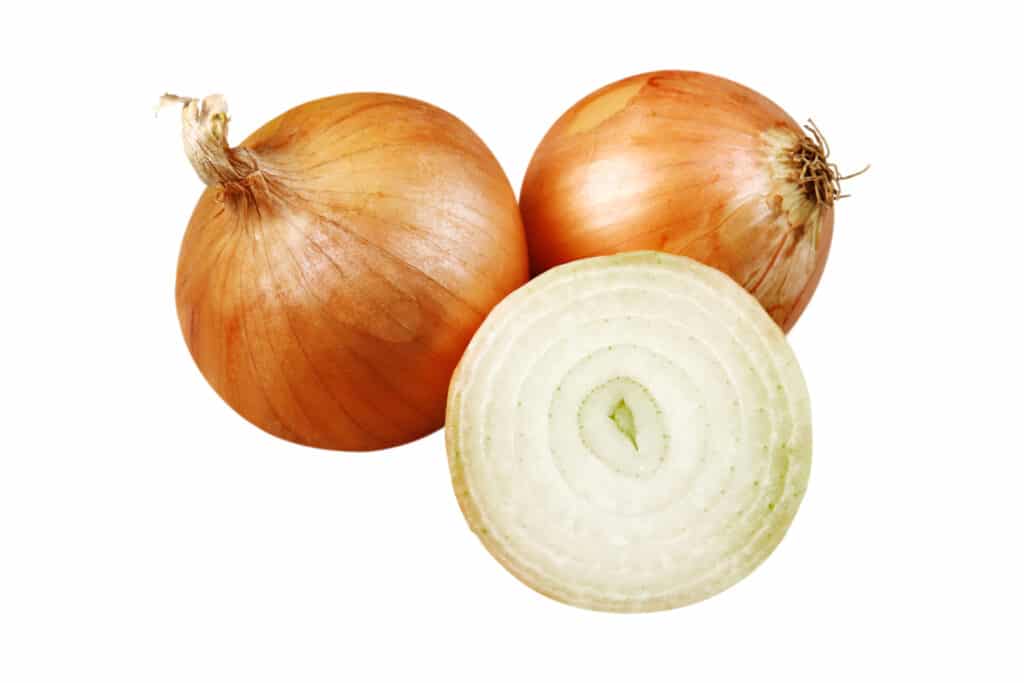
Are you interested in learning about black foods? Check out this blog post, 85 Foods That Are Black!
Fruits That Are Yellow
Now that we’ve covered yellow vegetables let’s discuss another portion of yellow foods. Next up are fruits that are yellow and the benefits they hold for you. Whole fruits, including tropical fruit, citrus fruits, yellow peppers, yellow varieties of squash, and more!
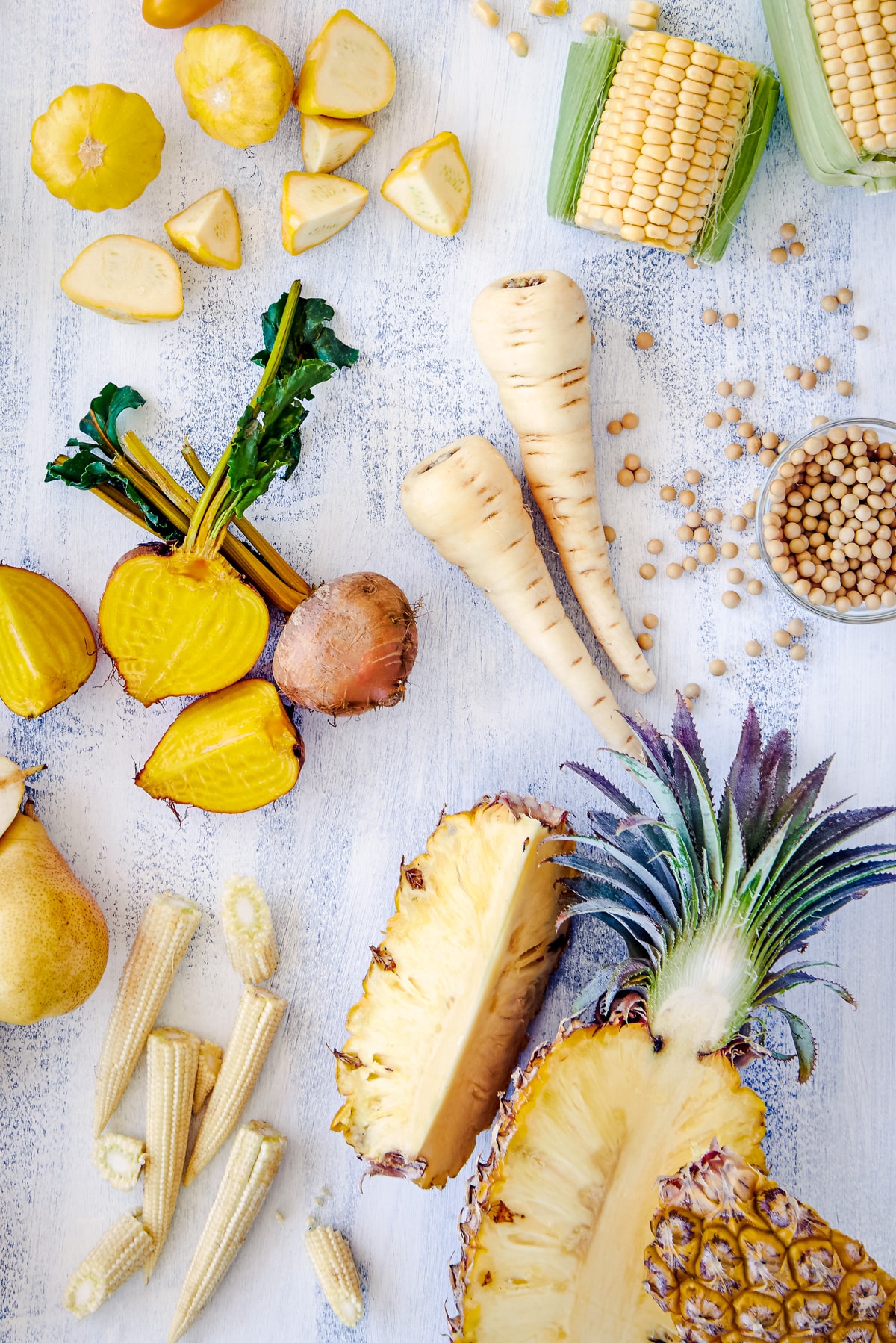
23. Asian Pear
This yellow fruit is also known as the Japanese pear, Taiwan pear, and Korean pear, among others. It’s a bit like an apple in shape but has a sweet and tart taste. They come from the Rosaceae family and deliver proper vitamin C and antioxidant levels to you. Ideal for bolstering immunity and helping keep you full with fiber, you’ll only wish you started eating these nutritious pears sooner.
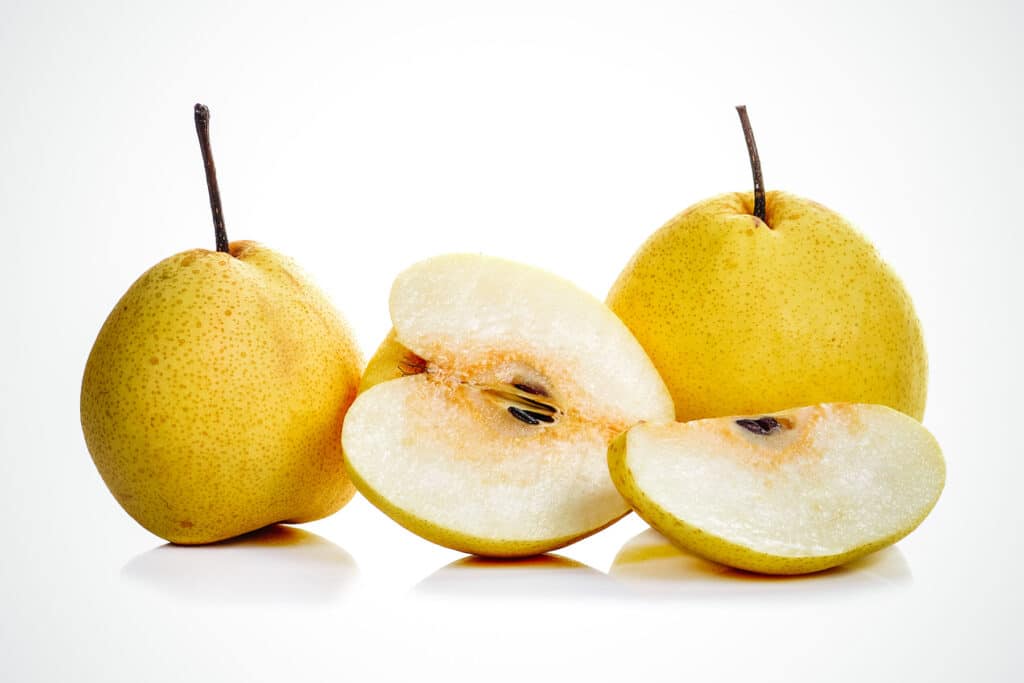
24. Ataulfo Mango
Also called the Manila mango, this tropical yellow fruit has low saturated fats, cholesterol, and sodium. They are an excellent source of copper and vitamin C and a good source of vitamins B6, A, E, and folate.
If you like the taste of mangoes but find the flesh to be stringy at times, this mango has stringless flesh, making it perfect for enjoying raw.

25. Baby Blue Hubbard Squash
This rotund squash’s skin is a unique blue-grey color. However, its flesh is a golden yellow. This yellow squash is an excellent source of vitamin A and vitamin C. In addition, it is a good source of potassium.
This squash is delicious baked and enjoyed with a little drizzle of olive oil, salt, pepper, and your favorite herbs. If you’re looking for something more luxurious, it is delicious in soups or tossed on top of your favorite green salad.
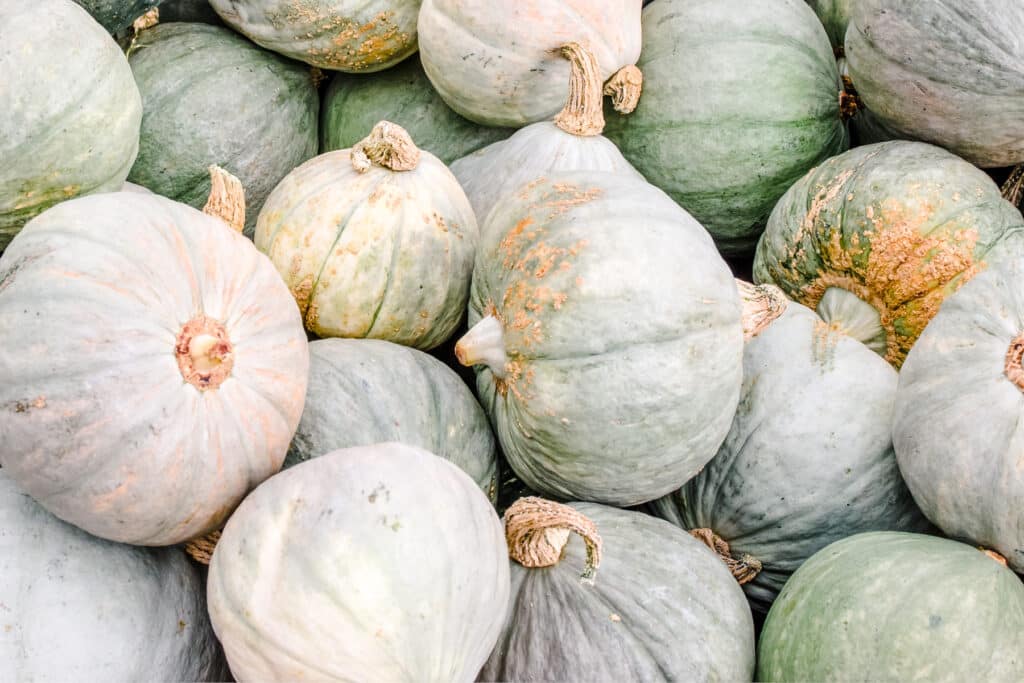
26. Bartlett Pear
Another pear on our list of yellow foods. The bartlett pear is a good source of fiber! It is also an excellent source of copper and potassium. These taste so good, you’ll forget they’re good for you!
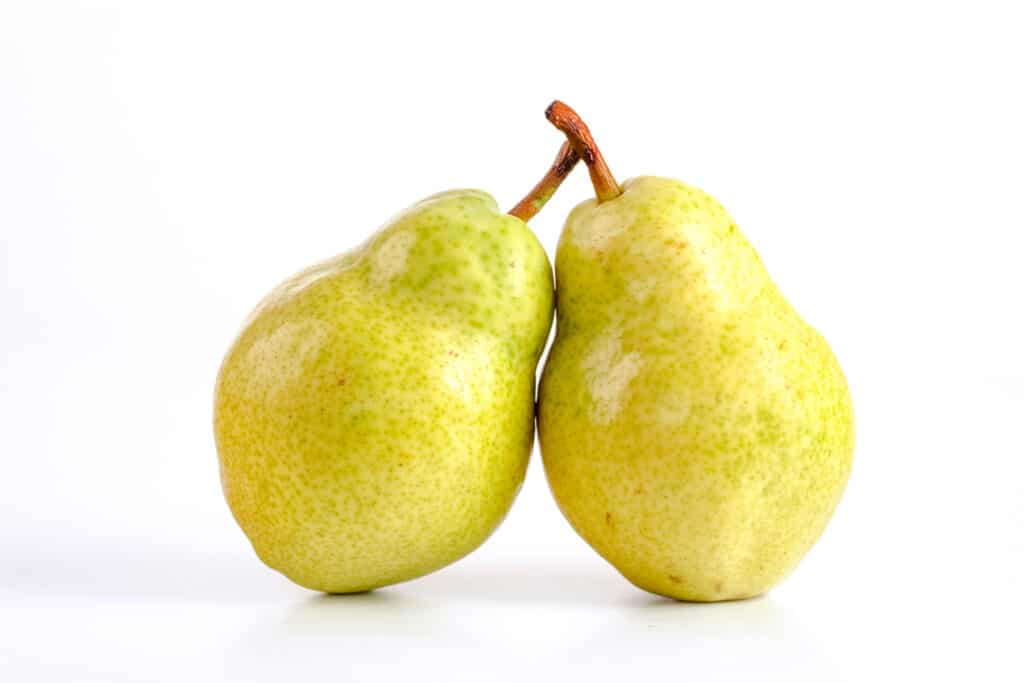
27. Biquinho Yellow Hot Pepper
This small hot pepper originates in Brazil. One two-foot-tall plant can grow over 100 peppers! Talk about incredible! These spicy yellow peppers are tasty raw, cooked, or pickled.
28. Canary Bell Pepper
This vibrant yellow bell pepper starts out green and ripens to yellow. It is absolutely divine in salads, or dip it in your favorite hummus recipe. Yellow bell peppers are an excellent source of vitamin C and a good source of copper, potassium, and vitamin B6.
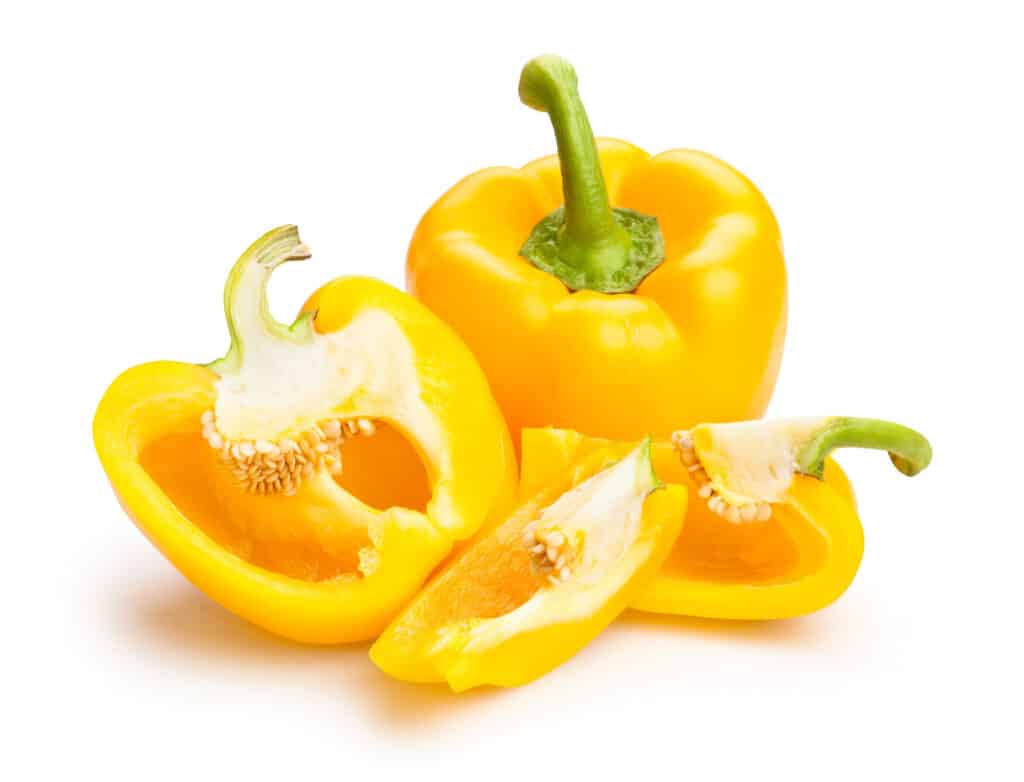
29. Canary Melon
In the Inodorus group, the canary melon has a distinctive appearance: bright yellow and elongated. It tastes a bit like cantaloupe and Asian pear melded together and is soft and juicy inside.
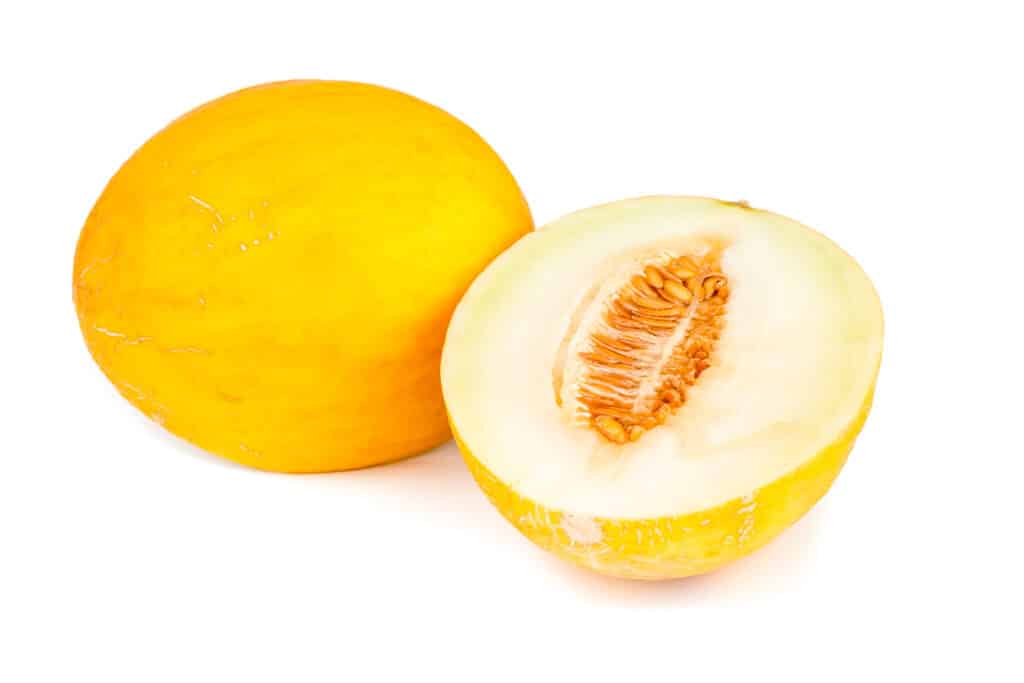
30. Cavendish Banana
Bananas are probably the yellow fruit that came to your mind from the start. And likely, you already eat a bunch of these often. But this fruit from the Musaceae family can give you a huge dose of the daily vitamins and minerals you need. They’ve got plentiful potassium, magnesium, pectin, antioxidants, and vitamins B6 and C. Keep your heart healthy with this yellow food, perhaps one of the easiest to find.
I love adding bananas to smoothies, like this Blackberry Smoothie Without Yogurt.
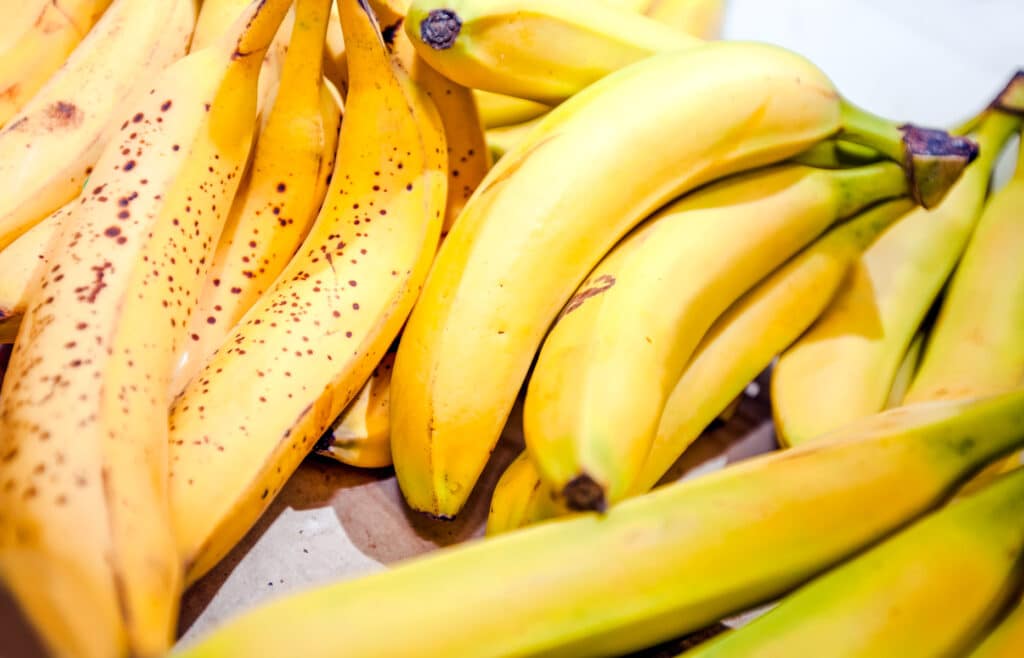
Interested in reading about orange foods? Check out this blog post, 52 Foods That Are Orange.
31. Delicata Squash
Believe it or not, this yellow food is a winter squash even though it’s in the same family as zucchini and yellow summer squash. There’s no peeling required for this picture-perfect squash. It features a creamy yellow flesh that’s naturally sweet.
Delicata squash is rich in vitamins A and C. It is also a good source of omega-3 fatty acids, copper, manganese, potassium, and vitamins B1, B5, B6, and B9.
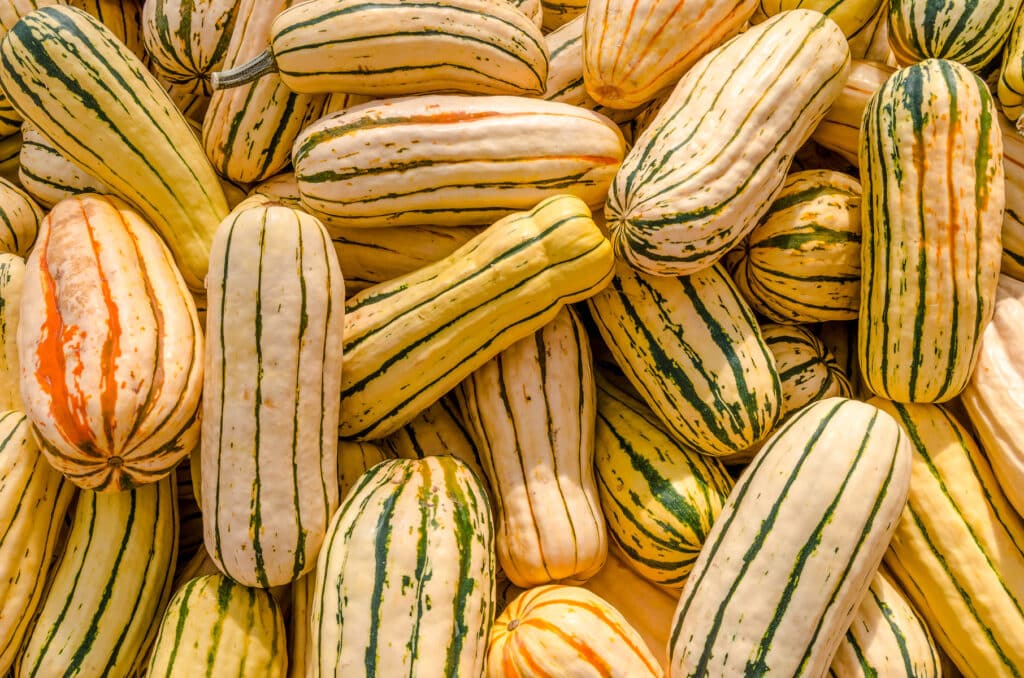
32. Desert King Watermelon
This mighty watermelon is light green on the outside and vibrant school bus yellow on the inside. These huge watermelons can weigh upwards of 20 pounds (9 kilograms). It is also one of the most drought-resistant watermelons.
Wondering how you can get more watermelon in your diet? Try these Easy Watermelon Popsicles.
33. Durian
In Asian countries, durian is incredibly popular. It is often considered the king of fruits. It can have a strong smell, but it can also be delicious.
Durian is one of the most nutrient-dense fruits in the world. It is rich in fiber, manganese, potassium, copper, riboflavin, thiamine, folate, and vitamins C and B6. It is also a good source of magnesium and niacin.
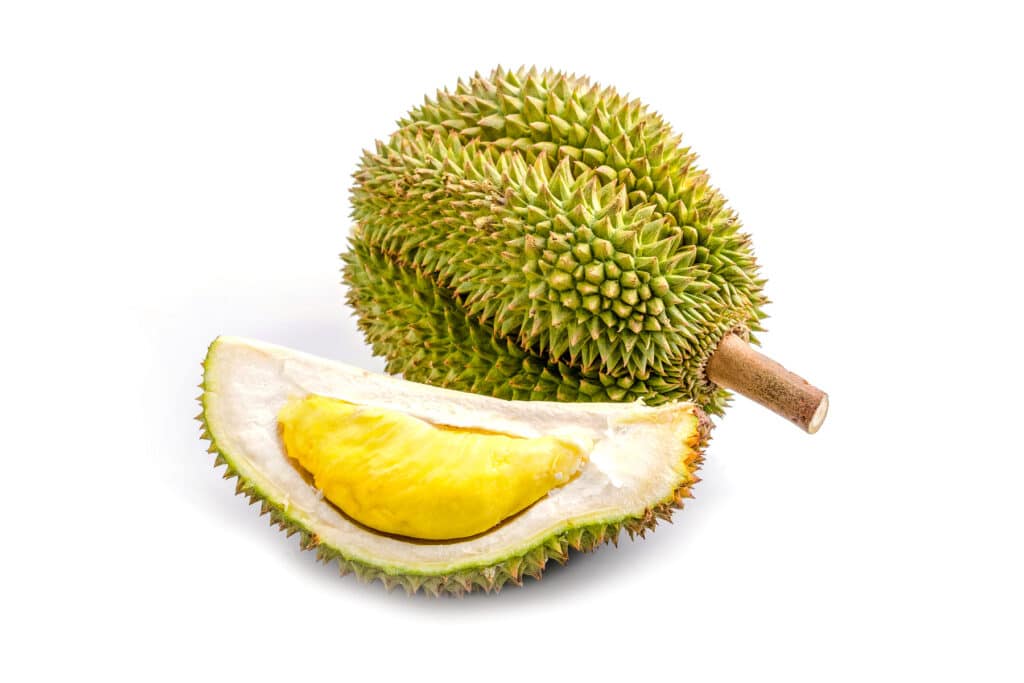
34. Early Prolific Straightneck Squash
This summer squash is a beautiful sunshine yellow color on the outside and creamy yellow on the inside. It is a low-calorie fruit and is a great source of vitamin C.
35. Egg Fruit
This vibrant yellow fruit is incredibly tasty. Some say it tastes similar to a baked potato but has the consistency of a hard-boiled egg! It is an excellent source of vitamins C and B3.
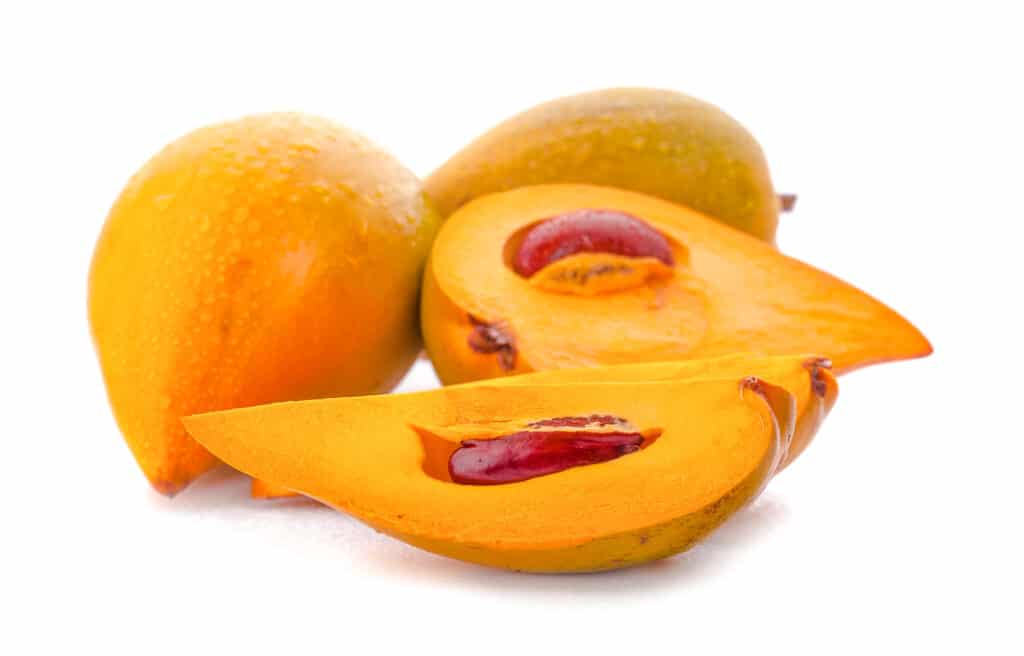
36. Golden Delicious Apple
This tasty yellow apple is ranked in the top 15 tastiest apples! It is a sweet apple with a mild flavor. It is excellent for eating raw as a snack.
I know it’s odd, but I tend to use sweet apples in tarts, crisps, and cobblers. This way, you don’t need to add as much sugar. This Apple Crisp With Beets is a show-stopper!
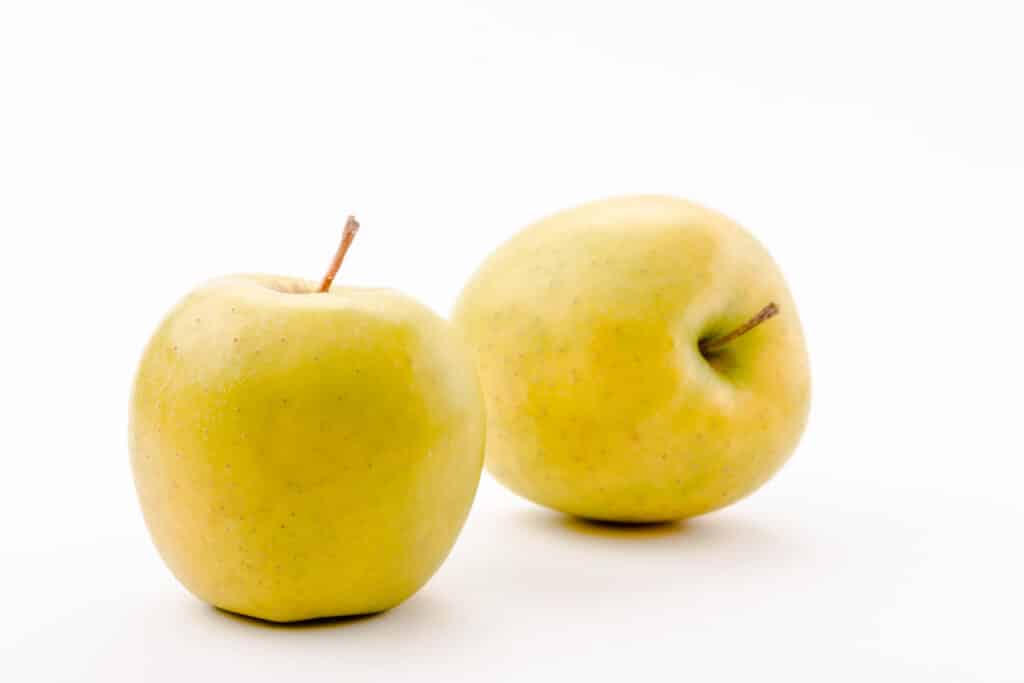
37. Ginger Gold Apple
A small to medium-sized apple with yellow skin. Fresh ginger gold apples can be tart but, with some time, develop a mild sweet flavor. This yellow apple is an excellent source of fiber.
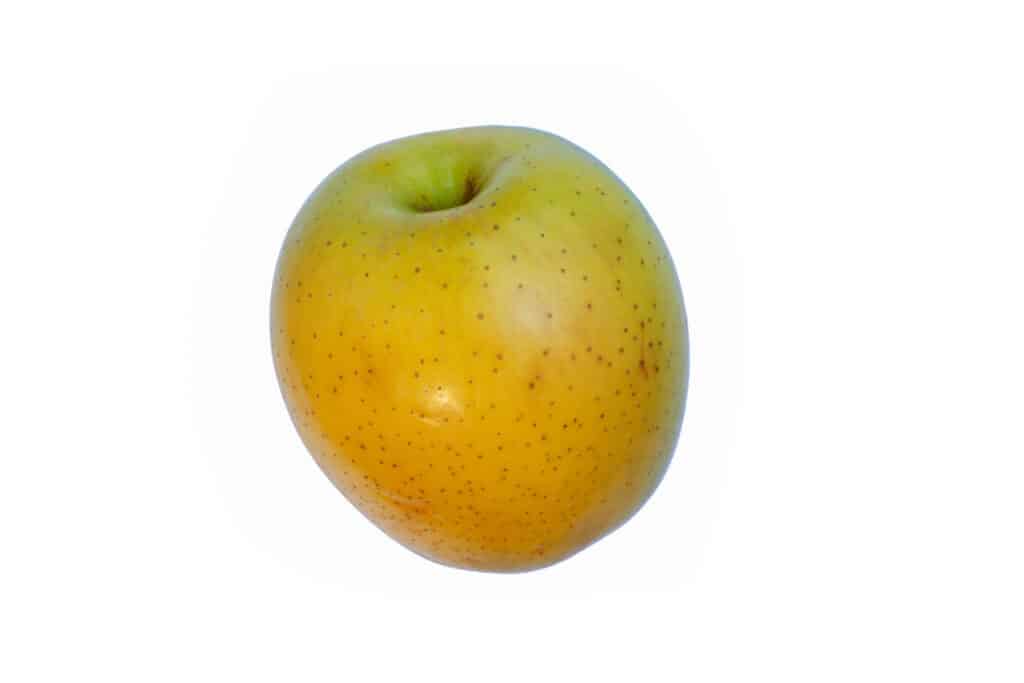
38. Golden Kiwi
If you thought kiwi was only green, gold kiwi is here to prove you wrong. Like the green ones, these are an excellent source of vitamins B9, C, E, and K.
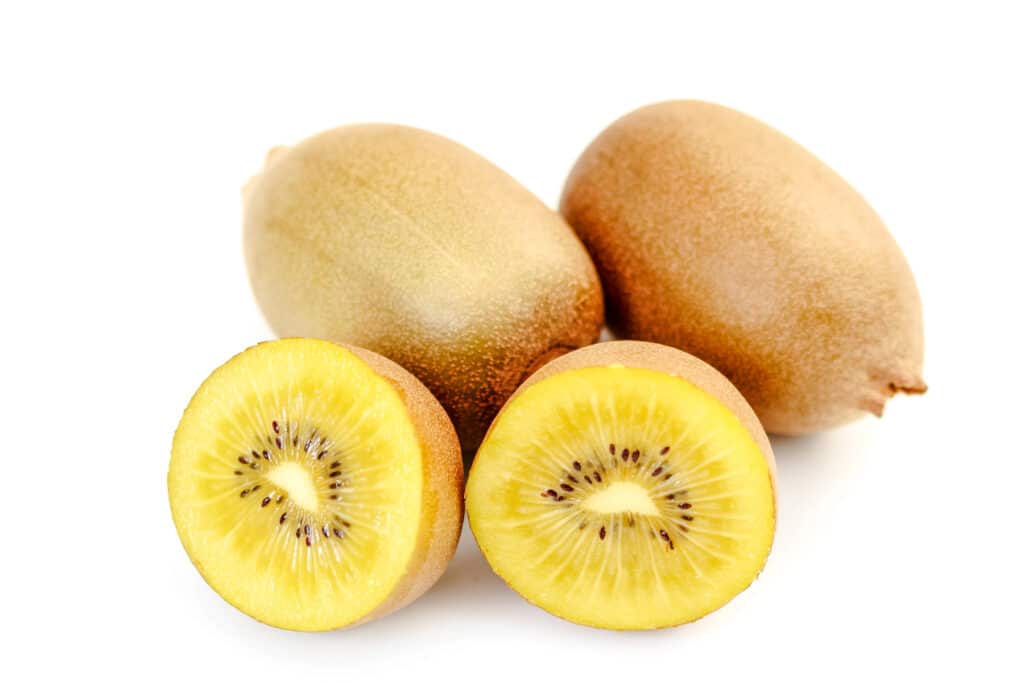
39. Golden Passionfruit
Lemon yellow, this passionfruit is delicious and enjoyed raw or cooked. It’s part of the Passifloraceae family. Forget the outside, for it’s what’s inside that counts with its yellow pulp and countless black seeds.
This yellow food is both sweet and acidic, and if you like the taste, you’ll be happy to know you’re getting amino acids, niacin, and riboflavin every time you enjoy one.
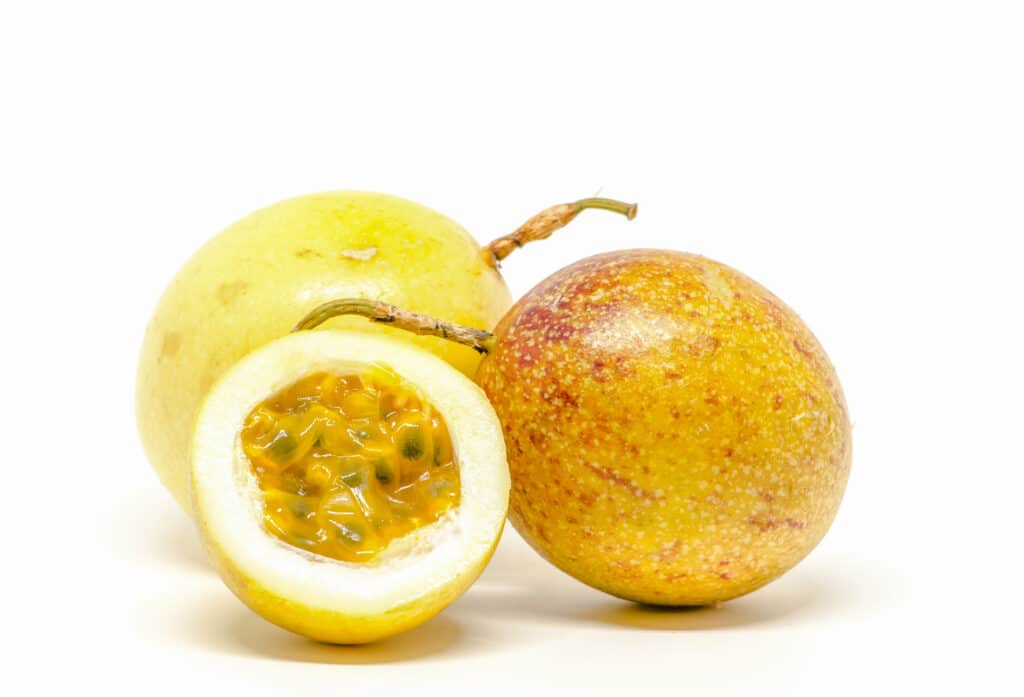
40. Golden Raspberries
This delightful raspberry is a golden honey yellow. If you find red raspberries too tart, this yellow food can help you out. It’s got vitamin C for better immunity and to protect your cells from oxidative damage. They almost taste floral but with a sweeter profile too. You can add them to salads or smoothies or simply enjoy them for a snack.
Try these yellow berries out in this tasty Chia Raspberry Jam recipe.
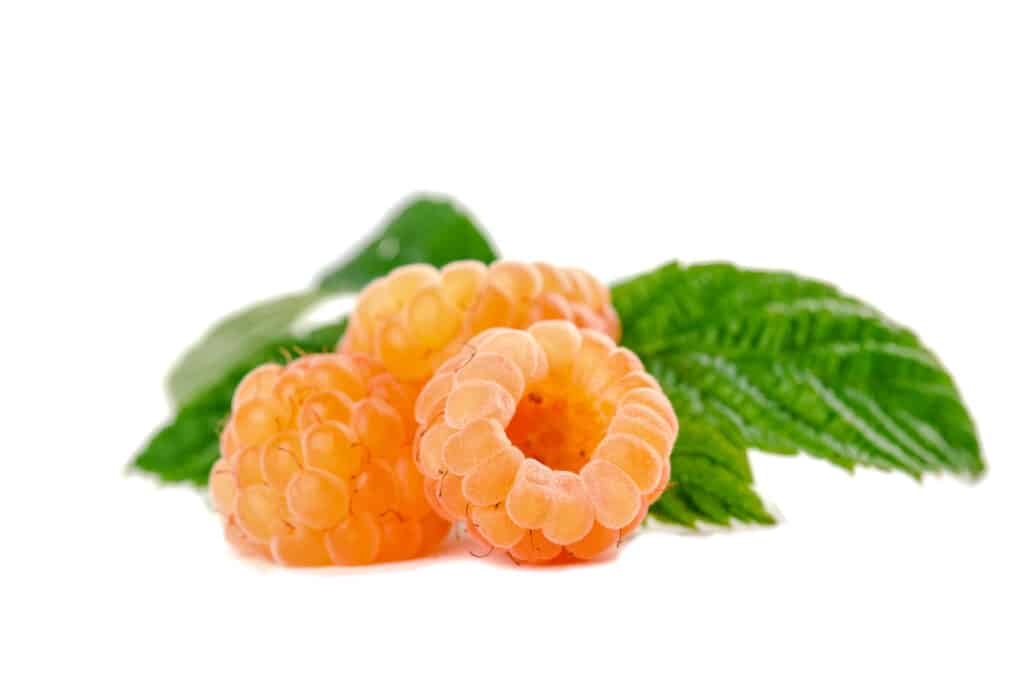
41. Goldfinger Banana
This banana is tasty when it’s yellow (ripe). Before it ripens, it can be enjoyed cooked, typically fried or boiled. It originates in Honduras and has a slight apple flavor.
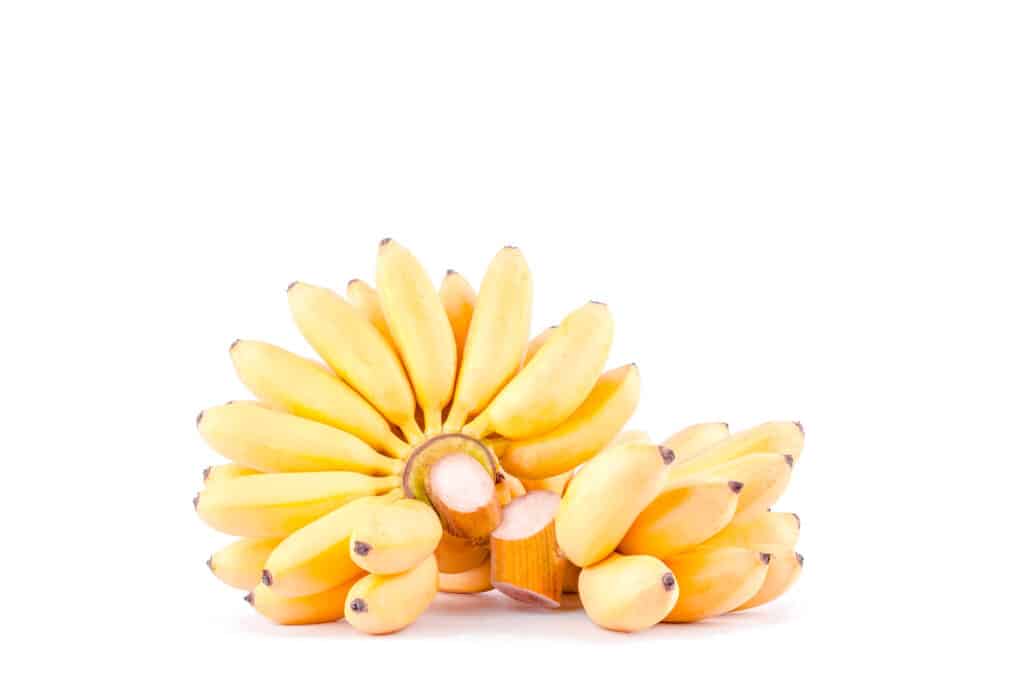
42. Jackfruit
This tropical fruit has a green to brown exterior with a buttery yellow interior. It tends to have a similar texture to bananas. However, its taste is very different and distinct. Depending on its ripeness, its flavor can range from a bold, sweet flavor to a meaty taste.
It is often available canned or in the frozen section. It makes a good replacement in recipes like vegan pulled pork or shredded chicken. It actually pulls and shreds very similarly and soaks up the taste of whatever sauce or marinade it is in.
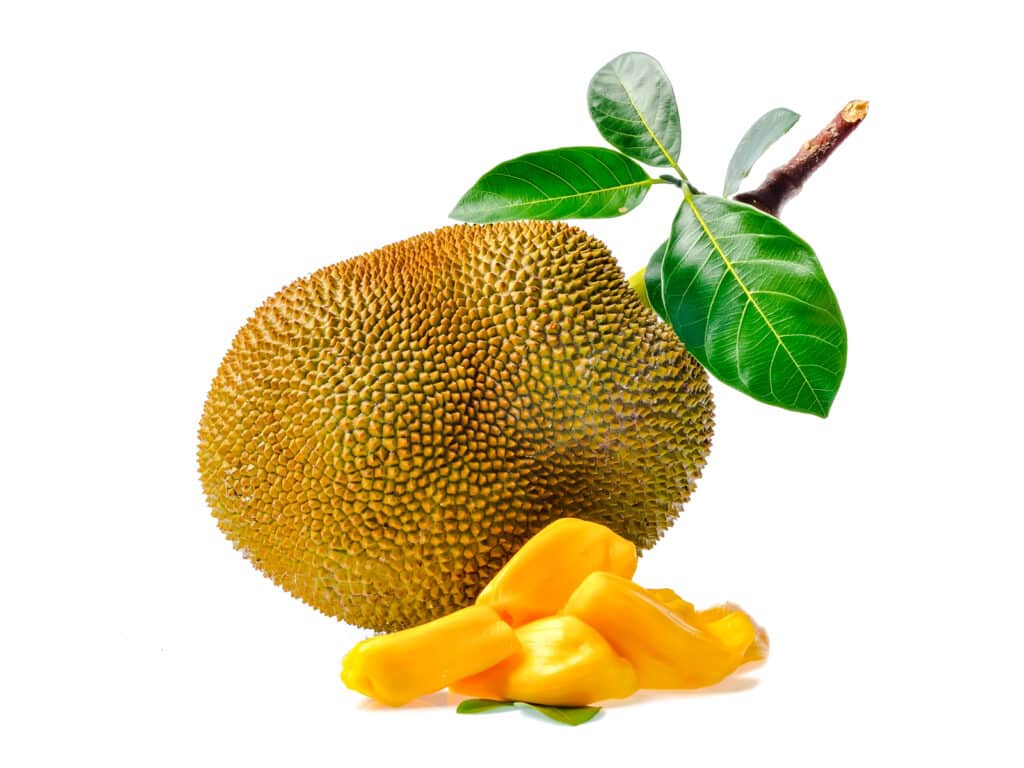
43. Janosik Watermelon
Vibrant yellow-fleshed watermelon that’s sweet and crisp. It is an excellent source of vitamins A and C. Yellow watermelon is also a source of the antioxidant beta-carotene.
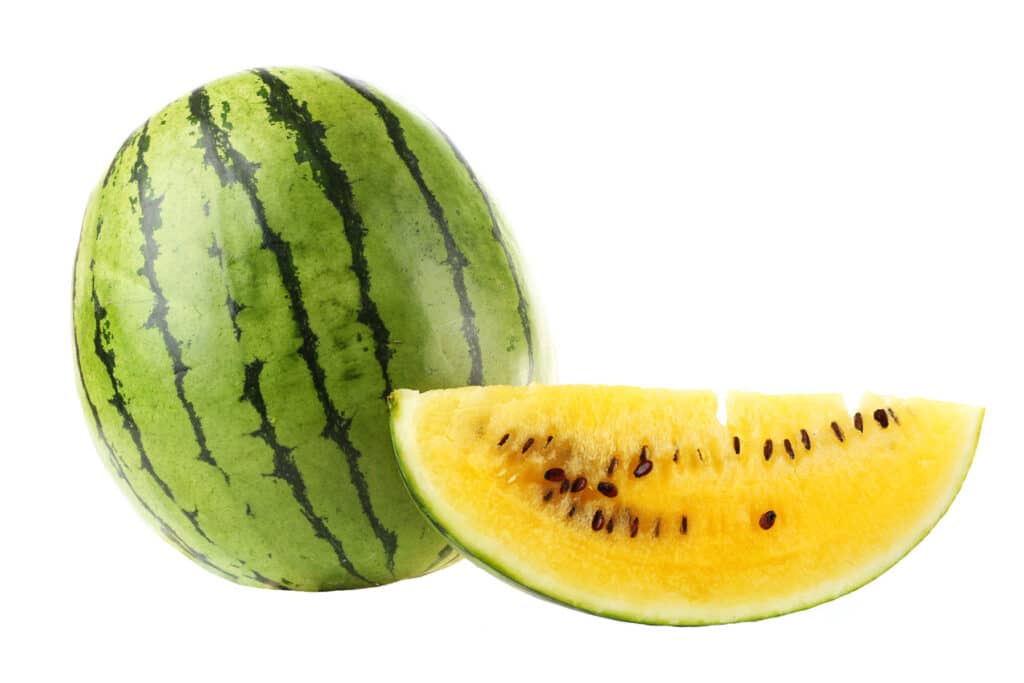
44. Kabocha Squash
Deep green on the outside with yellow-orange flesh. This tasty squash is extra sweet!
This nutritious yellow food is easily found during the autumn months at your local grocery store.
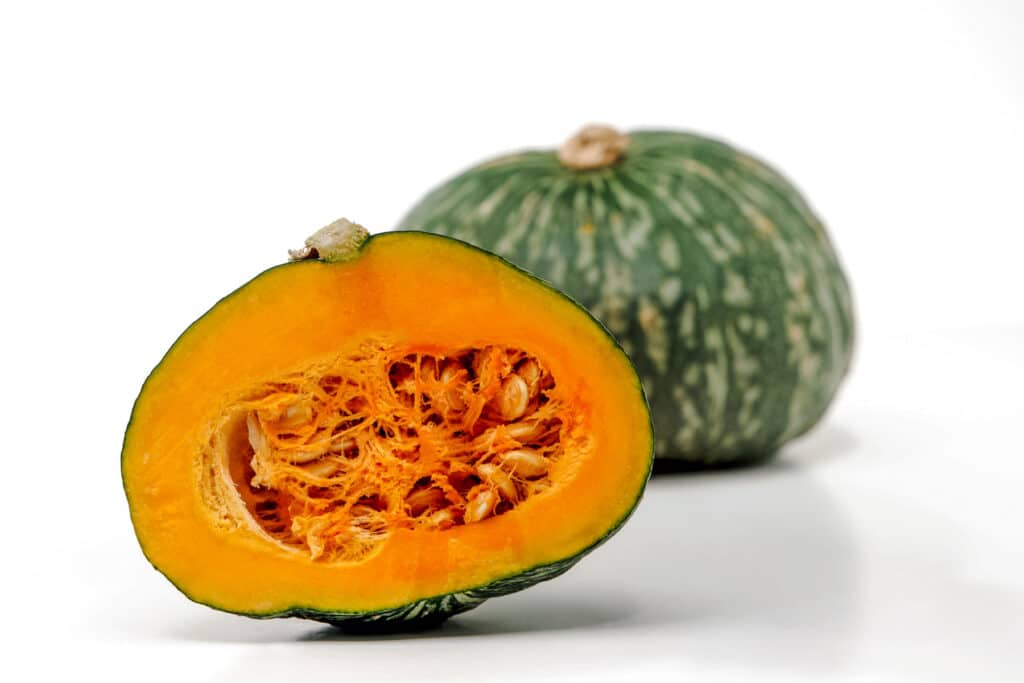
45. Lady Finger Banana
These bright yellow bananas are also known as date bananas, fig bananas, or sugar bananas. They are much smaller than traditional bananas and significantly sweeter. They contain vitamins A, B5, C, E, and K.
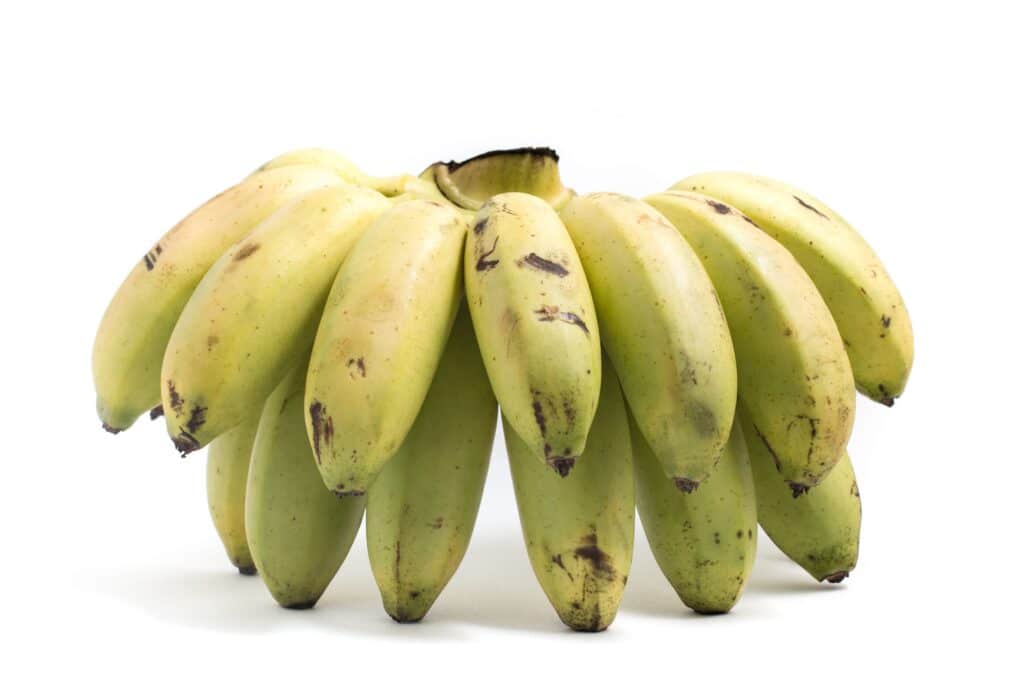
46. Lemon
Lemon is one of the foods that are yellow that everyone thinks of. Naturally, this citrus fruit has plenty of vitamin C and antioxidants, perfect for bolstering immunity. It can help you add a measure of protection for your best health. Lemons have been shown to reduce your risk of heart disease, kidney stones, anemia, and digestive tract issues.
Since it tenderizes so well and neutralizes strong smells, it’s often a great thing to add to marinades. That being said, I am a huge fan of using lemons for lemon juice. One of my favorite recipes to use lemon juice in is the Best Homemade Lemonade recipe.
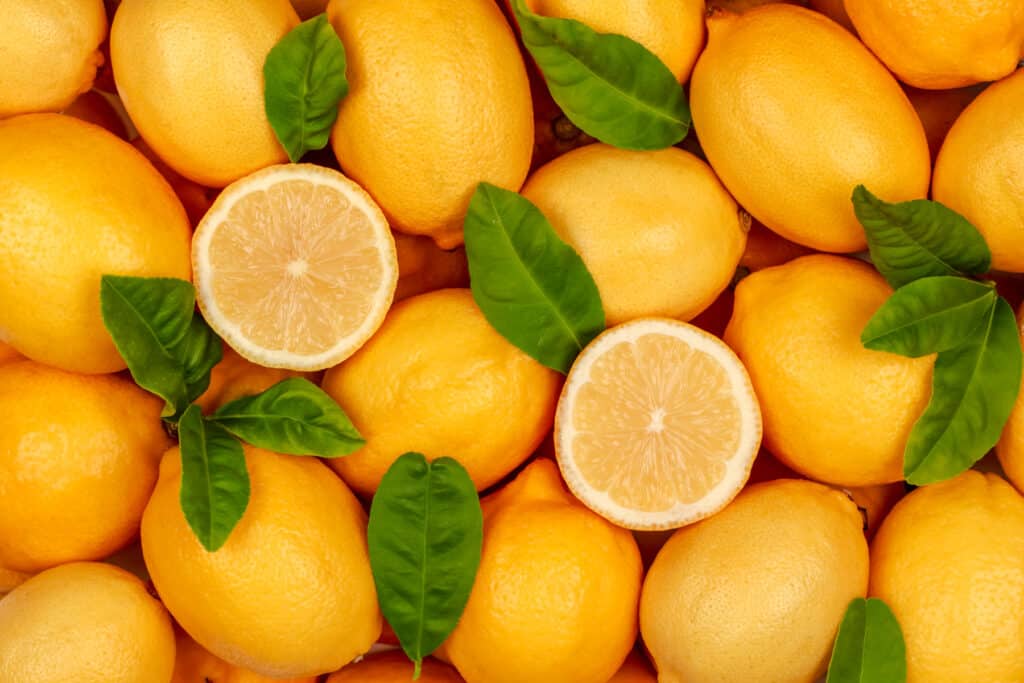
47. Lemon Cuke Cucumber
This round cucumber has deep rich yellow skin and light yellow flesh. They are often similar in size to a tennis ball (or smaller). This yellow cucumber is perfect in salads or on your favorite sandwich.
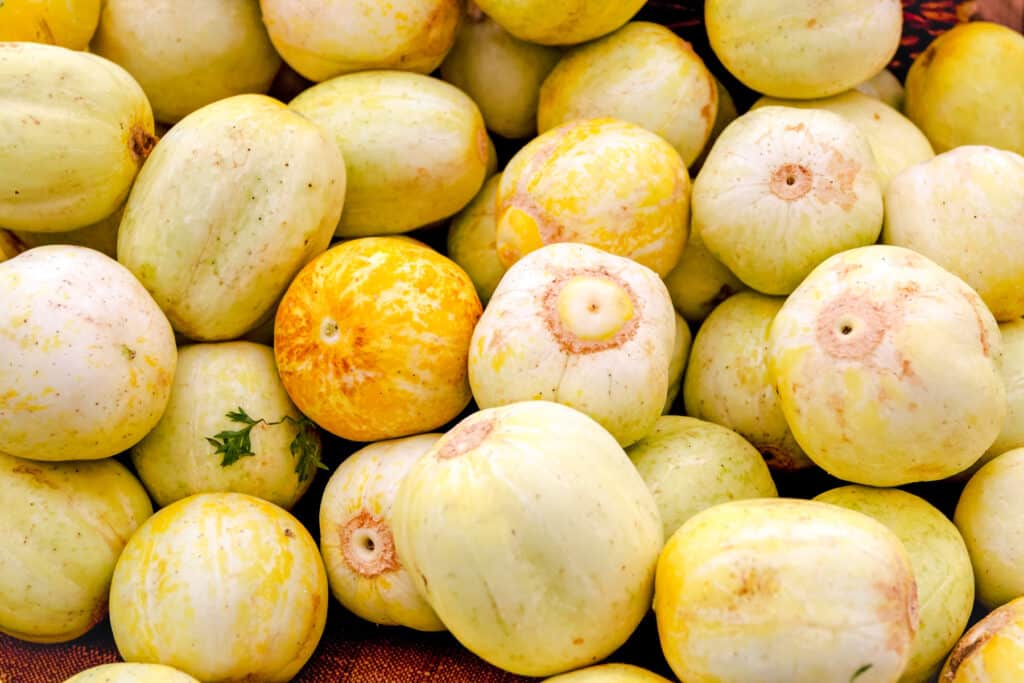
48. Lemon Drop Watermelon
This unique watermelon is not only yellow on the inside but also yellow on the outside. It is similar to honeydew melon in size, shape, and taste even!
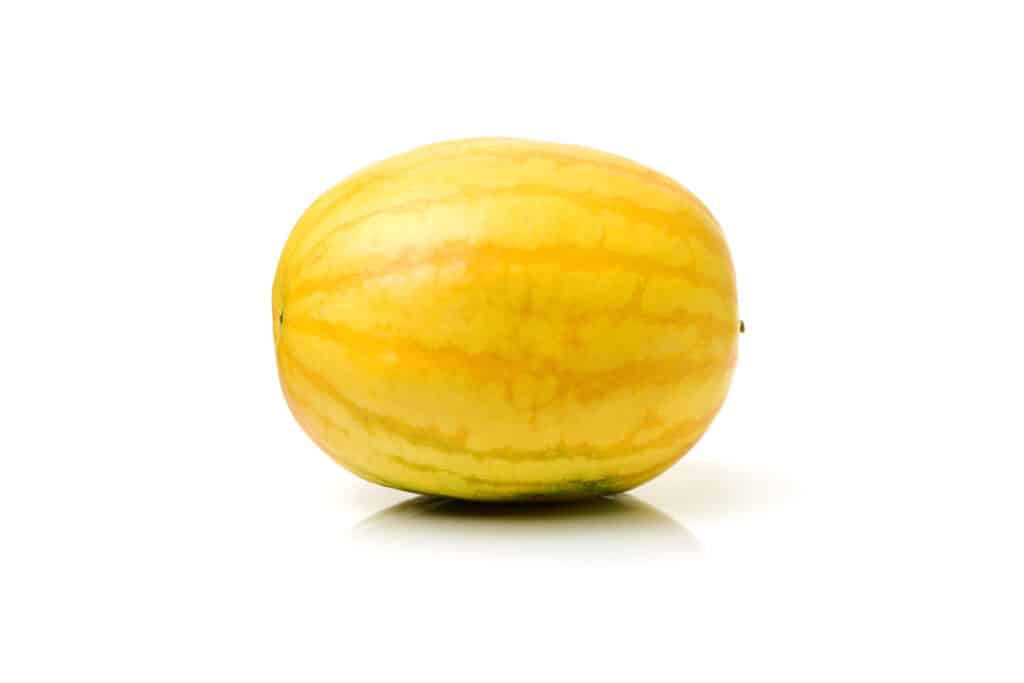
49. Mirabelle Plum
When you hear “plum,” you picture purple. Not so for the Mirabelle plum, which is a yellow food. It is sweet and tangy, perfect for making preserves.
This fresh fruit is an excellent addition to your diet because of the high vitamin C and potassium levels to keep your heart and immunity running strong.
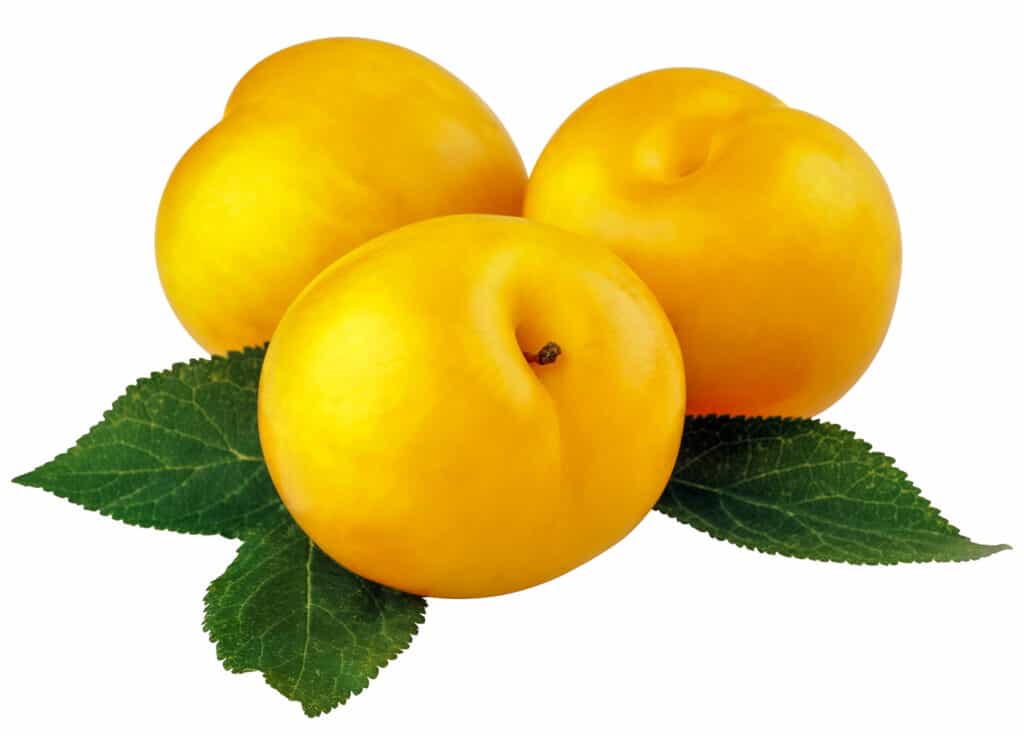
Are you interested in learning about green fruits? Check out this blog post, 112 Fruits That Are Green!
50. Mutsu Apple
This medium-sized apple ranges in color from yellow-green to creamy white. This is a juicy sweet apple perfect for eating fresh, adding to salads, drying, or even cooking with.
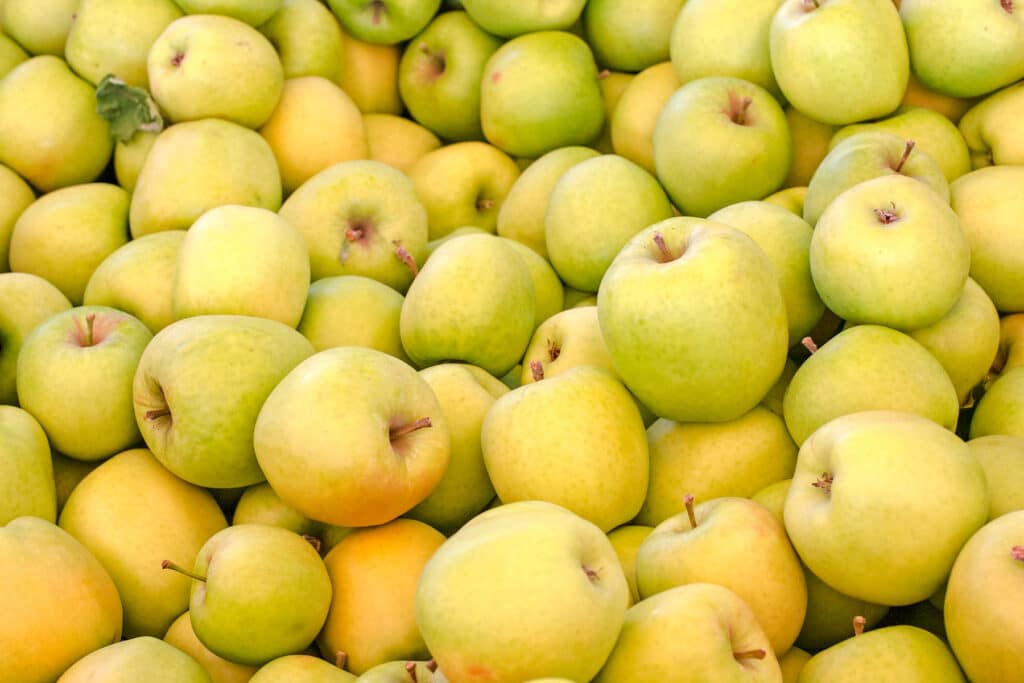
51. Napa Chardonnay Blush Tomato
This yellow cherry tomato is juicy with mild sweetness. Yellow tomatoes are a good source of vitamin A as well as iron, calcium, and potassium.
52. Pattypan Squash
The strange name of this yellow food and its unique shape might make you wonder. But the pattypan squash is a health food favorite for its prominent vitamin A content. It also has the potassium that you need, and it is incredibly delicious. So much so you may forget that it’s good for you too!
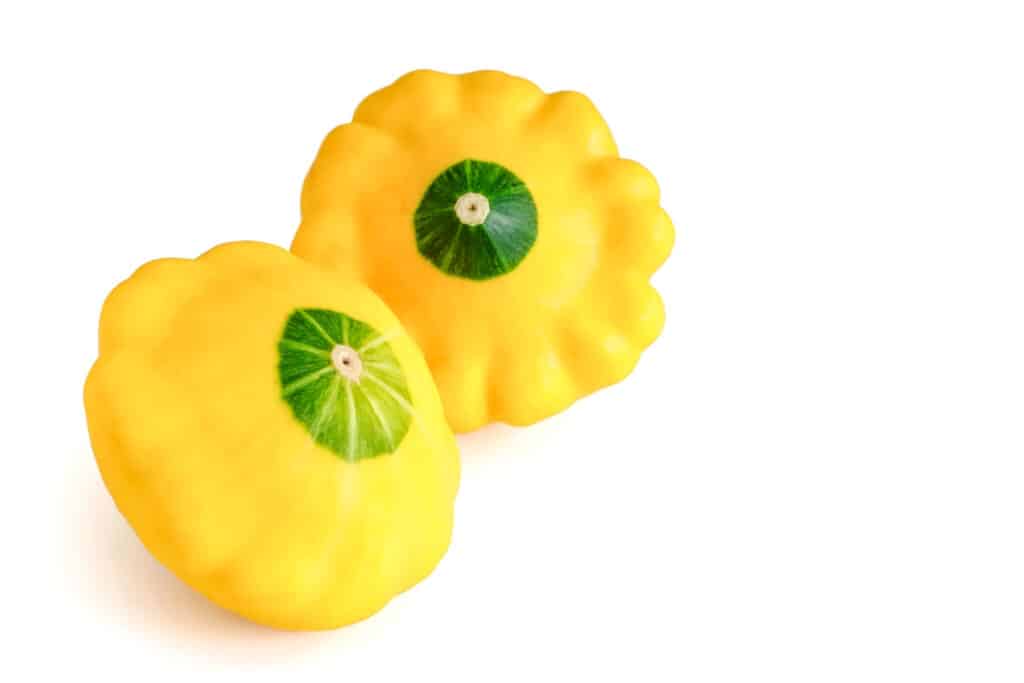
53. Paw Paw
The paw paw is a yellow fruit known for plentiful vitamin C, iron, magnesium, manganese, copper, and potassium. It’s native to the US, too, and the largest edible fruit with this distinction.
It grows natively in 26 states and is something Native Americans and European explorers each enjoyed. Pick one up and try it when you see it in your produce section.
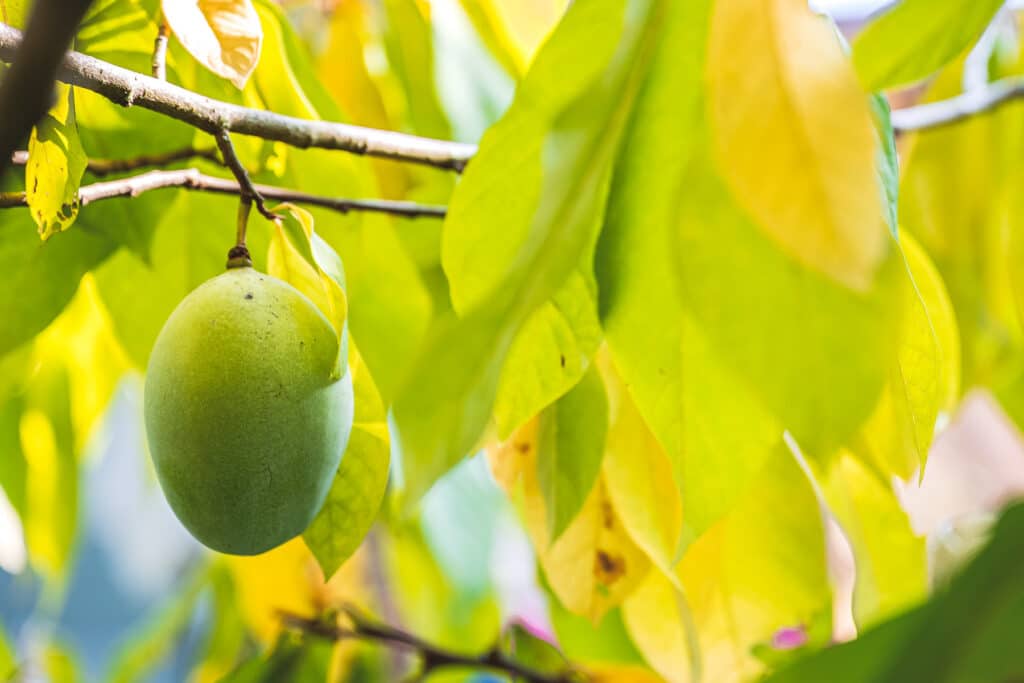
54. Pomelo
Sometimes known as the pummelo or Citrus maxima, it’s the largest citrus fruit in the Rutaceae family and grapefruit’s ancestor. Native to Southeast Asia, you will get gobs of vitamin C and potassium from this mega-yellow food. It tastes like a giant grapefruit!
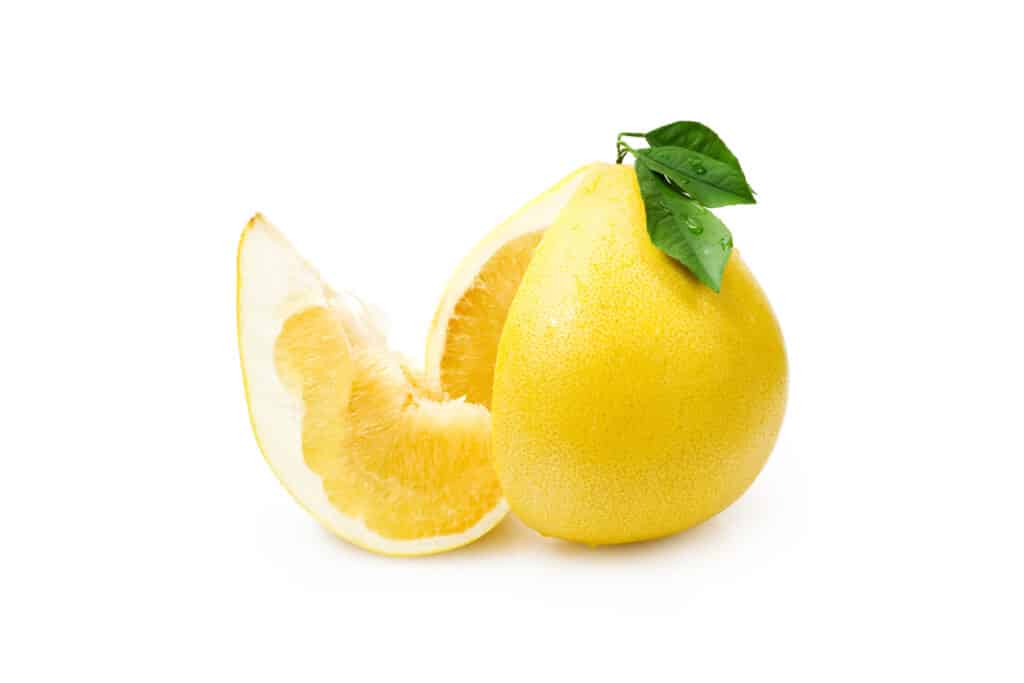
55. Pork Chop Tomato
A medium-sized steak tomato that’s yellow inside and out! It’s packed with antioxidants, including lycopene. In addition, they’re a good source of vitamins A, B, and C, as well as calcium, iron, and potassium.
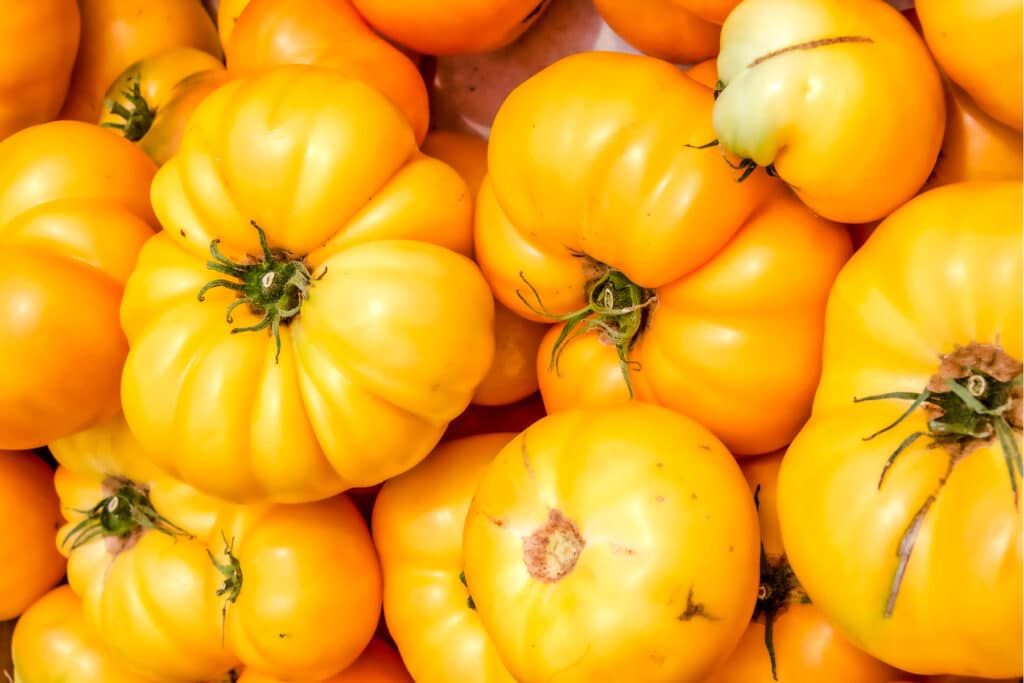
56. Peruvian Ground Cherry
Known as Physalis peruviana, this native plant to South America is part of the nightshade family. It’s a round, smooth berry that looks like a small yellow tomato. When it’s ripe, it has a mild yet tart grape flavor. If you can find these yellow foods, you should most certainly take a taste!
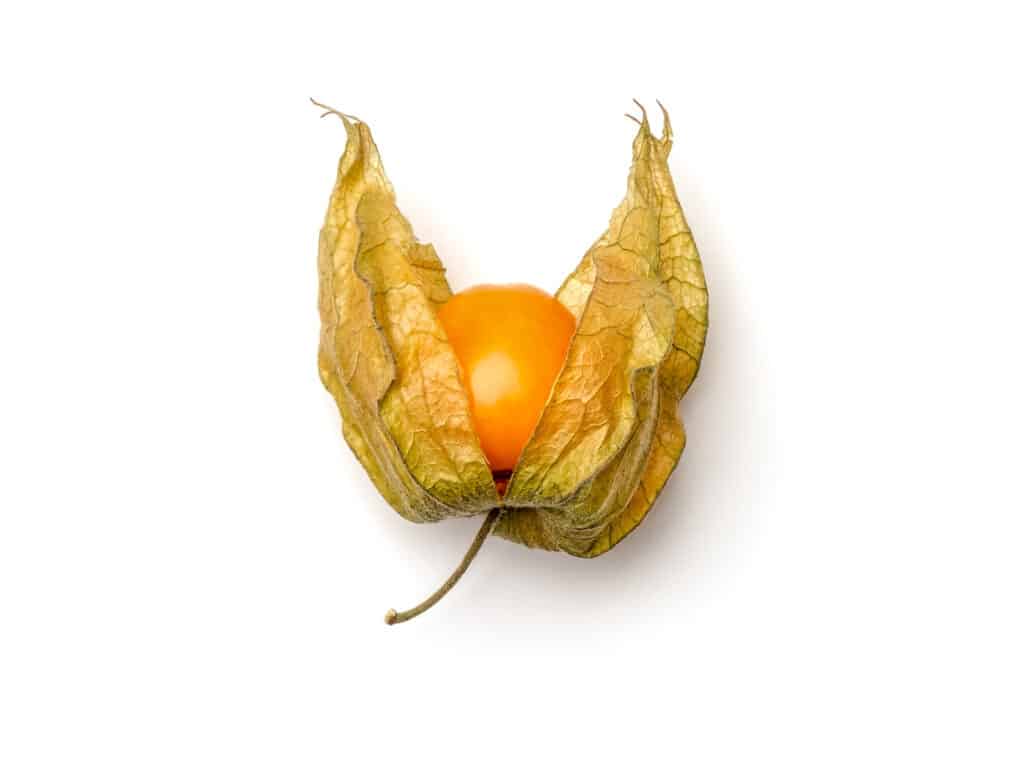
57. Praying Hands Banana
This yellow banana got its name from the fact that it is fused with its neighbor banana making it look like fingers on a hand. They are an excellent source of potassium. In addition, a good source of vitamins A, B, and C.
58. Quince
From the genus Cydonia in the Rosaceae family, quince looks like a pear. It has a bright golden-yellow color when it matures. And when you eat quince, you get vitamin C and fiber for your best immunity. Some say quince may have antibacterial properties, too, though regardless, it’s a healthy yellow food to eat.
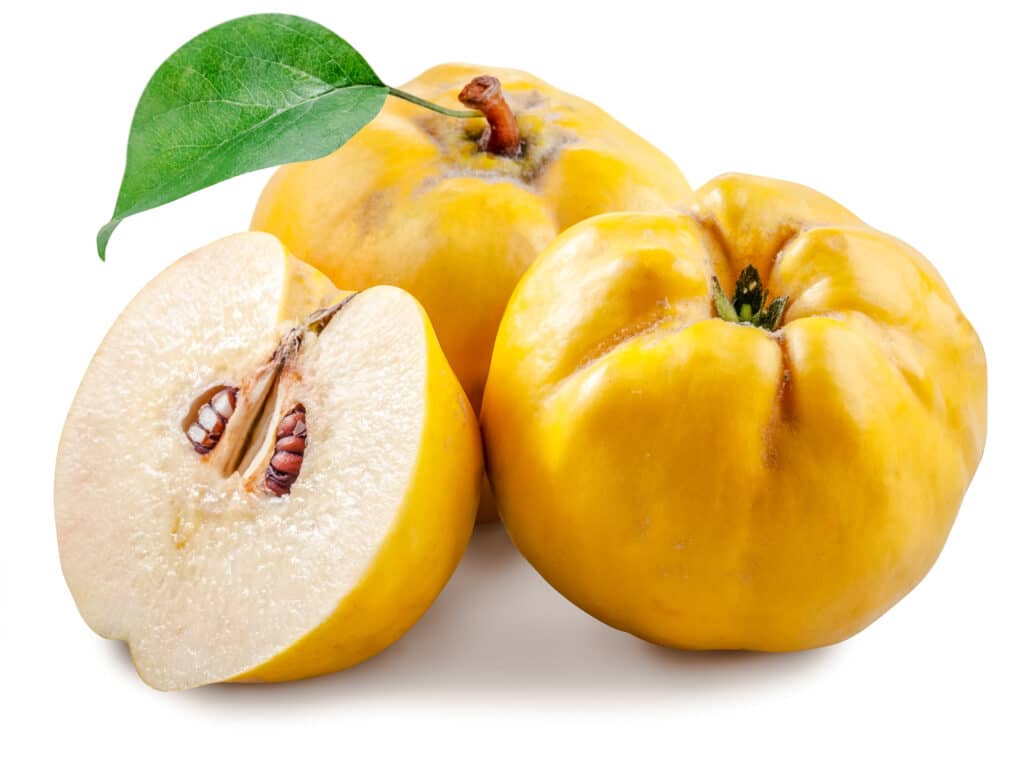
59. Rainier Cherries
Cherries have long been on the list of power fruits, but Rainier cherries are a must! These sweet cherries have thin yellow skin and such a unique taste. You’ve simply got to try them. They grow in Oregon and California though they came from Washington state. You’ll get vitamins A and C, fiber, copper, and manganese when you eat them.
Are you wondering what the best way to enjoy cherries is? This Vegan Cherry Bruschetta has to be my favorite!
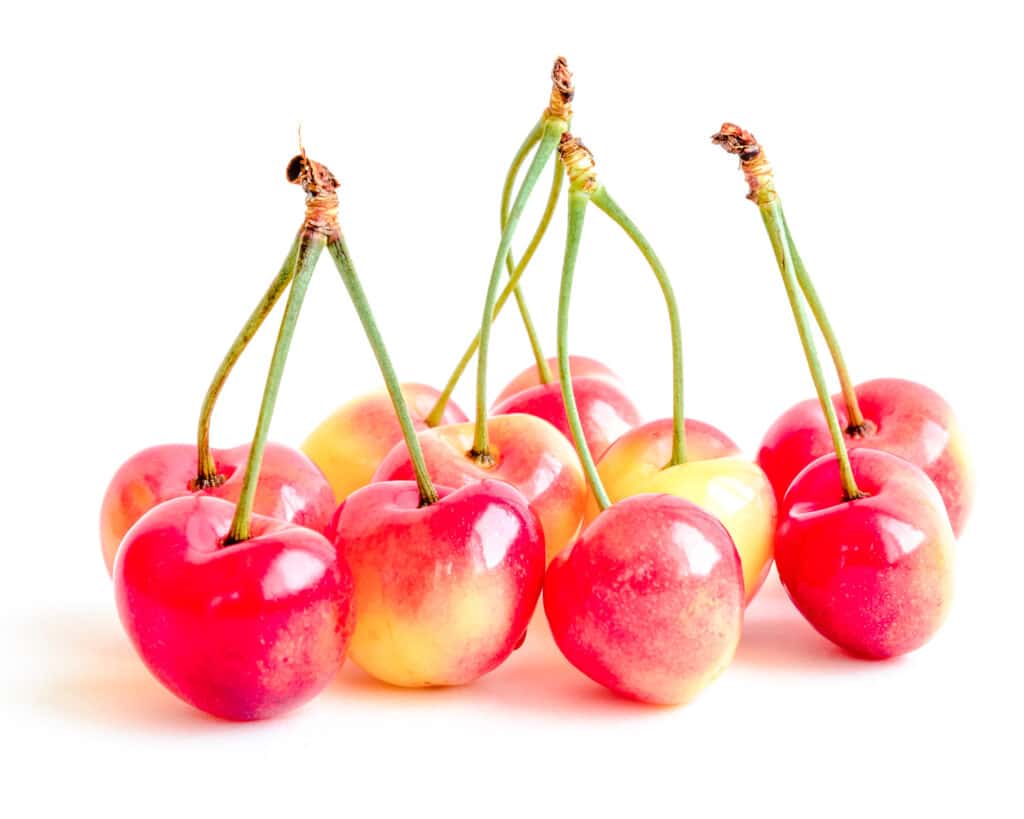
60. Rambutan
This tropical fruit has vibrant yellow skin with translucent cream-colored flesh. The skin and seed can both be toxic, so don’t eat either. It is spherical in shape, and its skin includes soft spines. It is rich in copper and vitamin C.
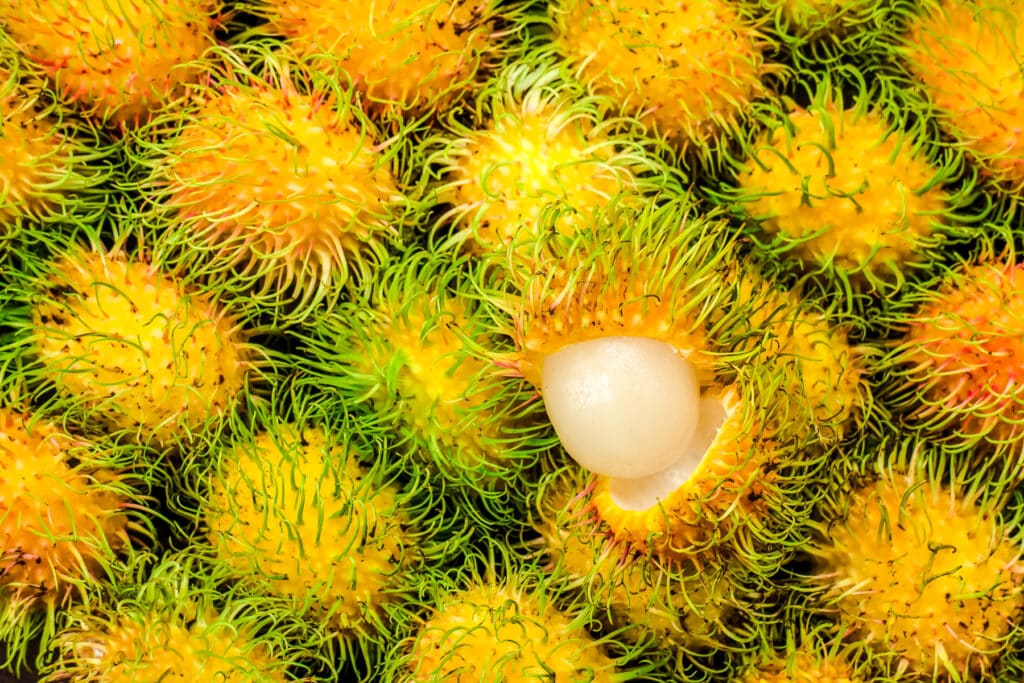
61. Singapore Red Pineapple
This pineapple is very similar in taste to the traditional pineapple, widely sold in grocery stores. A big difference is that its skin is reddish in color and has a red stripe down its leaves. The flesh of this pineapple is a vibrant yellow, though.
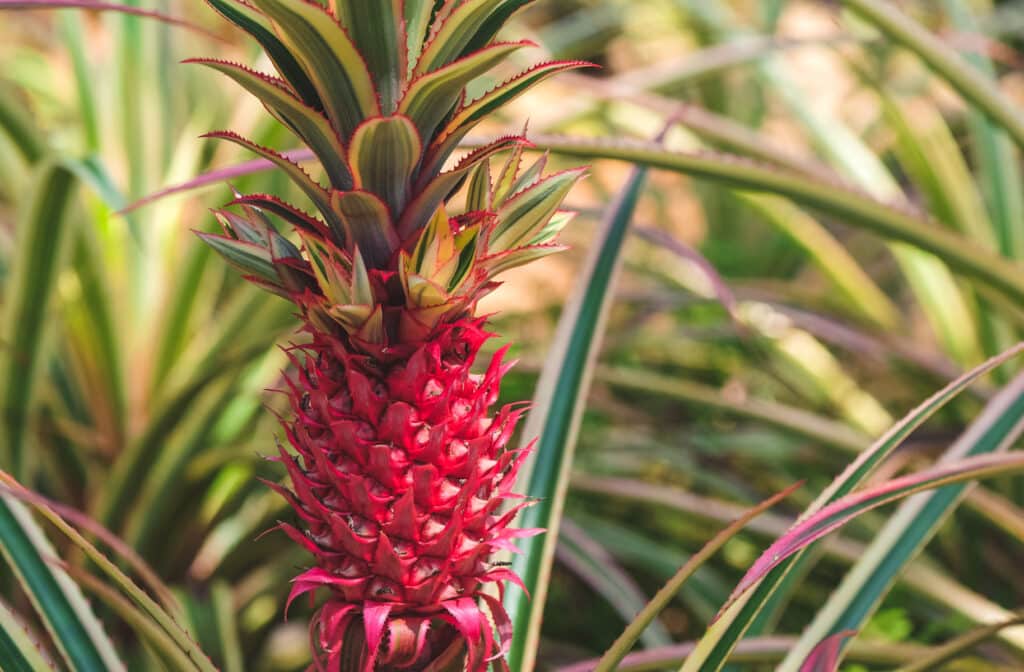
62. Smooth Cayenne Pineapple
This popular yellow food has a sweet, tropical taste that you can’t help but love. While it takes a little work to carve one up, you’ll be treated to plenty of vitamins and antioxidants every time you enjoy a pineapple. You can eat them in slices or use the fleshy interior to help you tenderize tough meats.
Looking for a new pineapple recipe? Try this Pineapple Banana Smoothie! It’s quick and easy to make and so refreshing!
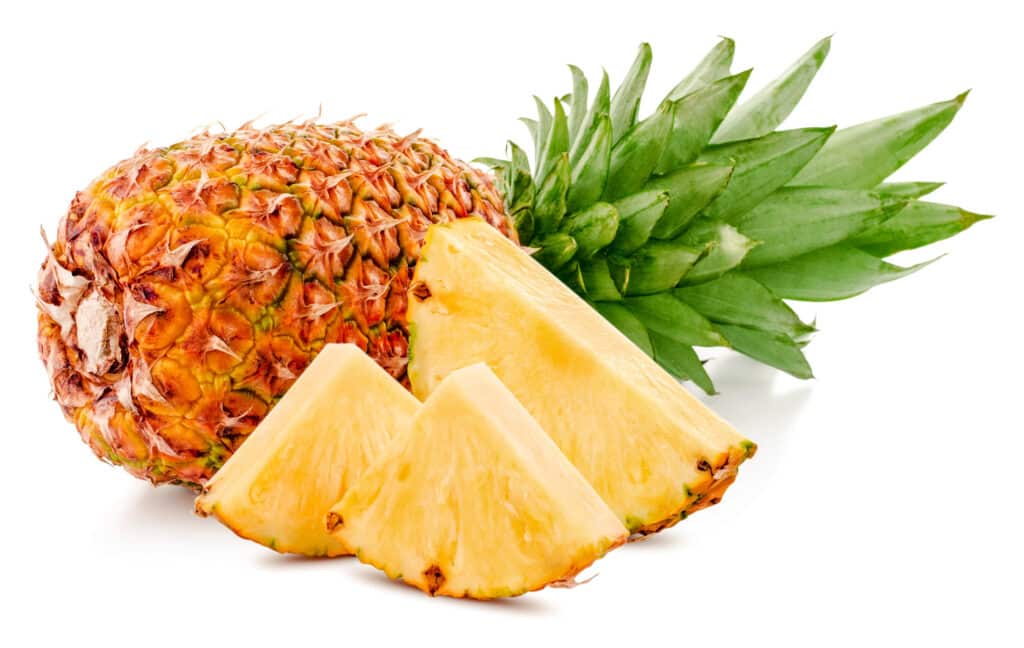
63. Star Fruit
It’s as yellow as the sunshine. Star fruit, also known as carambola, comes from Asia’s southeast regions. It’s sweet and sour, and it gets its name from the way it looks when sliced – just like stars!
You get fiber and vitamin C from these yellow foods though oxalates are another bonus, too, unless you have kidney problems, and if you do, you should avoid these.
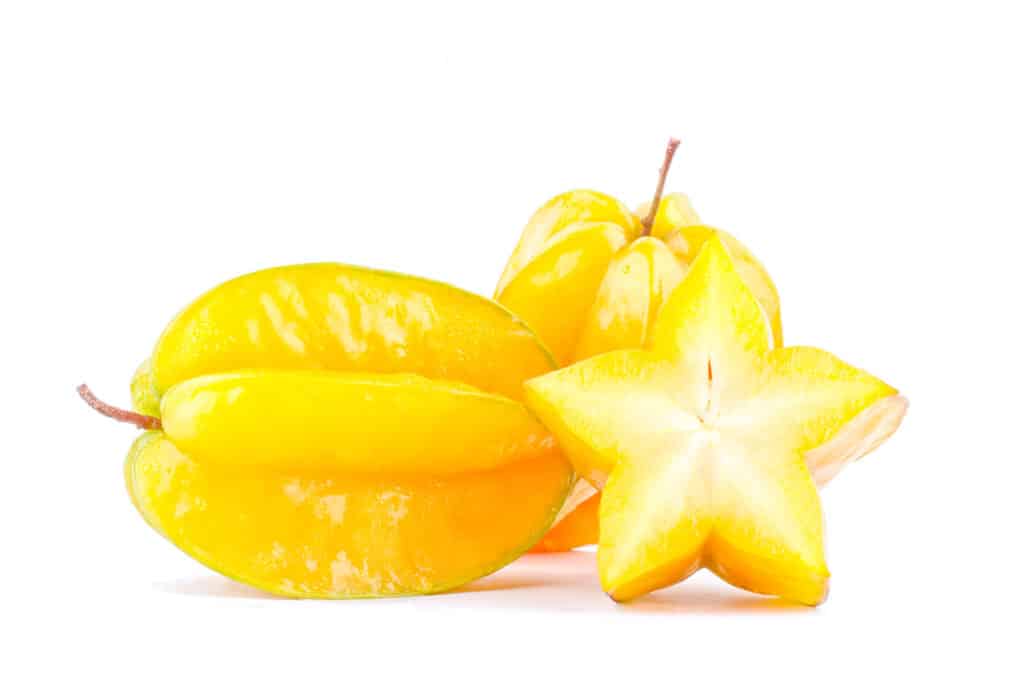
64. Summer Squash
Summer squash grows in warm seasons throughout the US. It is harvested before the rind hardens, growing on bush-type plants. This tasty yellow food is great to add as a side for dinner because it gives you protein, vitamin A, niacin, and thiamin, all of which support your health inside and out.
I use this tasty yellow squash in my Vegan Lasagna Recipe.
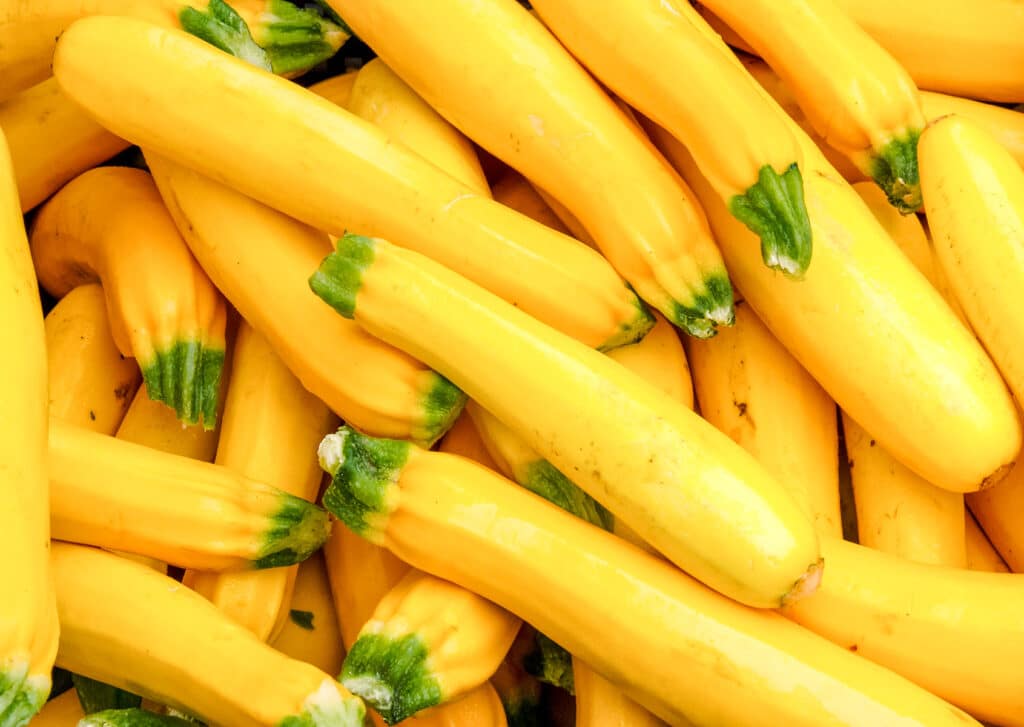
65. Yellow Bell Pepper
A fun fact about this yellow food is that yellow peppers are really green peppers that have ripened more. They’re midway between red peppers and green peppers on the ripening spectrum. Because of this, yellow bell peppers have more vitamin C and beta-carotene than the green pepper. They’re great for snacking too!
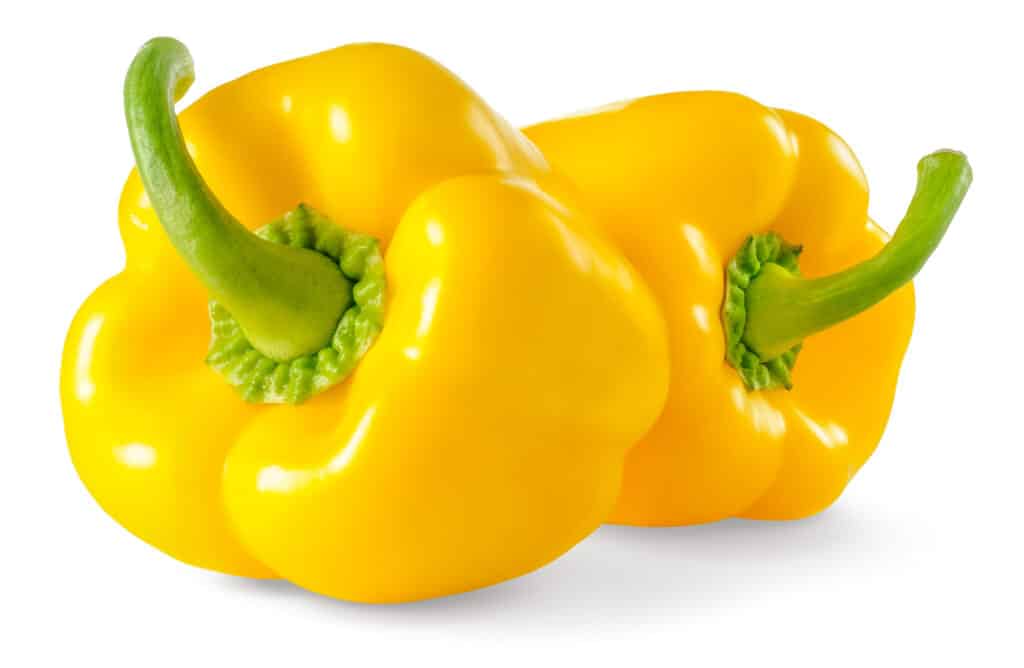
66. Yellow Brandywine Tomato
Tasty heirloom tomato that is yellow-orange in color. They have a meaty texture and can be up to size inches in diameter (about 15.25 centimeters). This beefsteak tomato is best served cold in sandwiches or salads.
67. Yellow Crookneck Squash
Sure, it looks funny, but don’t judge it by that. This strange-looking squash has vitamin A and flavonoids, which help provide antioxidant protection. It also has vitamin C, which helps your body make collagen and absorb iron. It does so much good, so sauté it up for your dinner!
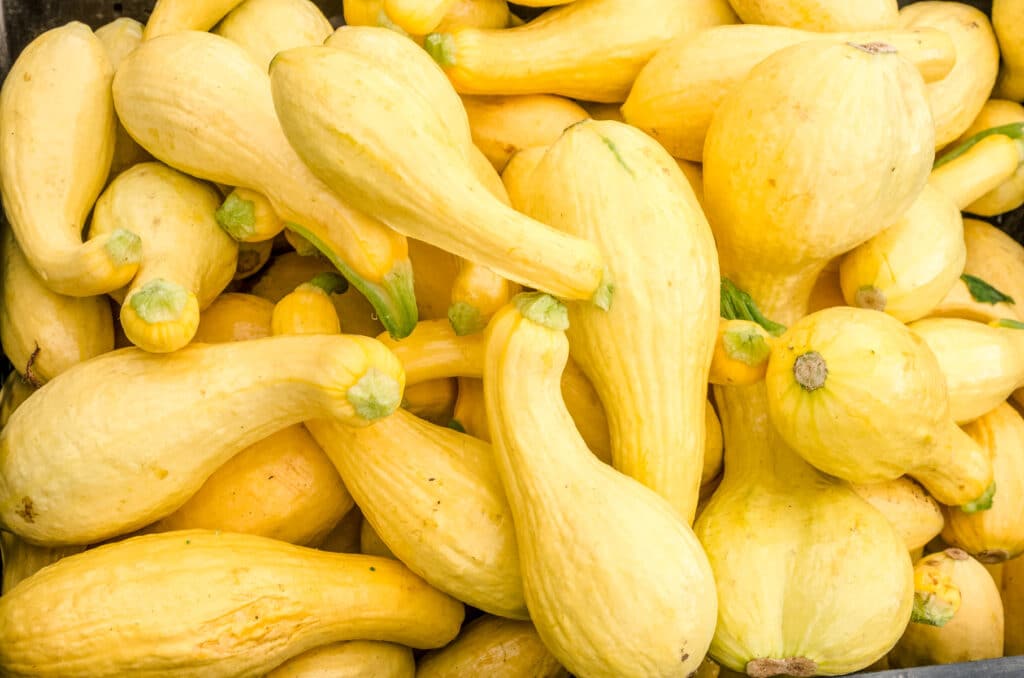
68. Yellow Monster Pepper
This bright yellow pepper is sweet as can be. When growing, it starts out green and then slowly bright yellow. It is tasty and enjoyed roasted, fried, or raw. They have a similar look and feel to bell peppers, but they are significantly longer (up to eight inches (~20cm)).
Have you heard that you should eat the rainbow? Check out this blog post, 52 Foods That Are Orange!
69. Yellow Dragon Fruit
Unbelievably, yellow dragon fruit is a species of cactus native to northern South America. Often called ‘pitaya,’ if you eat this yellow food, you get fiber, protein, and more calcium than you’d get from the red-skinned varieties of dragon fruit. Additionally, vitamins A and C plus iron are another reason to eat the yellow version of this popular fruit.
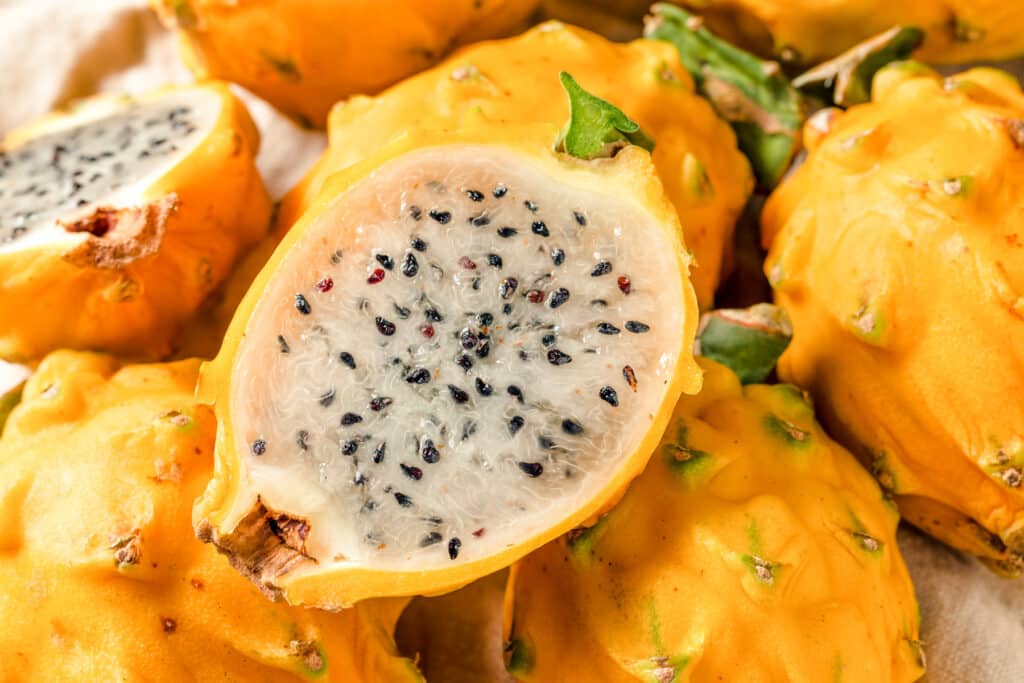
70. Yellow Pear Tomato
Small heirloom tomato that’s sunshine yellow and shaped like a pear. It grows to a maximum size of about two inches (~5cm) in length. Enjoy these small tomatoes as a quick and easy snack, or add them to your next salad.
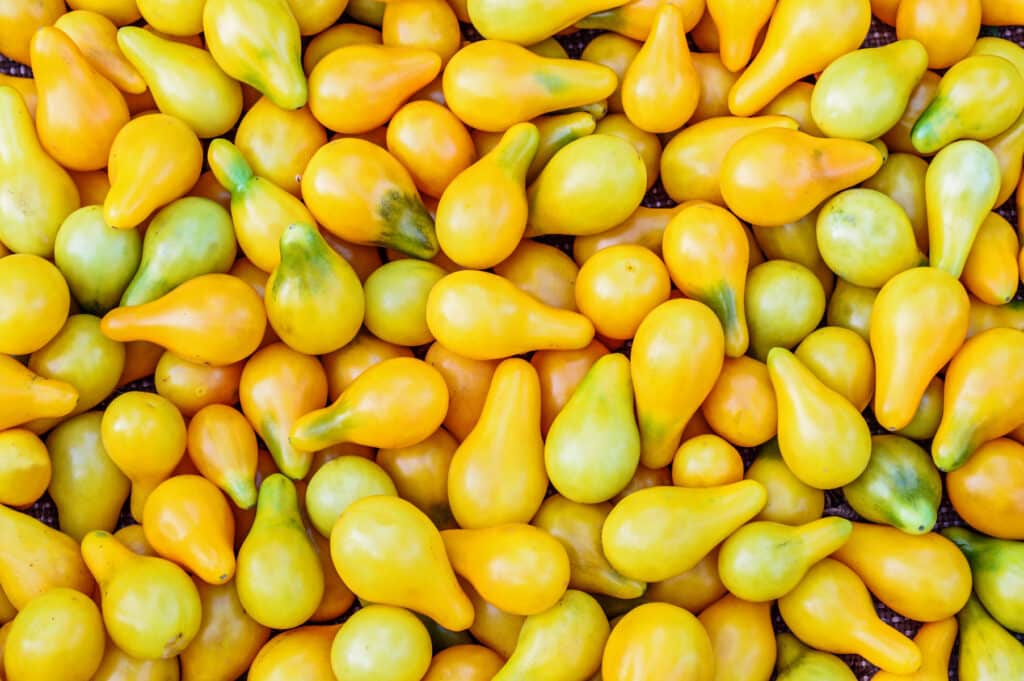
71. Yellow Seven Pot Hot Pepper
These hot peppers are anywhere from one million to one point two million on the Scoville heat scale. They are spicy with a hint of fruitiness.
72. Yellow Crimson Watermelon
You’d never know a yellow watermelon by looking at it. It looks like a regular watermelon. You’ll have to ask the farmers at the market or check the labels in the produce section. There are so many yellow watermelon varieties to try, though they mostly have notes of apricot and honey.
They’re nutritious, with vitamins A and C for immunity and skin health. The biggest difference between this yellow food and the red variety of watermelon is that it has more beta-carotene, perfect for helping protect you from diseases.
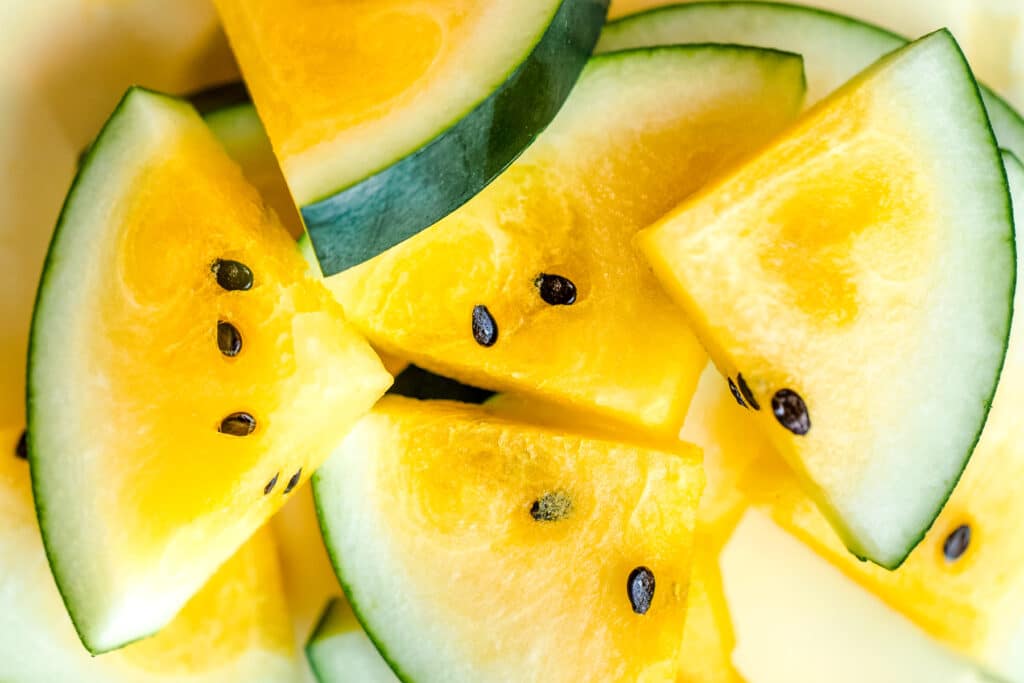
73. Yellow Wonder Wild Strawberry
Want to try the best strawberry? The yellow wonder wild strawberry is popular in Europe and in gourmet settings. It’s creamy, yellow, and small. It offers up the same kind of nutrition as strawberries with an excellent amount of vitamin C. Those that have eaten this version of strawberry often say it tastes even better than the red ones.
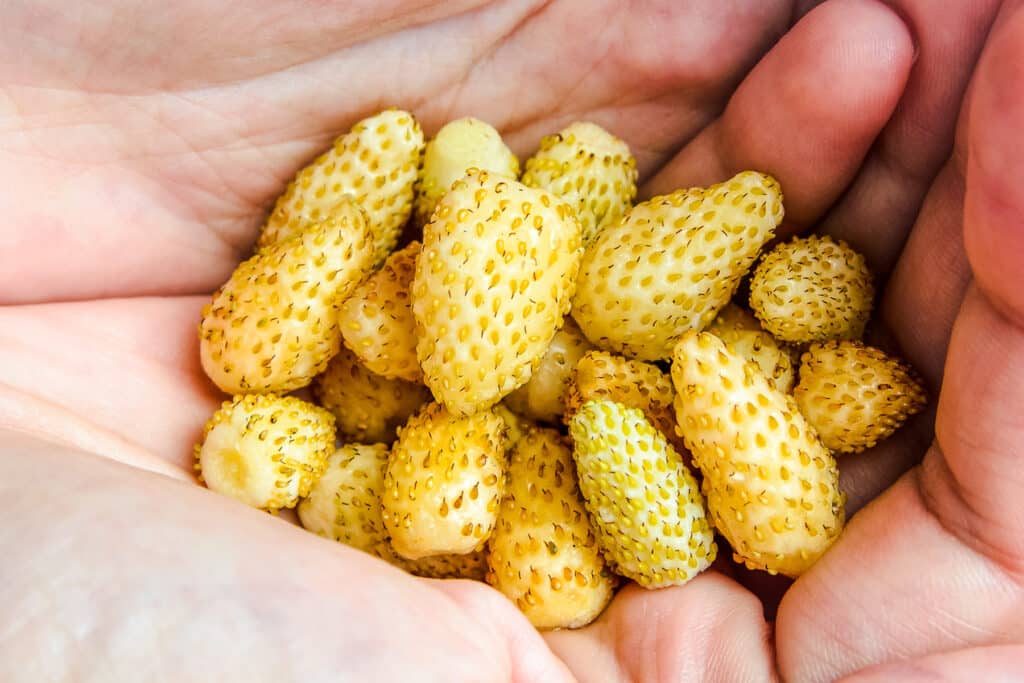
74. Your Majesty Tomato
All hail to this mammoth-size tomato! It’s heart-shaped yet canary yellow. Featuring sweet flesh and a few seeds, this heirloom comes from Siberia and brings a splendid flavor. You’ll love this royal addition to your salads!
75. Granadilla
Granadilla is also called ‘sugar fruit’ and is more sweet than sour. It’s related to passionfruit and has a texture that is the same as its relatives. However, the flavor inside tastes more like papaya. It’s little surprise this fruit thrives in Florida’s tropical climate.
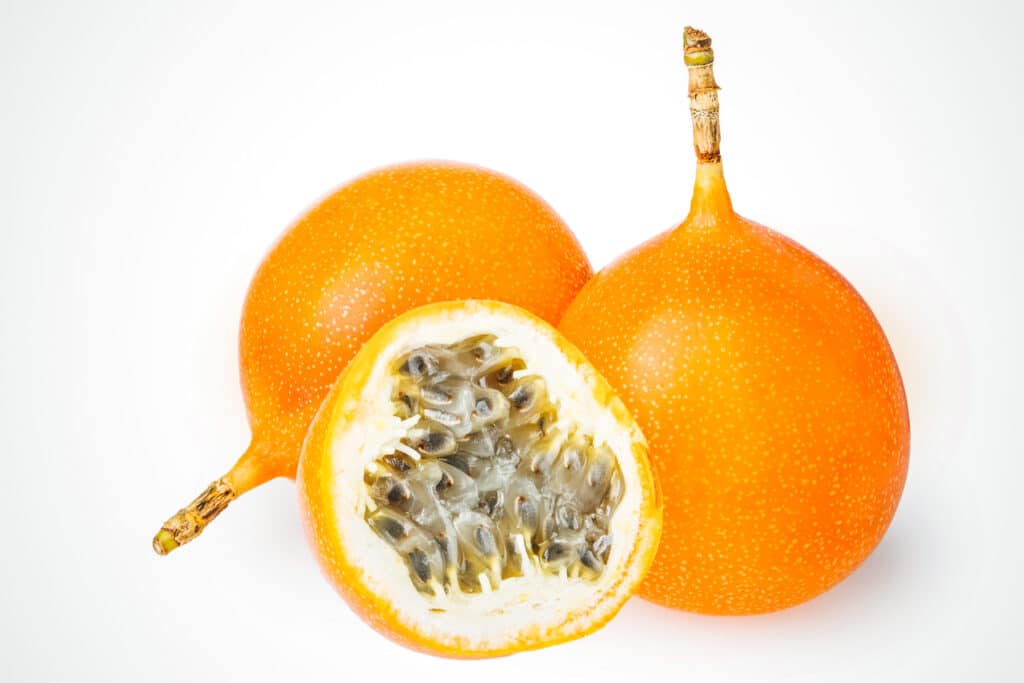
76. Nam Wah Banana
Nam Wah bananas have a thin peel and plump fruity flesh that is fragrant, juicy, and sweet with just a touch of acidity. They tend to grow in Vietnam and Thailand and, like other bananas, are incredibly nutritious. They have high amounts of potassium, folate, and magnesium. You’ll also get vitamins A and B6 plus fiber, niacin, iron, riboflavin, and beneficial prebiotics that are great for your gut health.
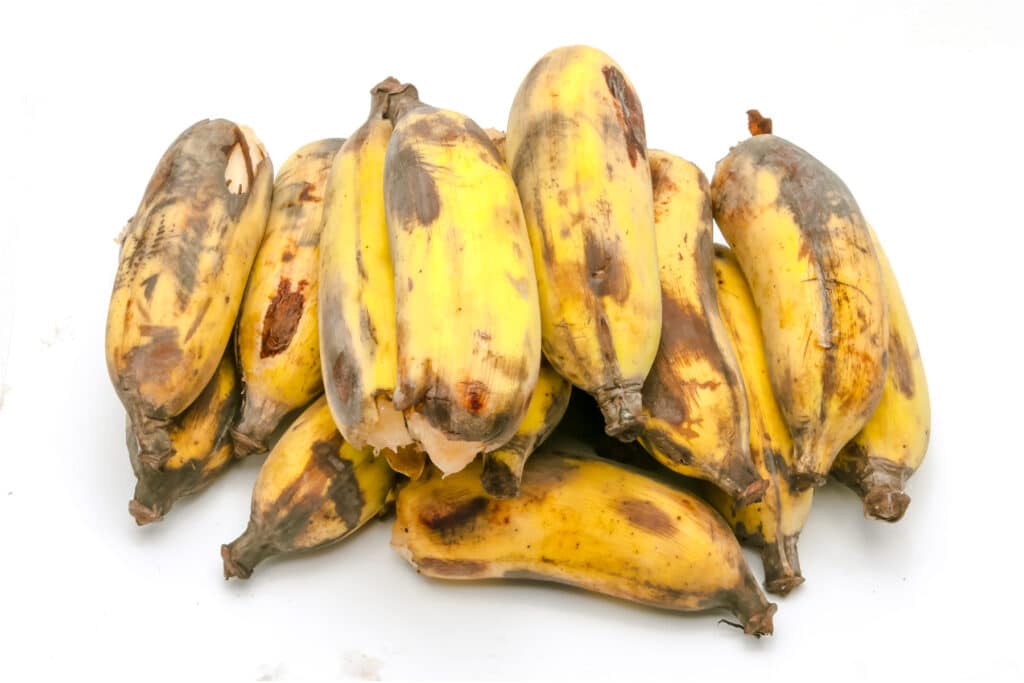
77. Orinoco – Burro Banana
Big and creamy, this banana is great for cooking and is commonly used in Cuban cuisine. Inside, it has a soft, silky texture yet is firm and a bit fibrous. Named after the Orinoco River Valley in Venezuela, you’ll find them grown in Southern California as well as the Gulf Coast in the States.
They’re best when cooked and can give you a rich source of fiber and carbs. You’ll also get a good amount of vitamins B6 and C plus potassium, along with antioxidants too.
Are you interested in reading about blue foods? Check out this blog post, 80 Foods That Are Blue!
78. Pisang Raja Bananas
There is very little to no starchiness with the Pisang Raja banana. You’ll find a thick and creamy texture with a super-sweet taste. It’s an amazing banana to try, especially if you’re a fan of this fruit!
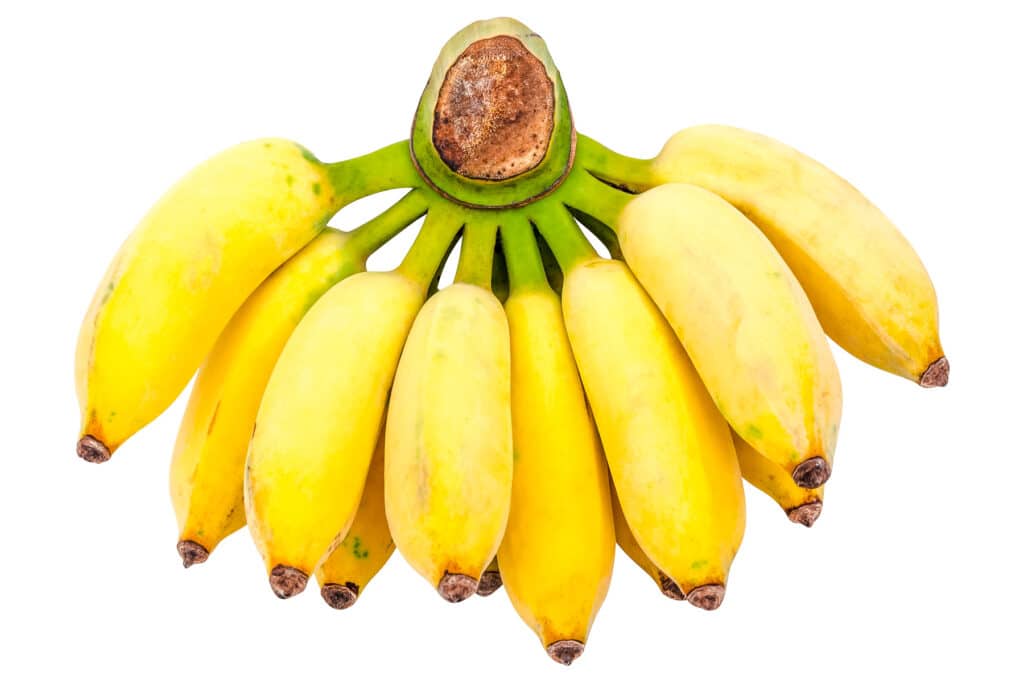
79. Frozen Langsat
Langsat is incredibly rare in the US, which is why you’ll likely find it frozen to preserve it. It’s a bit like melding a pomelo and lychee together, so it tastes sweet and a bit citrusy. The texture is unique, too, in that it’s juicy with a slight creaminess.
When you eat a langsat, it breaks easily into sections, much like a mandarin. You can eat the entire inside, though watch for the seeds. When you have these, it’s important to thaw them in a bowl of water first for about an hour. Otherwise, they will turn an unpleasant brown color as they oxidize.
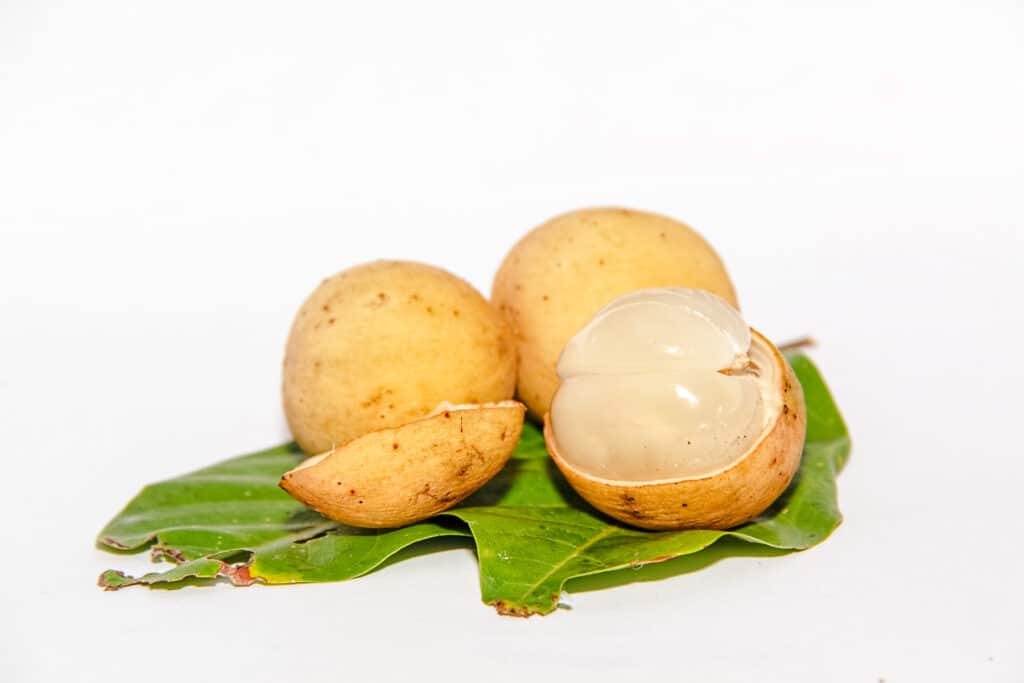
80. Tamarillo
Tamarillos are golden and egg-shaped tropical fruits that have earned the nickname of ‘tree tomato.’ They are native to Central and South America, though, in the US, they are grown in California. You’ll love the rich vitamin content of these fruits with vitamins A, B6, C, and E. They also have fiber and antioxidants. The exterior is really bitter, but inside, the tamarillo rewards you with a juicy and flavorful experience.
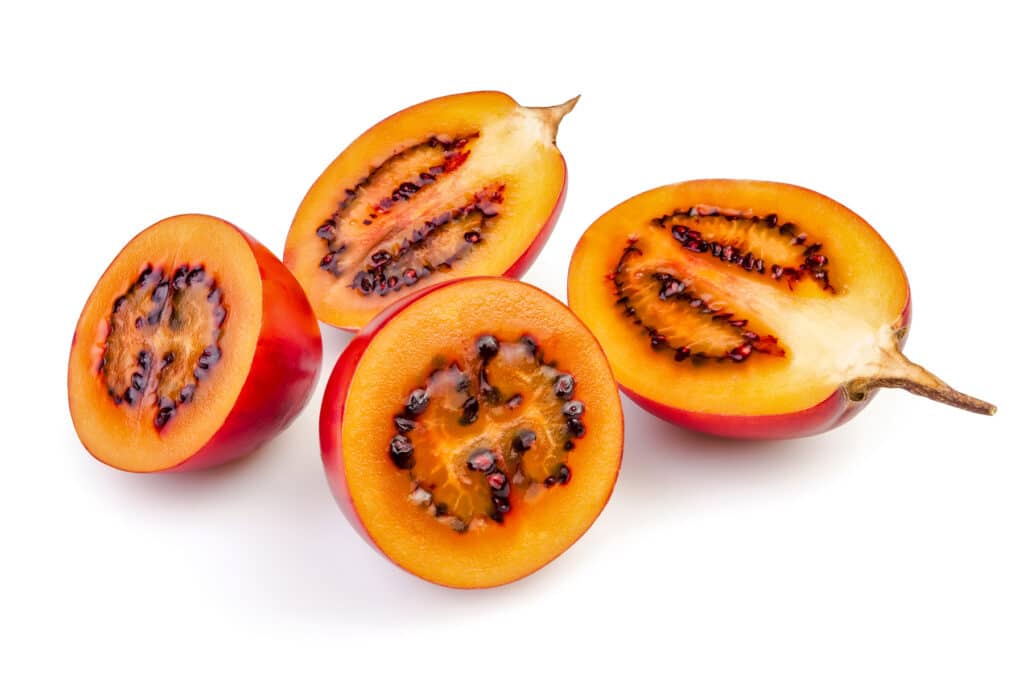
Yellow Beans & Legumes
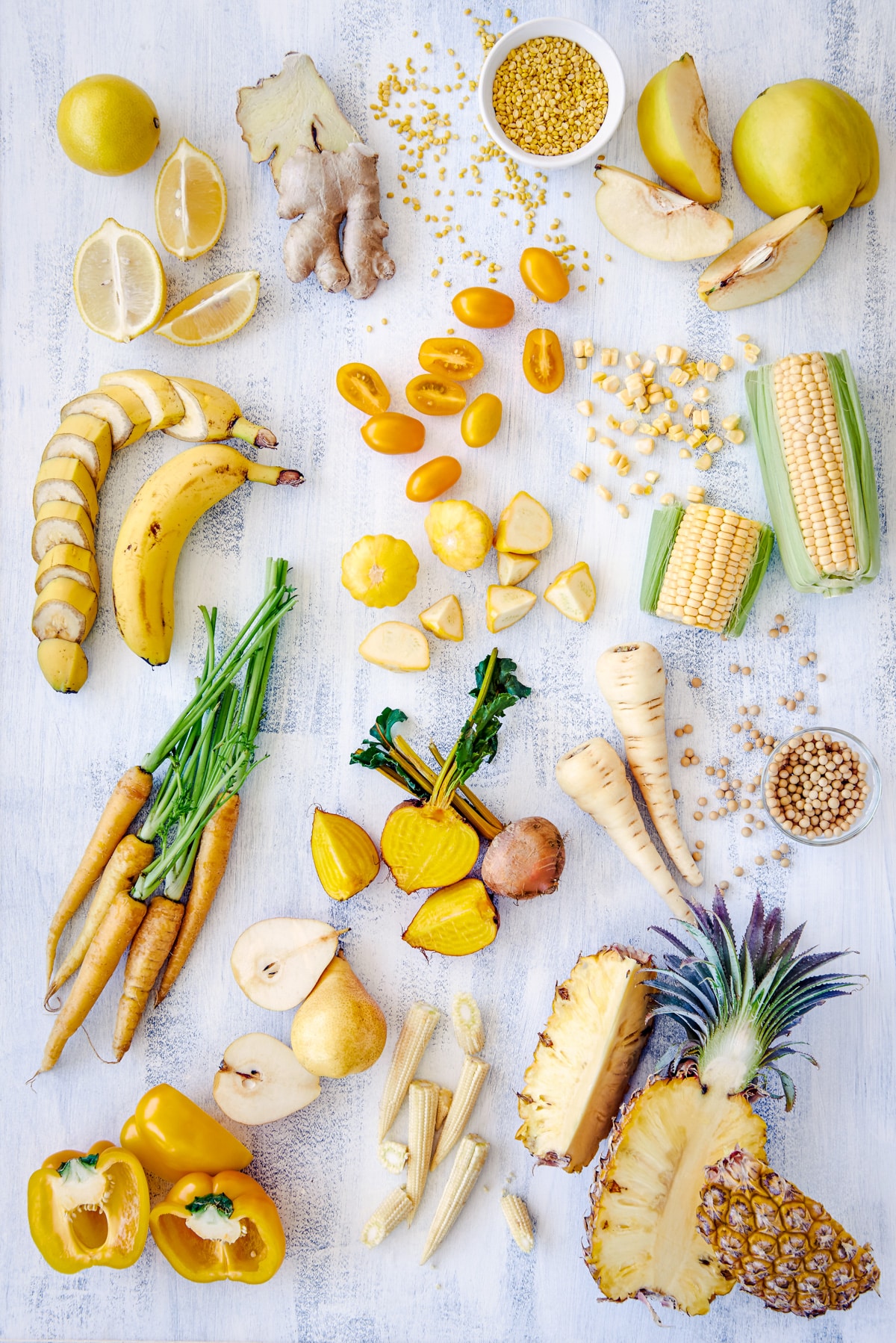
81. Golden Butterwax Bean
These beans have skin that is similar in color to that of the flesh of a lemon. It’s light, bright yellow. On the inside, it contains creamy white beans. They taste very similar to traditional string beans.
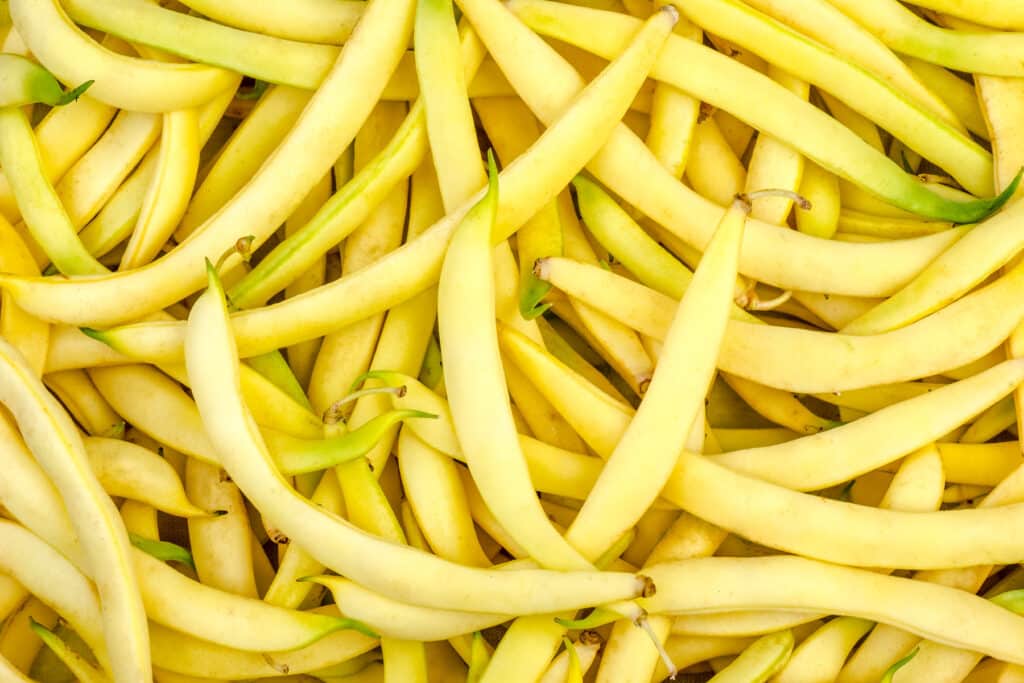
82. Golden Sweet Snow Pea
These almost neon yellow flat beans have vibrant purple flowers. Enjoy them in your favorite stir fry for that perfect crunch. An heirloom snow pea from India, so it isn’t commonly spotted in large supermarkets.
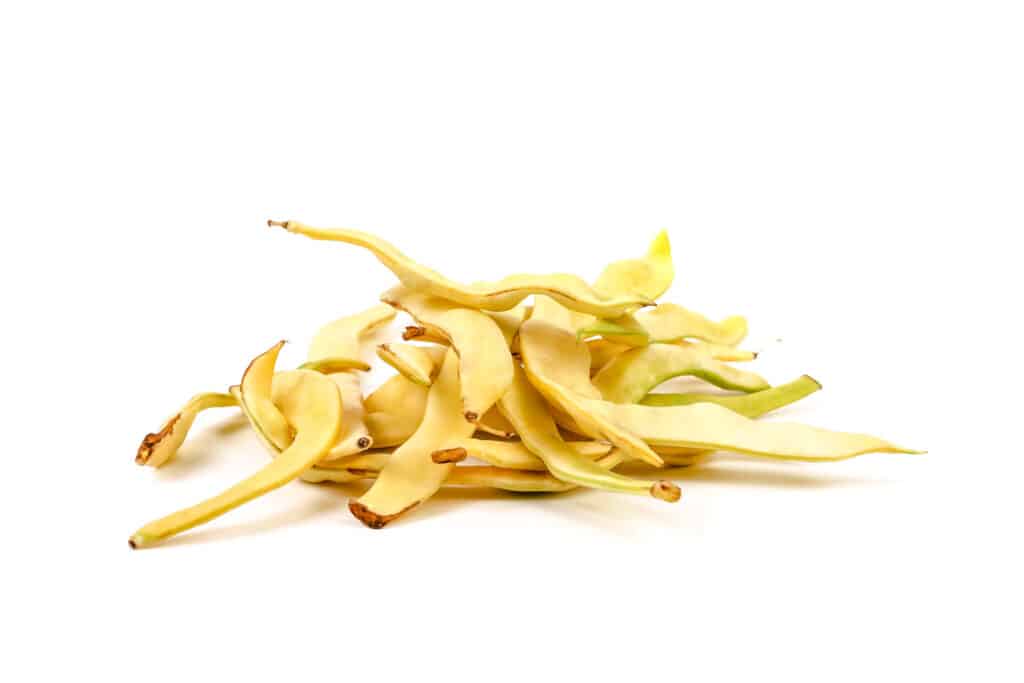
83. Lupini Beans
These warm sunshine yellow beans come from the lupin flower. One cup of cooked lupini beans contains a whopping 26 grams of protein. They are an excellent source of magnesium and a good source of fiber, iron, and potassium.

84. Marvel of Venice Bean
These muted yellow beans are perfect for snacking on raw or enjoying them cooked. They are great beginner beans for gardeners because the beans contrast with the leaves beautifully. This makes them very easy to spot, pick, and eat.
85. Yellow Lentils
All lentils are an outstanding source of plant-based nutrition with a robust fiber and protein content. They’re also high in potassium. But yellow lentils are Moong beans that are hulled and split. In India, they are used as Dal. Yellow lentils resemble split peas but aren’t even remotely the same. This variety is neutral in flavor, making them more palatable to those who dislike the taste of green lentils.
If you’re looking for a new mouthwatering lentil recipe, try this Creamy Vegan Dahl.
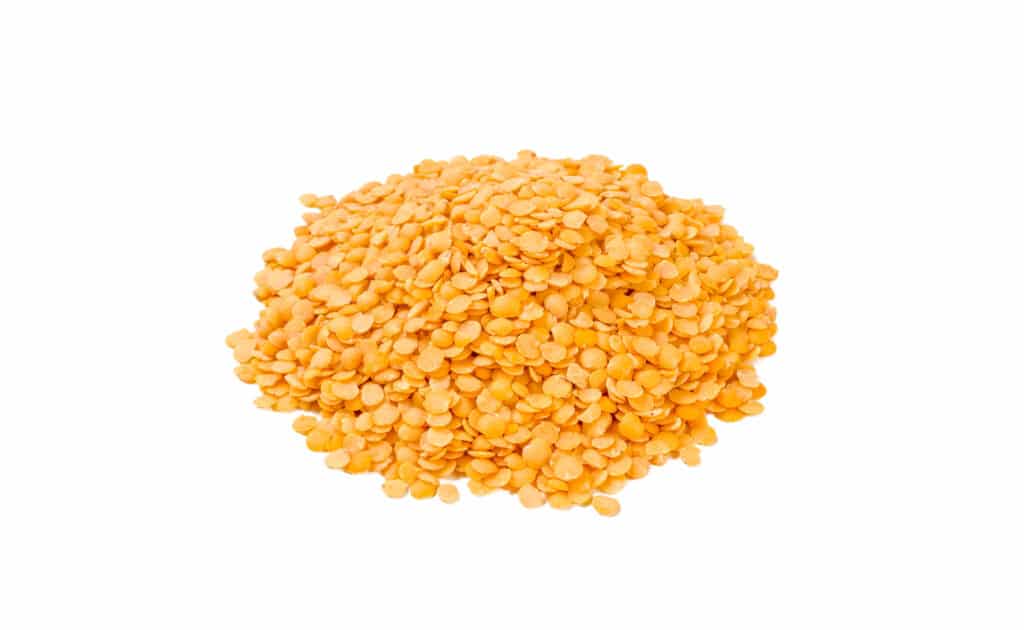
Yellow Whole Grains
Talk about healthy foods! When most people think of yellow grain, they think of yellow corn, but there’s more! Add some of these yellow grains to your daily diet as a staple food in your meal plans.
86. Amish Butter Popcorn
You may not need anything at all to add to Amish butter popcorn. This corn heirloom variety dates back to the 1800s. As the name suggests, it hails from the Pennsylvania Dutch. The kernels are small, round, and almost ivory in color, with a delicious taste you’ll adore.
87. Buhl Sweet Corn
A sweeter corn option, Buhl sweet corn has rich golden kernels. It has that old-fashioned taste that is almost absent from the sweet corn hybrids. Definitely try this one out if you’re a huge fan of corn!
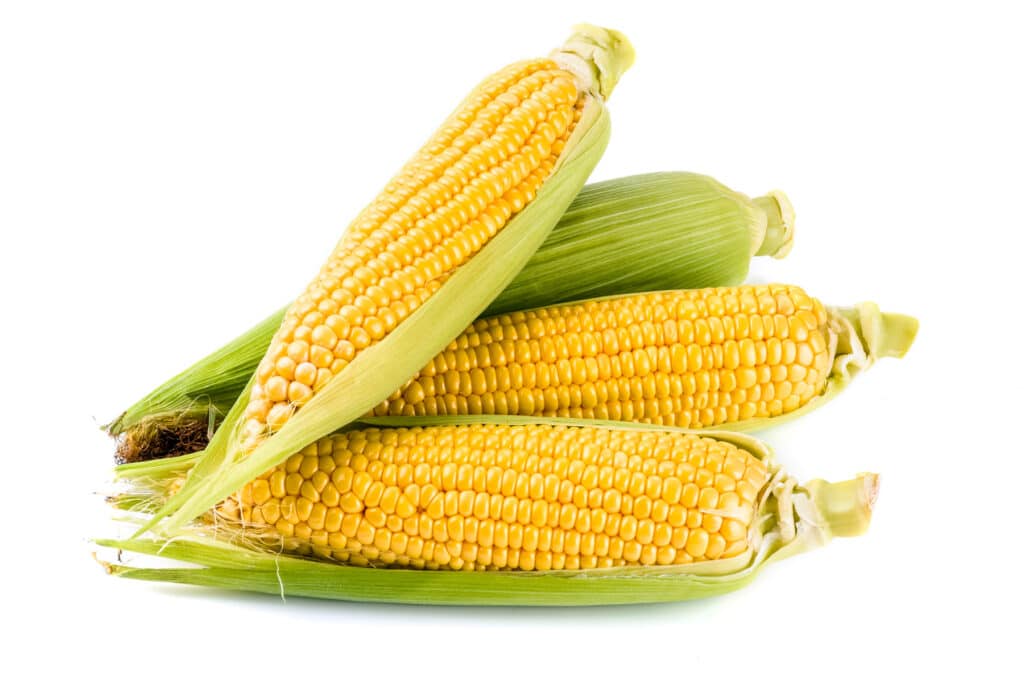
88. Damaun KS Super Sweet Corn
Why not grow your own corn? Damaun KS super sweet corn is sugary sweet and old-fashioned in taste. Brought forth from a seed breeder in Germany, these give you large yellow kernels, making them perfect to eat fresh, can, or freeze to enjoy all year.
If you are looking for a tasty corn recipe, try making this Texas Caviar.
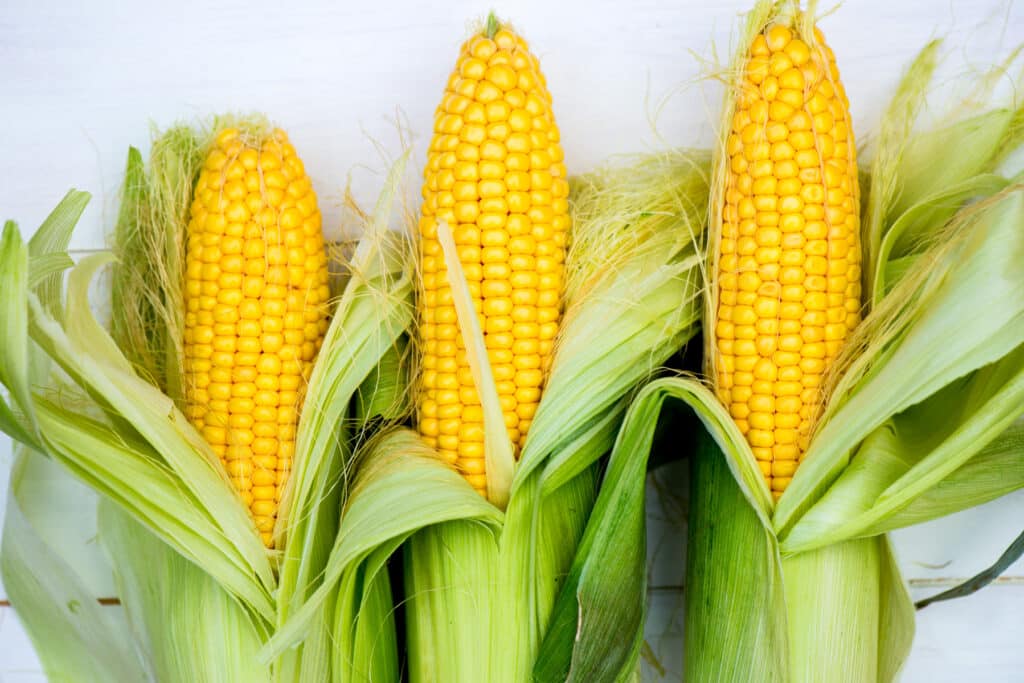
89. Fischer’s Earliest Sweet Corn
As one of the most important crops in the US, corn (maize or sweetcorn) is a staple around the world. This specific variety was developed over 60 years ago in Montana. Flavorful, savory, and sweet all at the same time. This corn is perfect for grilling or cooking. Then add it to your favorite salad.
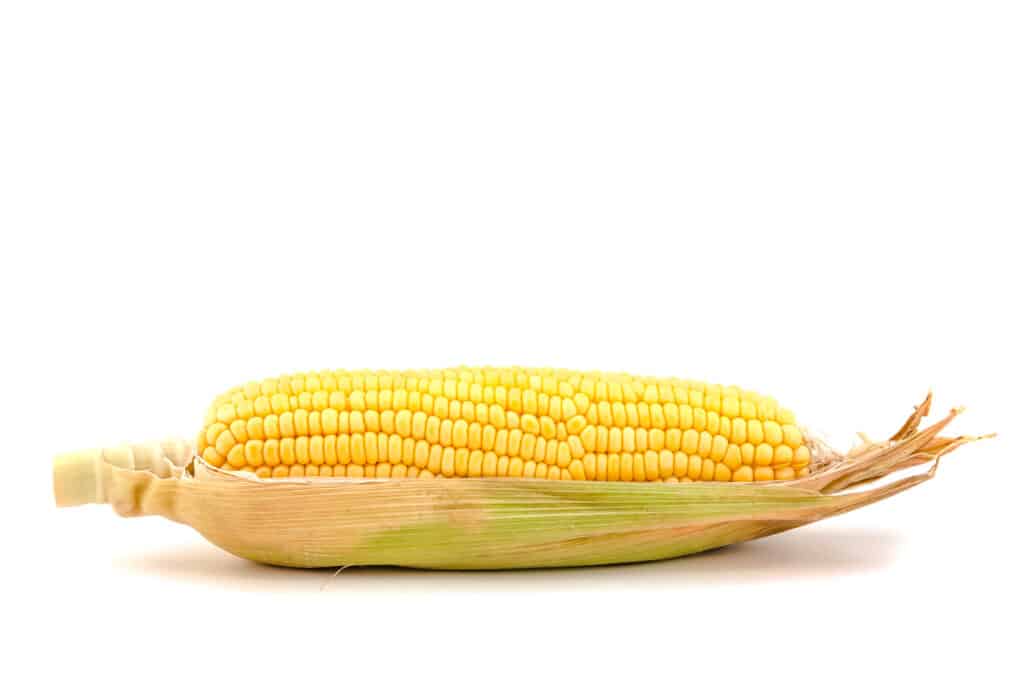
90. Golden Giant Amaranth
The Golden Giant amaranth is a late-season grain with green edible leaves. It’s easy to harvest by clipping the heads and hanging them to dry. Then they can be threshed by way of stomping.
You’ll like this best when you incorporate it with other grains, such as rice, or blend it into flour for making bread. It also looks beautiful as a decoration in your home.
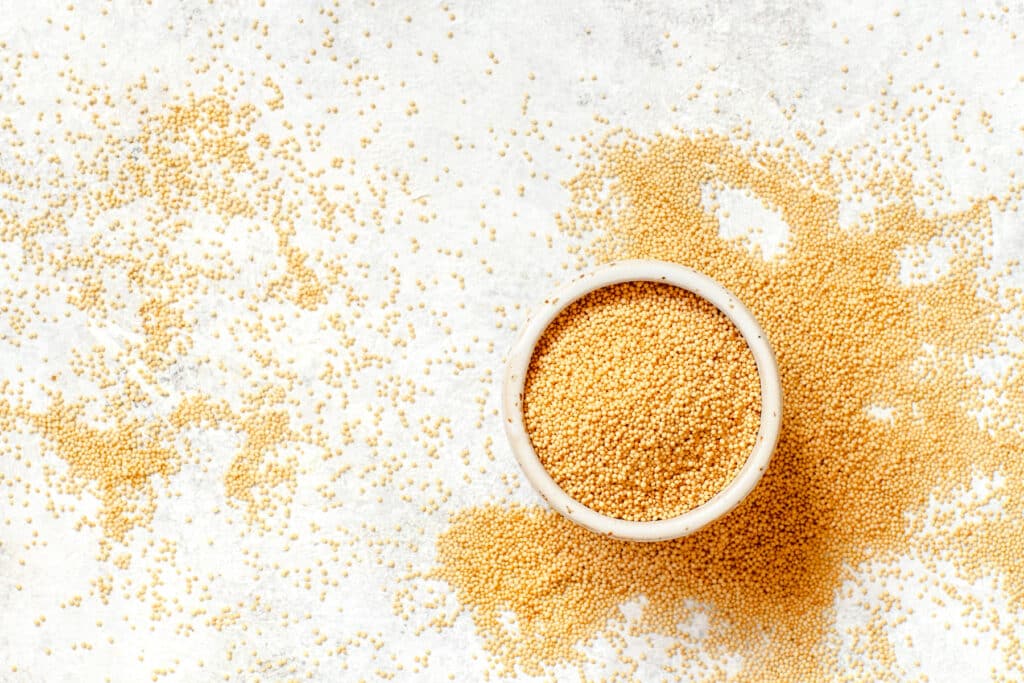
91. Millet
Millet is a cereal grain from the Poaceae or grass family. It’s incredibly popular in Asia and Africa. While it resembles a seed, it has similar nutrition to sorghum. It’s a fantastic gluten-free option that can give you plenty of protein, powerful antioxidants, and fiber. Plus, it has essential amino acids and a high calcium content. In fact, the calcium content is the highest among all cereal grains.
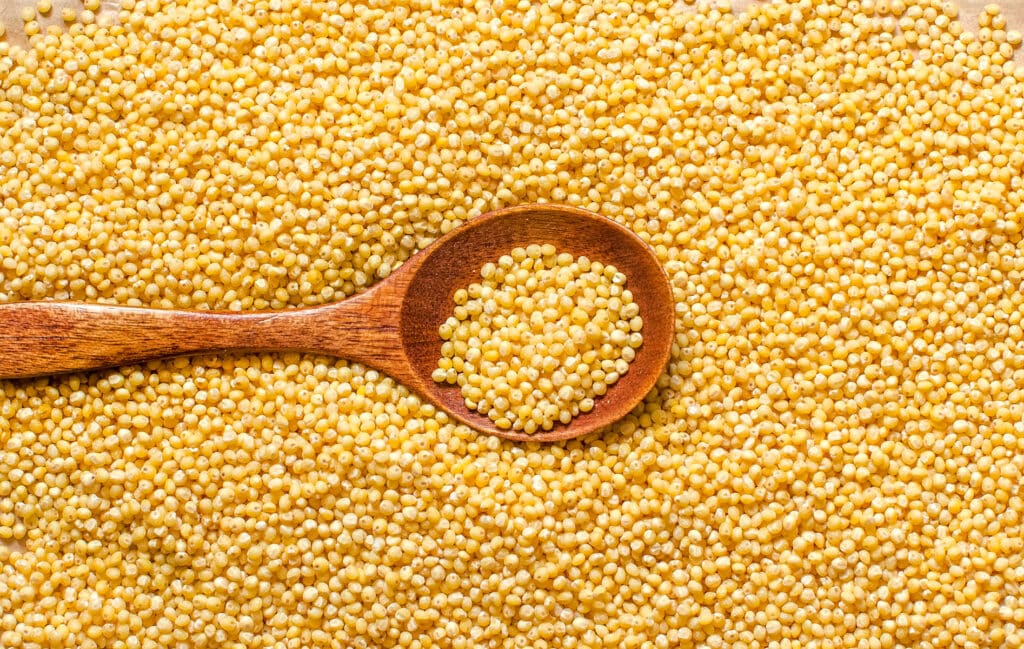
92. Orchard Baby Sweet Corn
This sweet corn is as cute as can be. Its stalks are shorter than commercially grown corn, and it produces two 5-6 inch ears each. This corn is delectable, flavorful, and subtly sweet. Sweet corn is a good source of vitamin C.
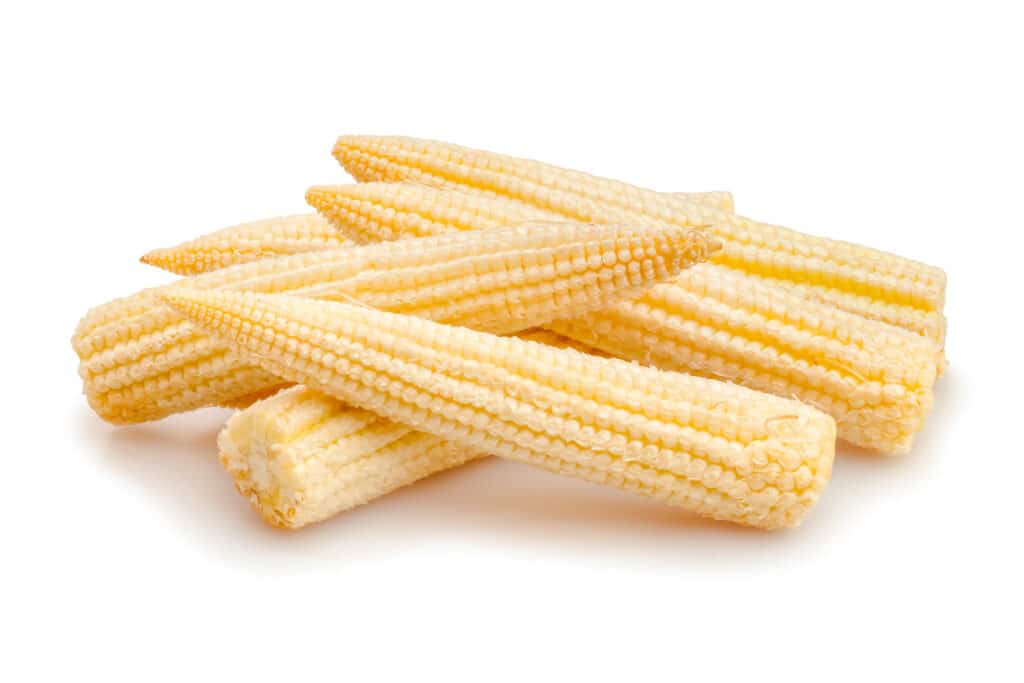
Have you ever wondered about blue foods? If so, check out this post: 80 Foods That Are Blue.
Yellow Flowers
Flowers come in an array of bright colors. All the yellow flowers listed here are edible.
93. Calendula
Calendulas are short-lived perennials from the daisy family. They come from Europe and the Eastern Mediterranean. The flowers or petals are a great treat as a garnish or seasoning, making your dishes more beautiful and tasty. You can also eat the leaves though they are a bit on the bitter side.
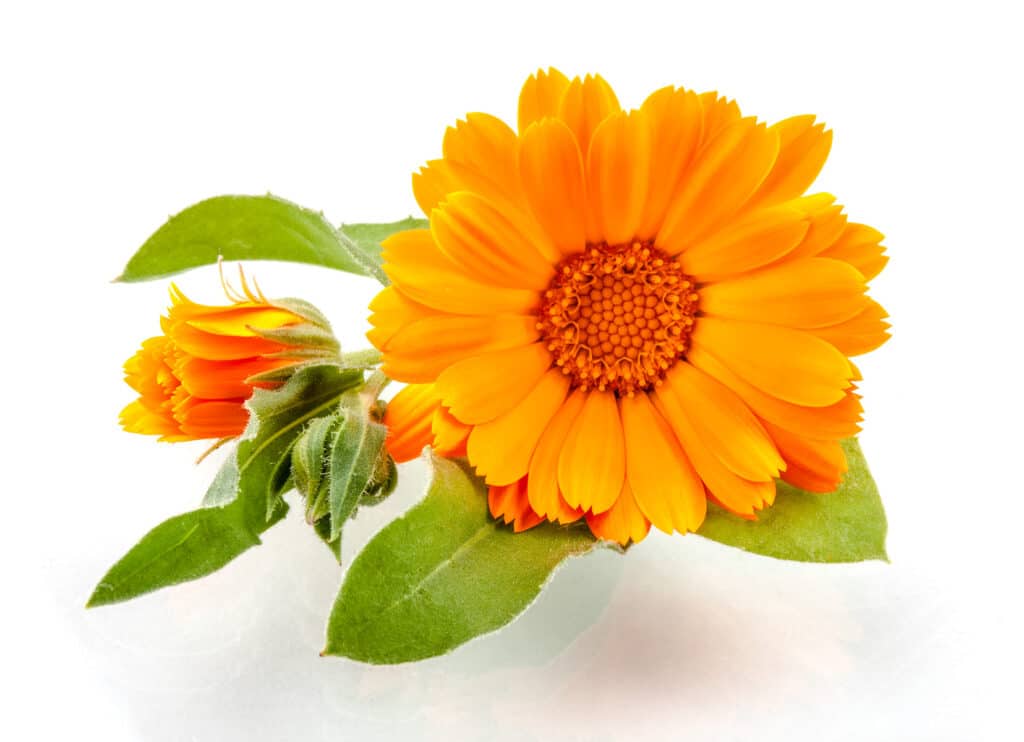
94. Canary Bird Zinnia
These bright color yellow annual blooms not only look lovely but can also be eaten. Before you dig into your bouquet, though, they are bitter so give them a taste before piling them on top of your meals.
Calendula has been used in traditional medicine for centuries to remedy gastric ulcers and upset stomachs. That being said, there have yet to be any peer-reviewed studies showing these benefits.
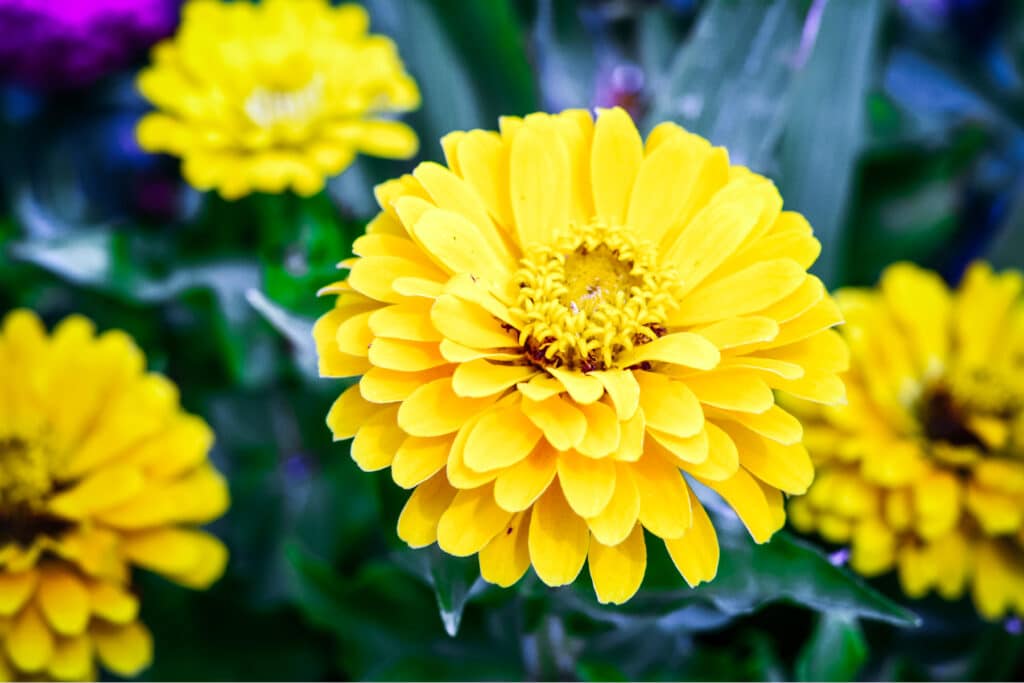
95. Envy Pansy
These pansies are large and tall. They are vibrant yellow with hues of olive green and brown. They are the perfect addition to your favorite salad or iced drink.
Popular marigolds like the Gypsy Sunshine are almost too beautiful to eat. They are excellent in salads and desserts. Make them into a preserve on their own or mix them with other fruits. You can dry the flowers, too, for teas or garnishes. And if you need saffron but can’t find it, this marigold is an excellent stand-in that can give you that natural, beautiful yellow hue. Dried, you can turn them into a tea that will give you an earthy yet citrusy taste.
Do you love making smoothies? Check out this blog post, 30 Best Vegetables For Smoothies.
96. Kelway Golden Chamomile
This golden chamomile is just like other varieties of the herb but with a bright yellow. As such, you can use it to calm down and relax before bedtime. You can eat the flowers and leaves safely, though if you are allergic to ragweed, stay away. It may trigger an allergic reaction in you.
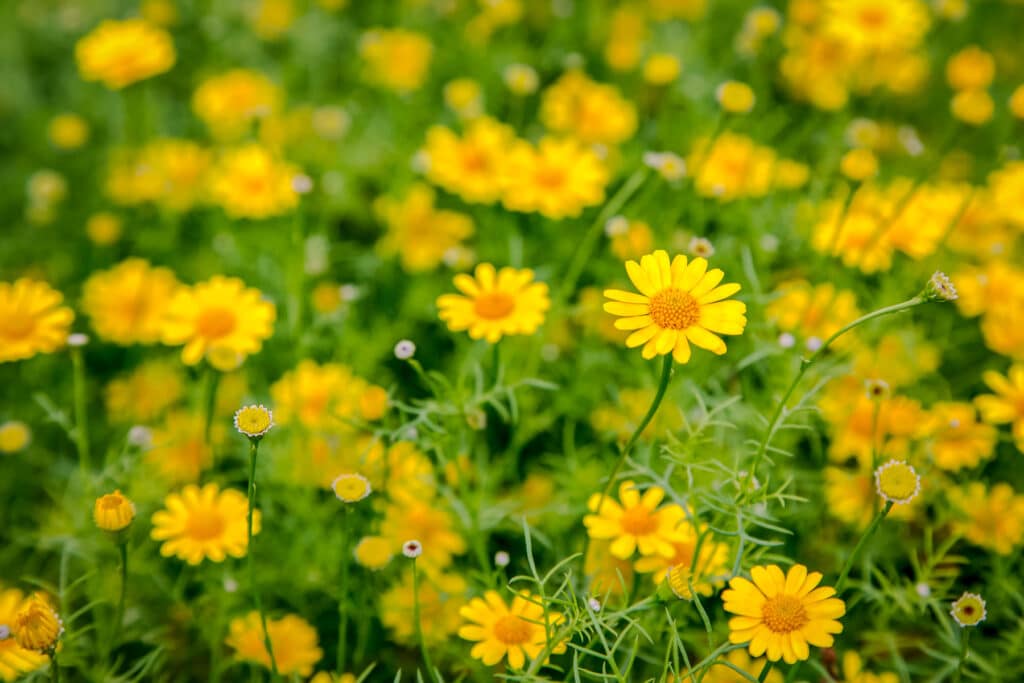
97. Saffron
Among foods that are yellow, saffron comes to mind. It’s the most expensive spice in the world because in order to produce a pound of it, it requires 75,000 saffron flowers! Most saffron today is produced in Iran. If you use this spice, you’ll be treated to crocin, a carotenoid that gives it that signature golden-yellow hue. It has many antioxidants and is said to possibly help with controlling hunger and aiding in weight loss.
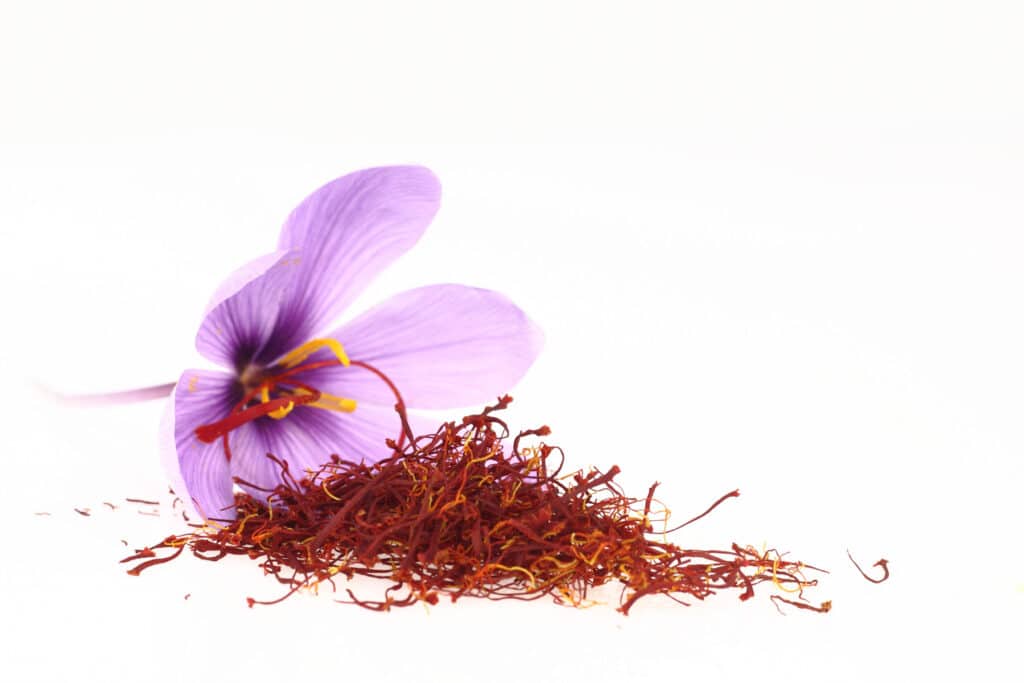
98. Gypsy Sunshine Marigold
Popular marigolds like the Gypsy Sunshine are almost too beautiful to eat. They are excellent in salads and desserts. Make them into a preserve on their own or mix them with other fruits. You can dry the flowers, too, for teas or garnishes. And if you need saffron but can’t find it, this marigold is an excellent stand-in that can give you that natural, beautiful yellow hue. Dried, you can turn them into a tea that will give you an earthy yet citrusy taste.
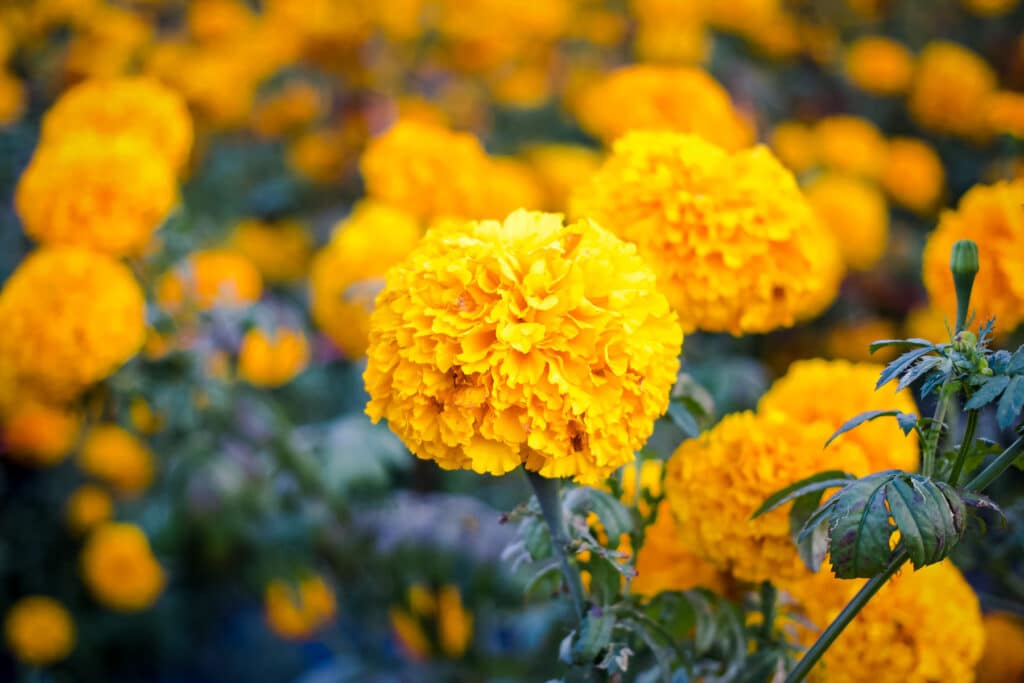
99. Sunflower
Beautiful sunflowers make for a stunning garden or bouquet presentation. And while you may like snacking on sunflower seeds, you can certainly do so with the petals too. They are great for a dash of color in salads with a bittersweet flavor that makes for a nice balance against sweeter tastes in your meals.
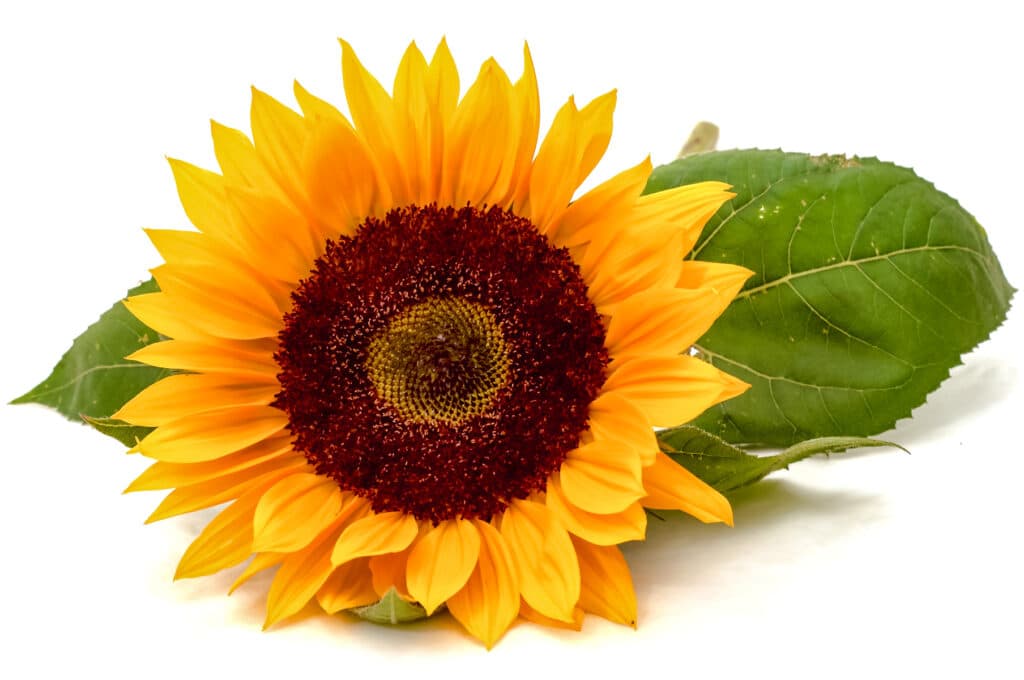
100. Tiger Laeta Viola
With a stunning golden color and petals that feature purple veining, Tiger Laeta violas are beautiful flowers full of fragrance. They’re also edible, making them a lovely way to keep your bouquet from going to waste.
FAQ
Still have questions about those yellow color foods? This should help!
Make the best yellow snacks with cut-up yellow bell peppers, slices of bananas, or any of these yellow foods listed above. Yellow snacks can be made from any fruits that are yellow or vegetables that are yellow. Be creative!
Bananas, lemons, and even yellow watermelons are some examples of yellow fruits. See the list above to learn more about all of the yellow fruit out there!
In general, yellow fruits and vegetables contain vitamins and antioxidants that benefit immunity, heart health, eye health, and skin health. They may also provide a measure of protection from certain types of cancer.
For yellow foods, carotenoids are generally responsible for the color they have. You’ll find carotenoids in all the yellow foods you see, making them a great source of this nutrient.
Oranges are classified in the yellow-orange family of citrus fruits. In some cases, they can be yellow as they move through the stages of ripening.
Mangoes start out green before they start ripening up. As they do, they will turn yellow and then on to orange. It doesn’t need to be orange before you eat it, so enjoy it yellow!
Conclusion: A Final Word On Yellow Foods
Yellow foods can give you certain nutrients that are essential for your best health. It’s certainly good to eat them, though by surrounding these foods with other colors, you’ll hit the full spectrum of nutrition your body needs to be at its best health.
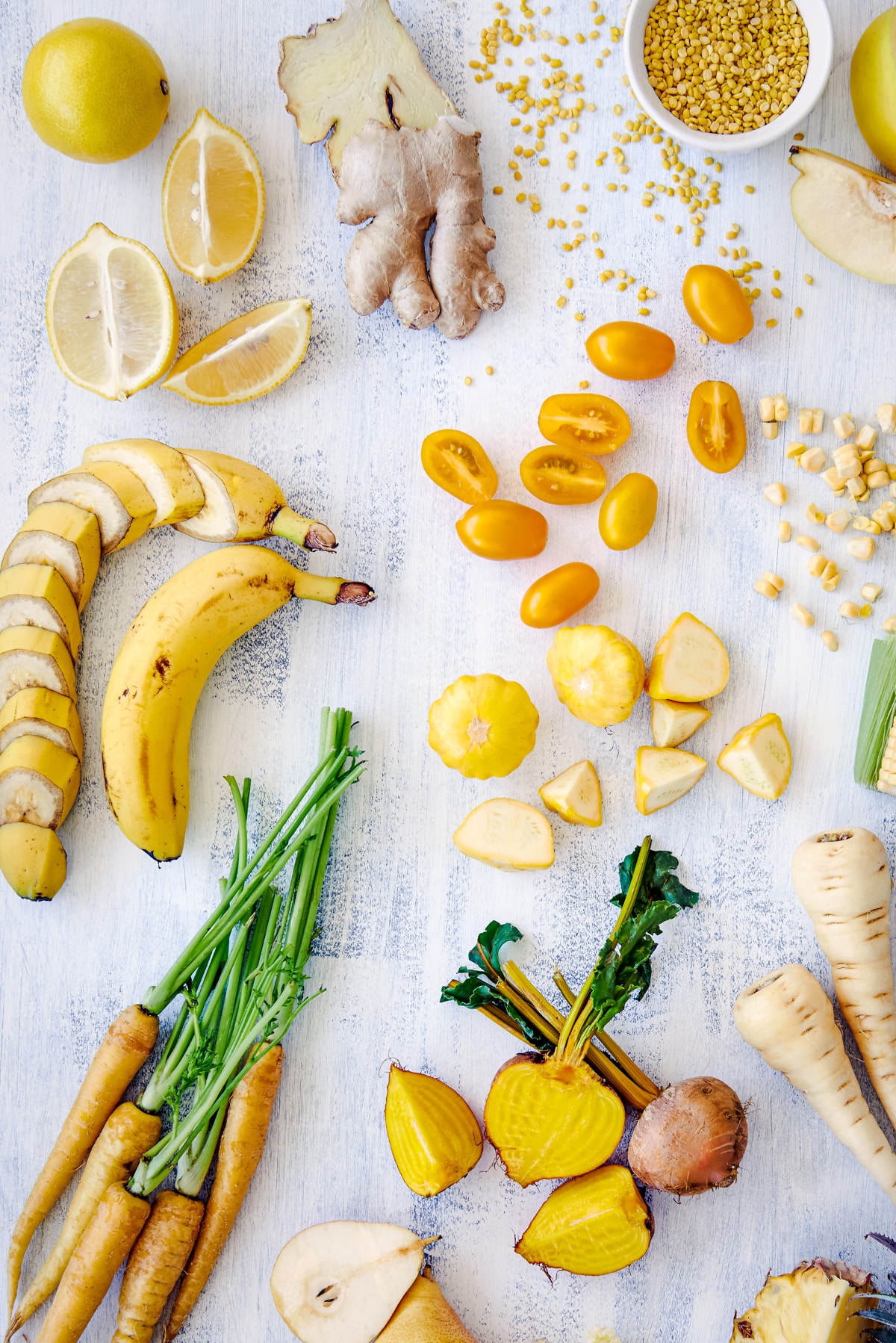
This post may contain affiliate links, meaning I’ll receive a commission if you purchase through those links at no extra cost to you. Please read our full disclosure for more information. Thank you for supporting Raepublic.

This post was so helpful! It must have taken a lot of work to put together. Thank you!
Thanks so much!